

Seasons Science Activities: The Four Seasons of the Year {FREE}
All over the world we have seasons. Right now in California, we are smack dab in the middle of winter. This turns our usually sunny and warm climate into colder temperatures with more precipitation. No matter where you live or what season you are currently experiencing, you can introduce the science topic of the four seasons into your classroom. Our FREE seasons science activities folder is the perfect way to introduce and learn about Fall, Winter, Spring and Summer!

Introducing the Seasons
Kids love learning about the changing seasons because it’s a topic that they can relate to. For example, they usually have a lot of background knowledge about what type of weather accompanies each season. Also, they tend to know what type of clothing is appropriate with the changes that each season brings. To tie in their background knowledge with new concepts, we like to read these books with our kiddos:
- Sunshine Makes the Seasons (Let’s-Read-and-Find… Science 2) by Franklyn M. Branley and Michael Rex
- Watching the Seasons (Welcome Books) by Edana Eckart
- The Reasons for Seasons by Gail Gibbons
- Tree For All Seasons by Robin Bernard
Why Do We Experience Seasons?
We experience seasons on Earth because the Earth’s axis is tilted in relation to its orbit around the sun. It is this tilt that causes the amount of sunlight and heat that the Earth receives to change throughout the year. That change results in the different seasons we experience!
During the summer months, the Earth is tilted towards the sun, causing the Northern Hemisphere to receive more direct sunlight. This results in warmer temperatures. During the winter months, the Earth is tilted away from the sun. This causes the Northern Hemisphere to receive less direct sunlight resulting in colder temperatures.
This video also helps explain why we experience seasons in a kid friendly way… check it out with your students!
Now that you have this background information to share with your students, you are ready to start preparing your seasons science activities folder!
Making the Seasons Science Activities Folder
To start, you will need the following:
- file folders (one per student)
- glue sticks
- crayons or markers
Optional materials for the tree craft:
- paint brushes
- cotton swabs
- cotton
- tissue paper

Folder Cover
Now that you have these materials, your students can start making their folder! First, students will glue the cover page to the front of the folder. We have provided both a color and black/white version. If choosing B&W, have students color and cut along the border. Then, have them glue this page on the front of the file folder. Optional: Students can use the provided labels to label their folder with the Earth Science topic and Next Generation Science Standards (NGSS) covered!

Inside the Folder
Now let’s work on the inside of the folder! First part is the vocabulary reference sheet. We have provided vocabulary words with definitions in color and B&W options. If you prefer to have your students write their own definition, you can use the words on page 13. Next, trim along the border and glue to the inside left of the folder.

After that, they will work on the mini book. Give each student a copy of the book pages. Then, have them cut along the middle to assemble in the correct page order and staple. Students will read while you discuss the four seasons as a class. Have them glue the book to the top right of the folder.

Next up is the “Seasons of Change” assessment. Students will complete the cut and paste activity by sorting each fact under the correct season. Glue the completed activity to the bottom right of the folder.

Back of the Folder
Finally, they are ready for the Seasons & Trees craft! This will be glued to the back of the folder. Start by giving each student the “Seasons & Trees” printable. Discuss how many trees go through changes each season. After that, students will use various materials to show the appearance of each tree during the different seasons! As an example, we used paint and cotton to create “snow” and “leaves”. Tissue paper also works great to create a fun 3-D effect!

More Science Topics to Explore
These completed folders are perfect for keeping all their paperwork and printables that they have worked on while learning about the seasons. In addition, these folders are our favorite way to teach about various science subjects and that is why we have made so many others for you and your students to create! Our other folder topics include:
- WATER CYCLE
- SOLAR SYSTEM
- LIVING vs. NON-LIVING
- ANIMAL LIFE CYCLES
- PLANT Life Cycle & Needs
- Parts of a PLANT
- STATES of MATTER
- FORCES and MOTION
- TYPES of ENERGY
You can also purchase the entire bundle for extra savings…available on TPT and in our shop !

We know your students are going to have so much fun creating their science folder. Not only will they be excited to show off what they learned, but parents and administrators LOVE the finished product! Ready to grab your FREE seasons activities? Simply click on the button below. Enjoy!

More science freebies your students will love:

Butterfly & Frog Life Cycle Observations

5 Interactive Plant Life Cycle Activities
Share this:.
- Click to share on Pinterest (Opens in new window)
- Click to share on Facebook (Opens in new window)
Similar Posts

Movement Activity for Kids {FREE}
It’s so important to give children time every day to get their bodies moving. Our “Let’s Get Moving” printable makes fitness fun and easy! This movement activity for kids is perfect for brain breaks, indoor recess and even class parties. Physical activity doesn’t just improve fitness — it also reduces stress and helps with confidence…

Butterfly & Frog Life Cycle Sequencing Cards {FREE}
Spring time is the PERFECT time to introduce your students to the world of butterfly & frog life cycles! Children always seem so amazed by the magnificent transformation that each of these animals go through during their lifetime. Butterflies and frogs can be spotted more frequently in nature as the weather starts warming up. By…

FREE Science Reading Comprehension Passages
What is Reading Comprehension? Reading comprehension is one of the most crucial skills that your students will learn. It is the ability to not only read, but understand, process, and recall what is read. A child who is proficient in reading comprehension will construct meaning from both narrative and expository text structures. Narrative texts, which…

How To Build a Snowman Writing and Art Craft
This is the perfect time of year to explore expository writing using a fun and easy winter activity that makes one of the cutest crafts to display in your classroom! Students use prior knowledge (or you can even brainstorm as a class) to correctly sequence the steps of how to build a snowman. To get…

Natural Disaster Science Activities for Kids
Recently, we have been investigating some of Earth’s most destructive forces by exploring natural disaster science activities! No matter where you live, you have probably had to brace or prepare for a natural disaster in your lifetime. For instance, because we live in California, earthquakes are always going to be at the forefront of our…

Spelling Choice Board Activities
A few years ago, we started using spelling choice board activities in our classroom and have never looked back! Educators have such an important job of building a strong spelling foundation for our students. While this can be pretty challenging, you can make it easier by introducing fun activities to keep your little learners engaged…
- Skip to main content
- Skip to primary sidebar
The Measured Mom
Education resources for parents and teachers
PS PK K 1 2 3 5 Comments
Science experiments and STEM activities for every season
This post contains affiliate links. As an Amazon Associate I earn from qualifying purchases.
Sharing is caring!
- Pinterest 389
Looking for seasonal science experiments and STEM activities? You’ll find what you’re looking for in this post!
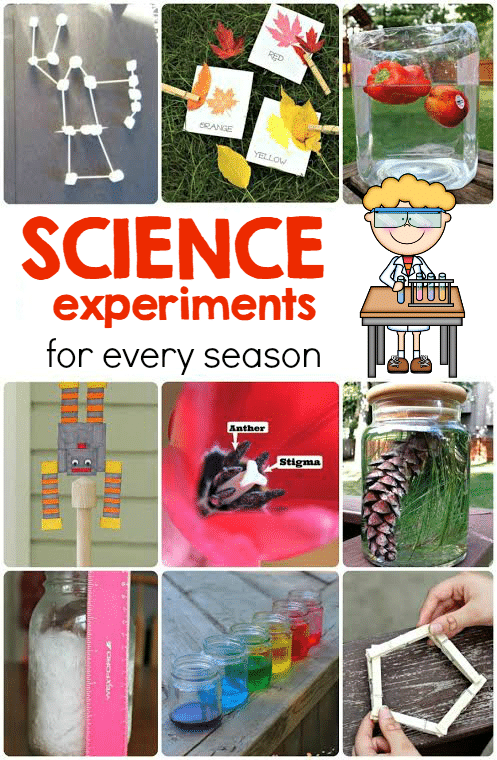
As we adjust to life as a family of eight, my blogging friends have been sharing fabulous guest posts! This week we welcome the talented Jacquie of Edventures , where she features hands-on fun and learning activities for kids of all ages.
Here’s Jacquie…
Whether you know it or not, we are all raising junior scientists!
Kids have a knack for asking those inquisitive questions. What , why and how are three words that help children to express their curiosity and show they are keenly observant and looking for answers.
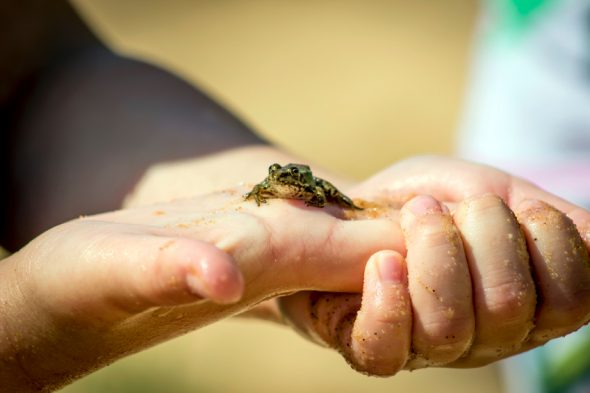
Technology, engineering and math are constantly used while exploring many science concepts — which is why so many schools have moved to teaching “STEM” activities as part of their curriculum instead of science alone.
When introducing kids to STEM activities, the goal is less about finding the right answer and more about the process . Science is one area where we all learn from failures!
This collection of seasonal, hands-on science experiments and STEM activities will inspire questions and exploration opportunities all year long!
Science Experiments with free printable activities
Each of the activities in this group focuses on fun seasonal experiences and includes a free printable to help facilitate the experiment!
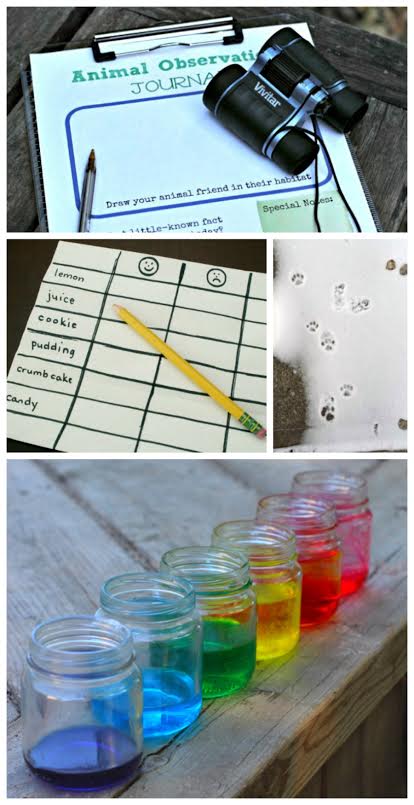
- See who’s walking through your neighborhood or backyard by Exploring Animal Tracks in Winter .
- Test which Items are Magnetic with this sensory science experiment.
- Explore the science of music with this colorful Kitchen Water Xylophone activity .
- Create a chemical reaction that seems like magic as you Make a Penny Turn Green .
- Kids can work on their detective skills while Observing & Recording Animal Behaviors .
- Discuss the HOW & WHY behind eco-friendly activities with this Earth Month Scavenger Hunt .
- Combine math & garden science with this fun “ How Fast Does Your Plant Grow? ” project!
- Test your senses with this Lemon Food Taste experiment .
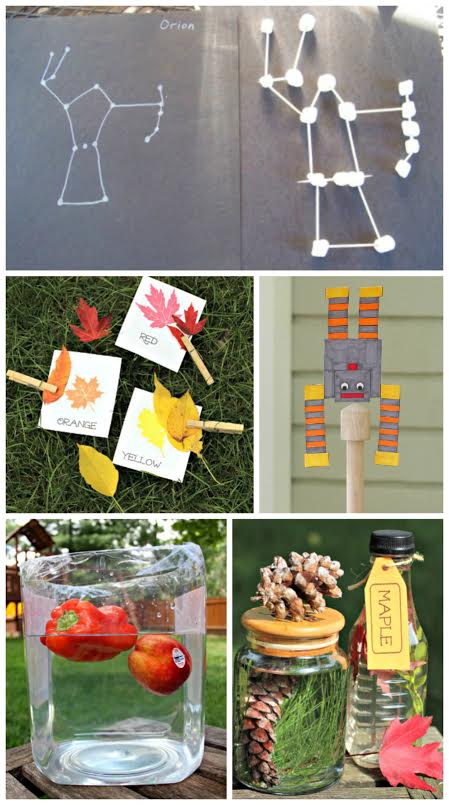
- Identify nocturnal animals along with what happens when the sun goes down with this Nighttime Scavenger Hunt activity.
- Study the stars while creating Marshmallow Constellations with printable constellations & star map.
- Learn the Names of Woodland & Marine Animal Groups with this fun “ What do you call a Group of … ” activity
- Use the scientific method as you Make Ice Cream in a Bag !
- Kids can practice math skills (categorizing, graphing, finding the mode and more!) as they head out on a Leaf Hunt activity
- Learn about Tree & Seed Identification with this Name That Tree! nature activity
- Test density (and learn a little physics) with this classic Sink or Float experiment : Does Your Food Float?
- Explore gravity and balance with your own Balancing Robot!
Monthly STEM Activities
These 12 STEM expriences will help kids connect science, technology, engineering and math to activities in their everyday life.

{January} While celebrating the 100th Day of School, practice number literacy with this list of 100 Items to Use to Count to 100.
{February} Kids will really enjoy testing their “snow melt” theory as they learn how much water is in snow once it melts !
{March} Enjoy testing a few physics concepts as you fly kites !
{April} Learn about pollination while dissecting and identifying the parts of a flower.
{May} Use items from around the house to engineer your own boat.
{June} Learn how a leaf breathes with this super simple science experiment.
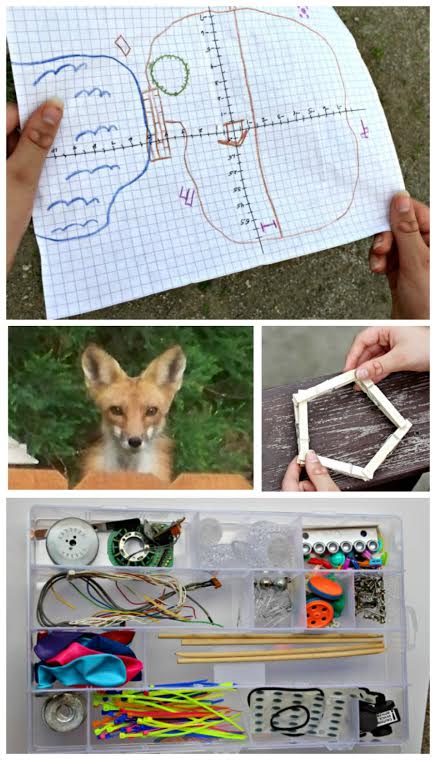
{July} Science at the Beach activities examine sand, tides and habitats.
{August} Explore coordinate graphs with a fun hands-on math activity while plotting points at the park.
{September} Get involved in real life data collection with one of these 12 Citizen Science projects for kids & families.
{October} Explore the Science of Sound by creating your own Gong using only a spoon and peice of yarn.
{November} Make your own Tinker Box & construct robot puppets.
{December} Build shapes and practice geometry using clothespins.
We hope you enjoy these science and STEM activities with your children!

Jacquie is the founder of Edventures with Kids , a blog that shares unique ideas for keeping kids creative & curious. She believes that kids are more likely to enjoy learning when they are offered hands-on activities and the opportunity to explore new places. ‘Edventures’ encourage families to try new activities, get outdoors, travel together and connect kids with great books. You can also find her on Facebook , Google+ , Twitter and Pinterest .
Love Freebies?
Subscribing to our email newsletter is completely free. And when you do, you'll get access to our library of subscriber freebies! Sign up below to get access to a wonderful variety of math and literacy resources.
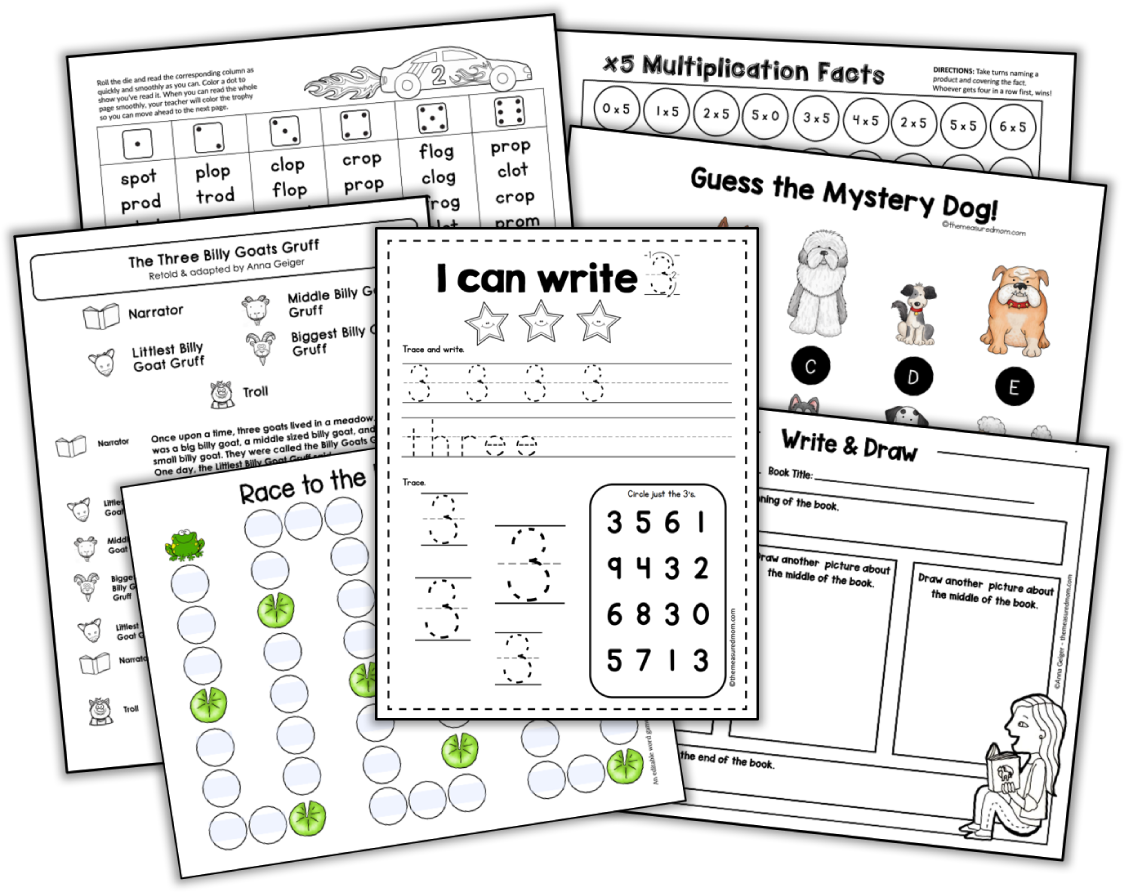
You May Also Enjoy These Posts:

Reader Interactions
March 6, 2016 at 5:40 pm
What great ideas! Thanks for sharing.
Anna Geiger
March 9, 2016 at 6:42 am
You’re welcome, Jan!
March 6, 2016 at 3:44 pm
What great ideas! 🙂
I hope you get a chance to try some of them, Tammy!
March 9, 2016 at 5:51 pm
I am hoping to when I start teaching next school year! 🙂 Elementary is going to be my gig! Yea!
Leave a Comment Cancel reply
Your email address will not be published. Required fields are marked *
This site uses Akismet to reduce spam. Learn how your comment data is processed .
Science of Reading Resources
Popular freebies.
Get instant access to science of reading workshops and over 2000 printable resources!
Become a Member
Science Fun
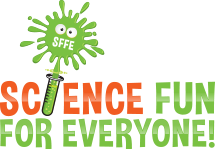
Why Do We Have Seasons Weather Science Experiment
In this fun and easy weather science experiment, we’re going to explore why we have seasons.
- Medium sized Styrofoam ball from the craft store
- Lamp with the shade removed
- Pencil, bamboo skewer, or knitting needle
- Sharpie or marking pen
Instructions:
- Mark the top of the ball with the letter N.
- Mark the bottom of the ball with the letter S.
- Draw a circle around the middle of the ball to represent the equator.
- Set the lamp in the middle of a room.
- Push the pencil through the N and S marks on the ball.
- Now tilt the N slightly toward the lamp.
- Turn on the lamp and observe what parts of the ball are illuminated.
- Be sure to note the wall toward which the ball is pointing. You will need to point the ball toward this wall for the remainder of the demonstration.
- Now move 90 degrees from the spot of your original observation.
- Observe which parts of the ball are illuminated at this location.
- Move another 90 degrees and observe.
- Now move the final 90 degrees and observe.
EXPLORE AWESOME SCIENCE EXPERIMENT VIDEOS!
How it Works:
Certain seasons have longer and shorter days, not because of the Earth’s distance from the sun, but because of the tilt of the Earth.
Make This A Science Project:
Try tilting the Styrofoam ball differently and observe any changes. Try holding the ball further from the lamp. Try holding the ball closer to the lamp.
EXPLORE TONS OF FUN AND EASY SCIENCE EXPERIMENTS!
SUBSCRIBE AND NEVER MISS A NEW SCIENCE FUN VIDEO!
previous experiment
Next experiment.
- Skip to primary navigation
- Skip to main content
- Skip to primary sidebar

- FREE Experiments
- Kitchen Science
- Climate Change
- Egg Experiments
- Fairy Tale Science
- Edible Science
- Human Health
- Inspirational Women
- Forces and Motion
- Science Fair Projects
- STEM Challenges
- Science Sparks Books
- Contact Science Sparks
- Science Resources for Home and School
20 Autumn and Fall Science Experiments
September 25, 2023 By Emma Vanstone 16 Comments
Over the many years I’ve been writing Science Sparks, Autumn has always been my favourite season to design themed activities for. I love the colourful leaves, dark nights, cooler weather, and of course, the run-up to Christmas is always exciting too! This collection of fall science experiments and activities makes me smile every time I read it and hopefully has something to excite kids ( and adults ) of all ages. Kids can find out why leaves change colour , how trees disperse their seeds, why animals hibernate and more!
I also have a fun collection of fall STEM challenges you might like!
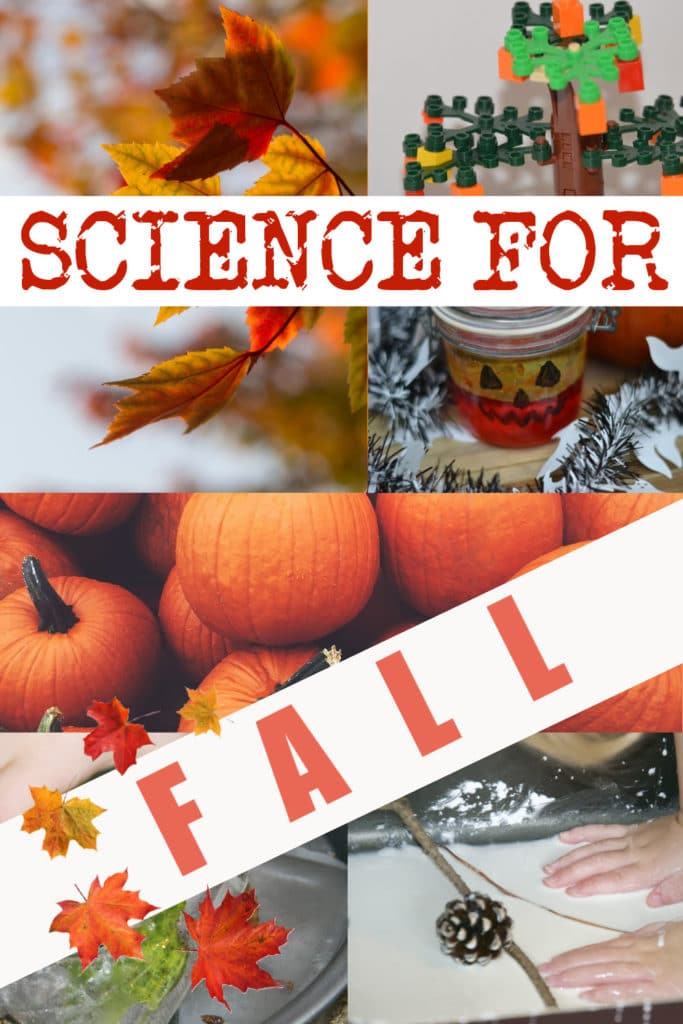
Fall Science Experiments for Kids
Seeds and leaves science.
Create your own exploding seed device or spinning helicopter seeds to learn about seed dispersal . These lovely hands-on activities work especially well after going on a treasure hunt to search for different types of seeds.
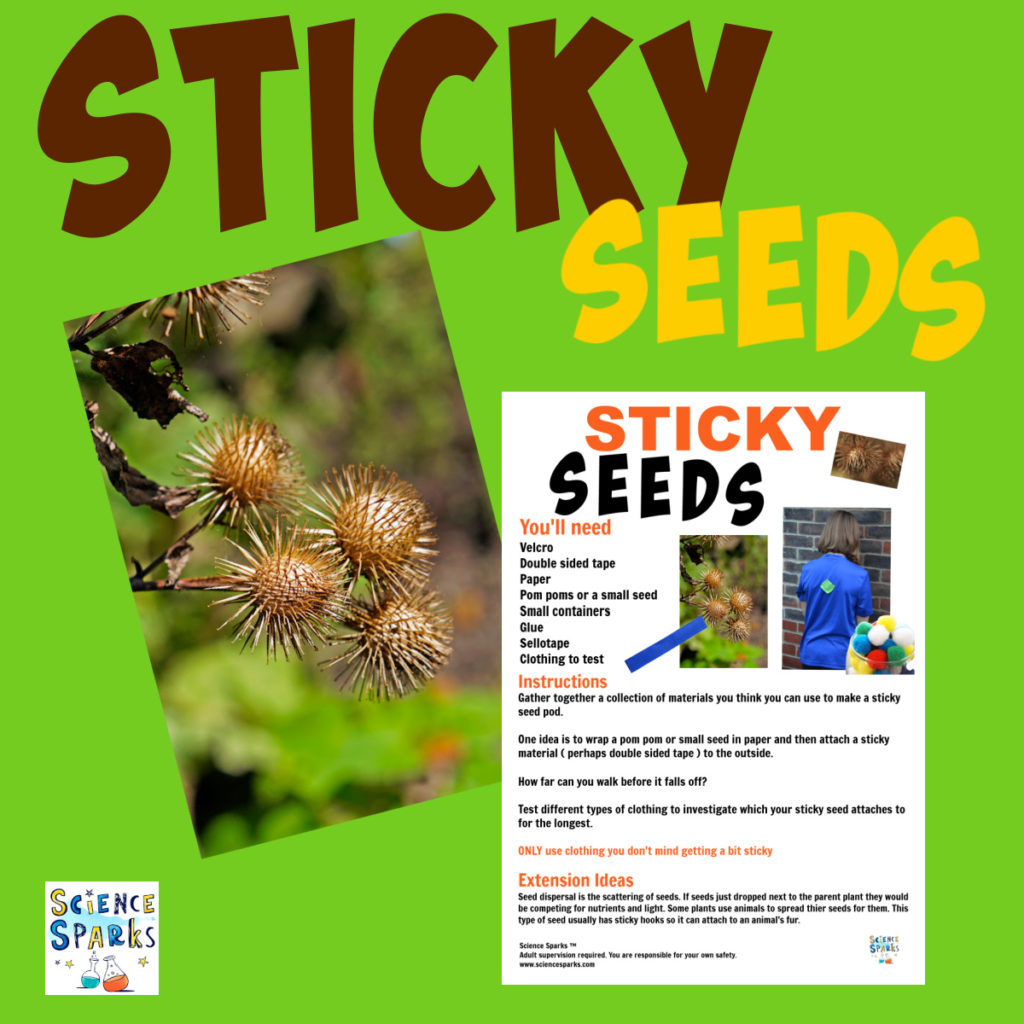
Playdough to Plato has a brilliant leaf chromatography experiment .
Find out how to predict the weather with pinecones !
Fall Kitchen Science Experiments
Learn about changes of state in the kitchen by making toffee apples and treacle toffee . Which is your favourite?
Make spiced apple cider and learn about filtering at the same time. Our spiced apple cider is not only a great science activity, it tastes amazing too!
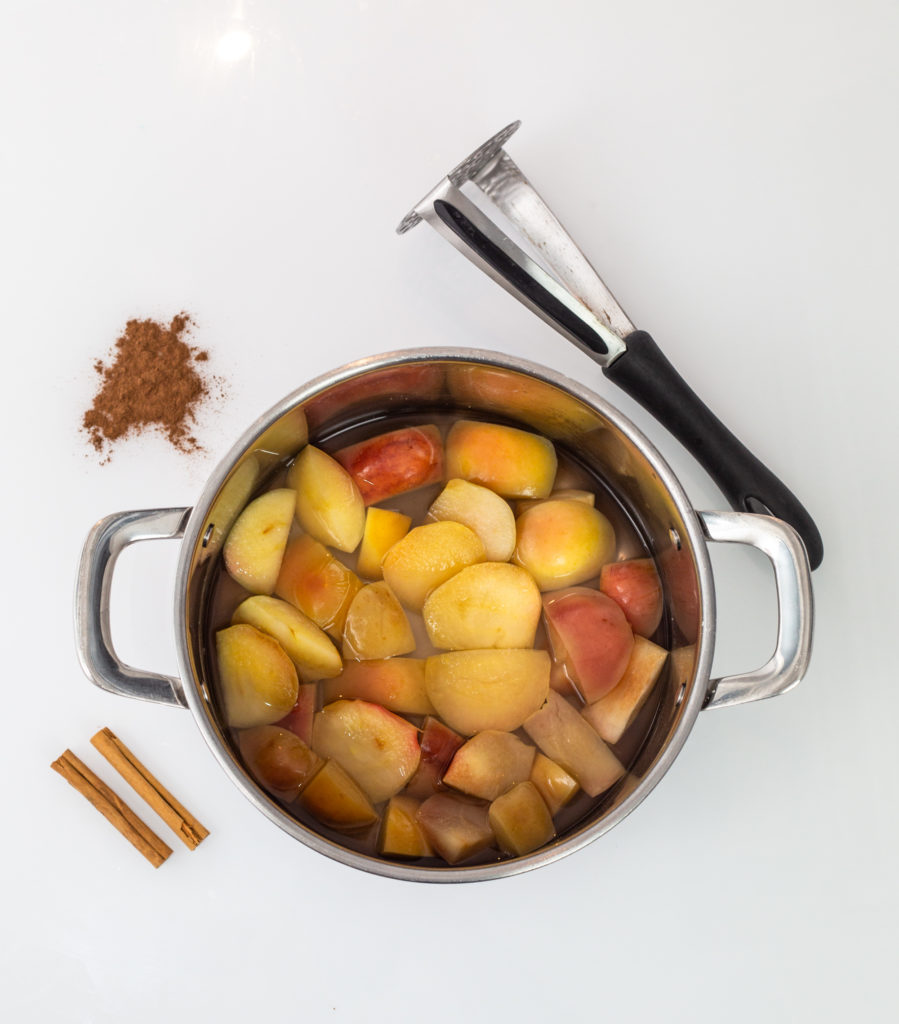
Try some apple bobbing to discover why apples float on water. Apple bobbing is a great Halloween party idea , too!
Fall Sensory Science Activities
Get creative indoors or out with some lovely autumn themed ice . Try adding a little salt ( be careful as this makes the ice feel much colder ) to melt it faster, or use a pipette to drop warm water over the surface.
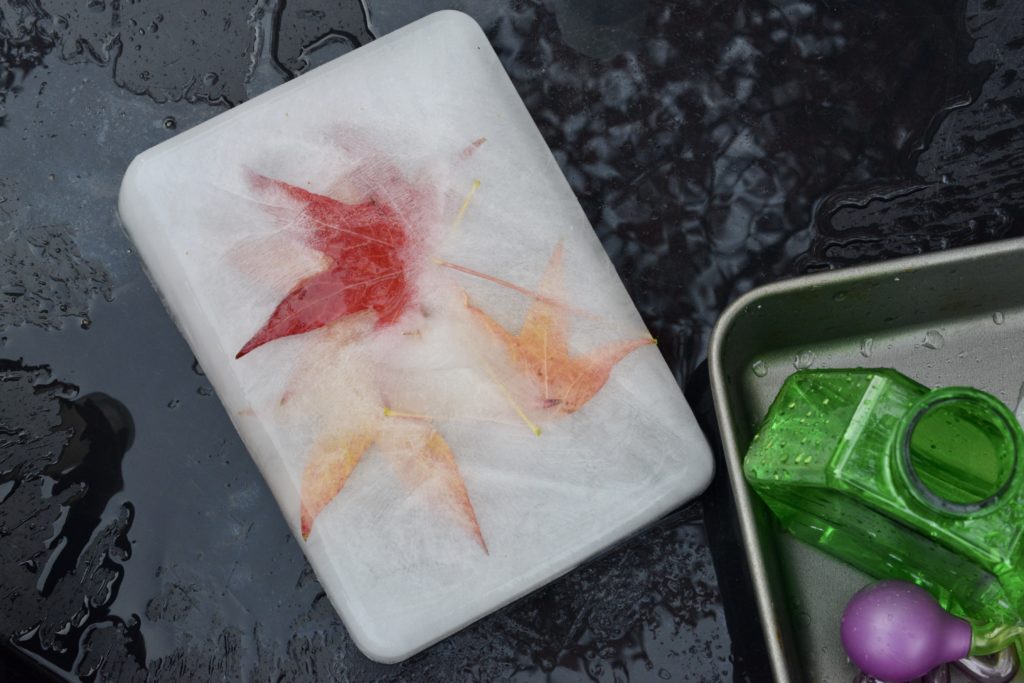
Use leaves to make prints in play dough and learn to identify different types of leaves.
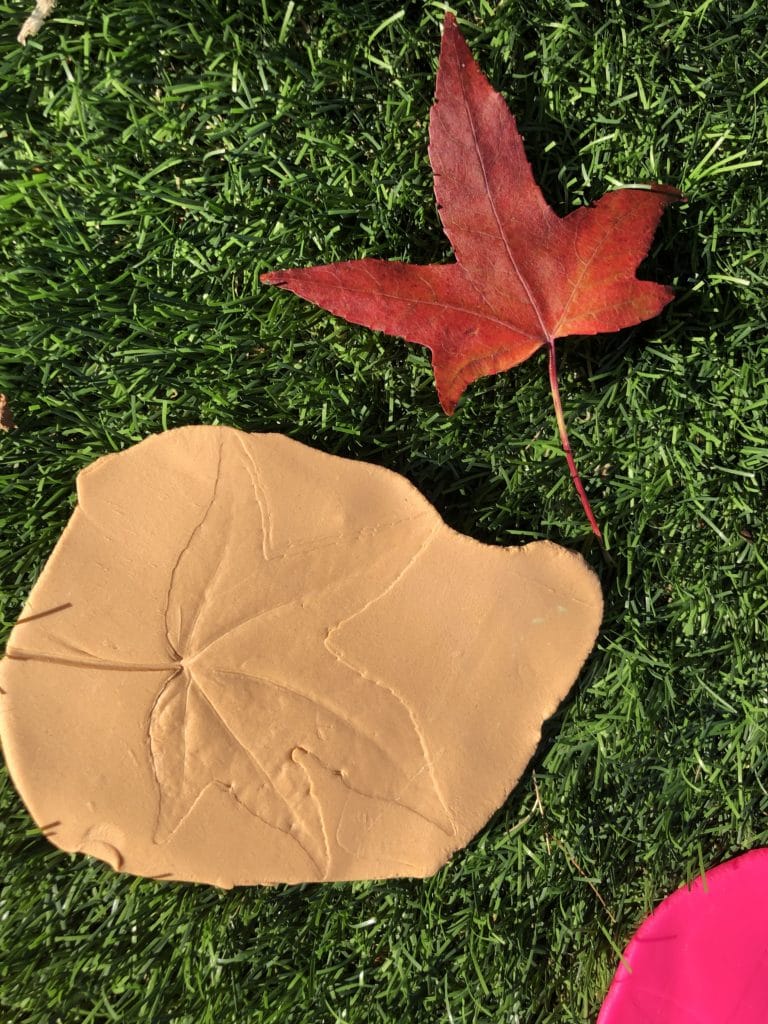
Get messy with some Autumn gloop . Cornflour is a lovely sensory material that can be scrunched up into a ball when pressure is added and turns back into a liquid when the pressure is removed. Cornflour gloop or slime is known as oobleck and is a Non-Newtonian liquid.
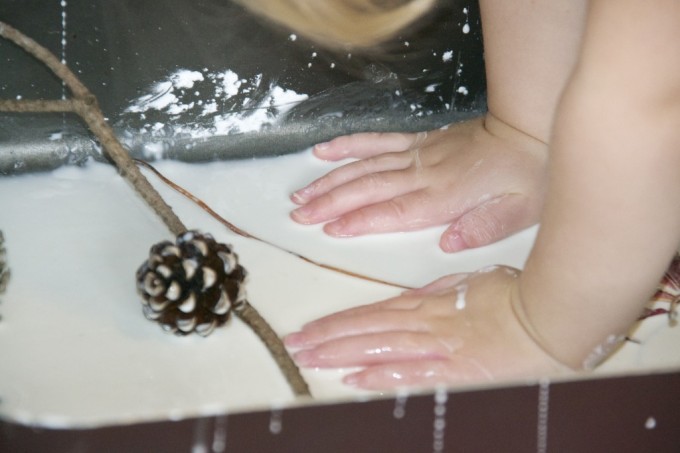
Have some sensory fun with blackberry playdough , from Rainy Day Mum.
We love this beautiful autumn sensory table from The Imagination Tree.
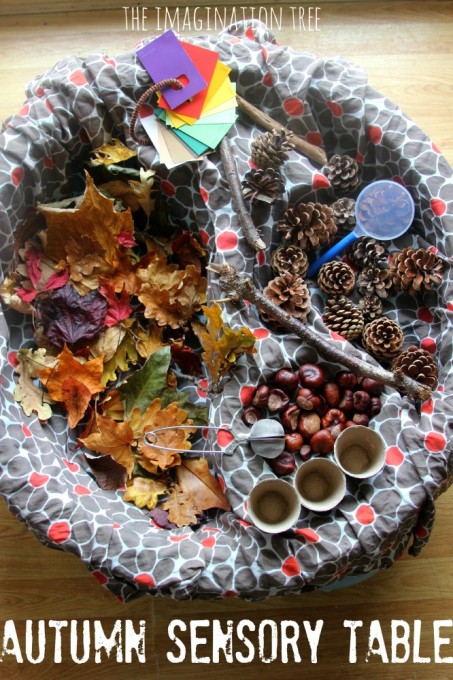
More activity ideas for autumn
Go on a walk and collect autumn treasures for a scavenger hunt .
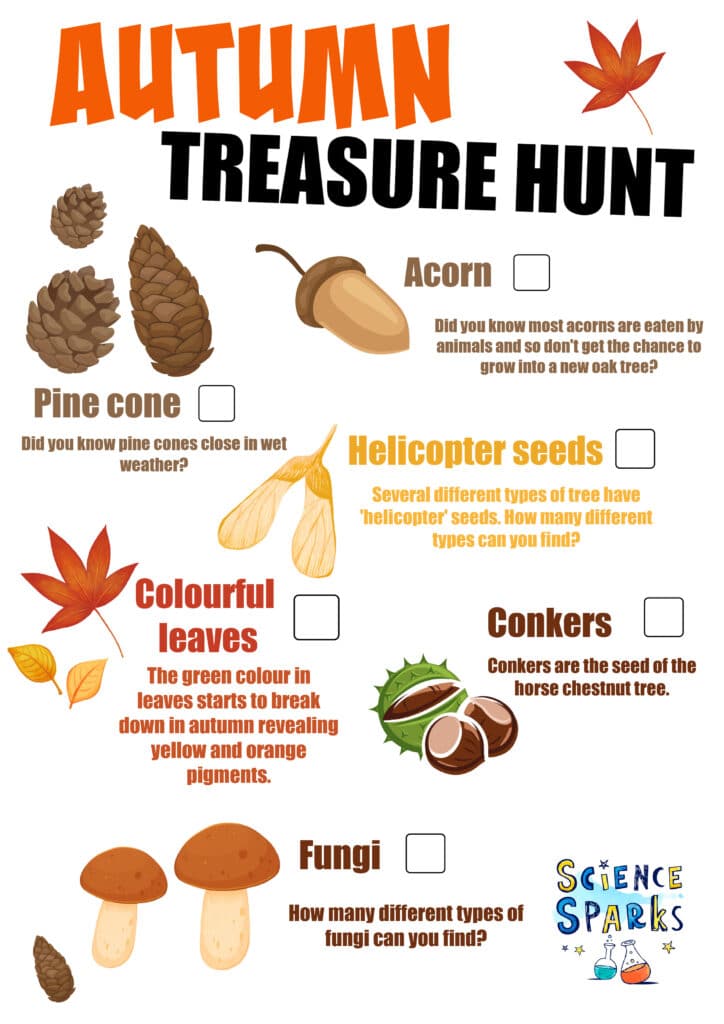
Try to model the changing seasons with LEGO . This is a great team activity and can be made into a challenge to find different ways to show how the changing season affects the environment.
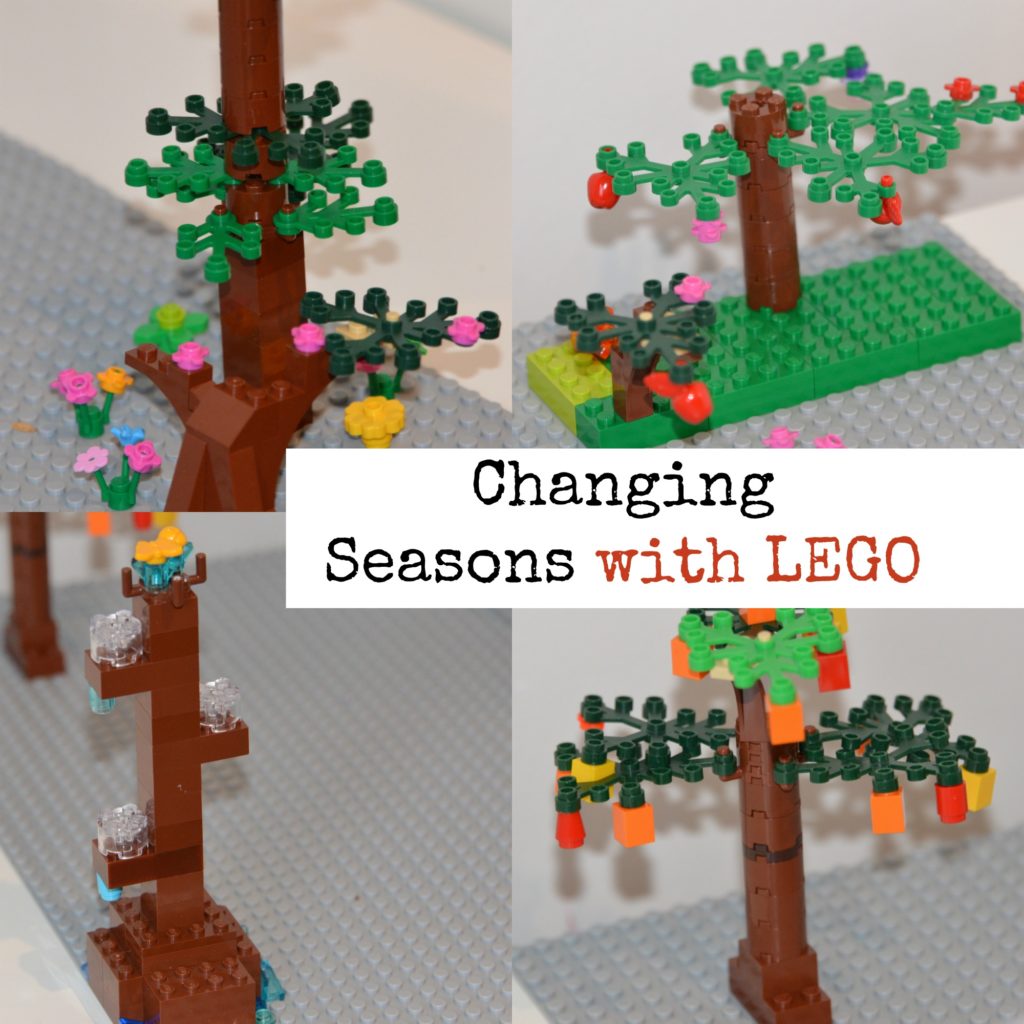
Try some autumn themed weighing and measuring with pumpkins .
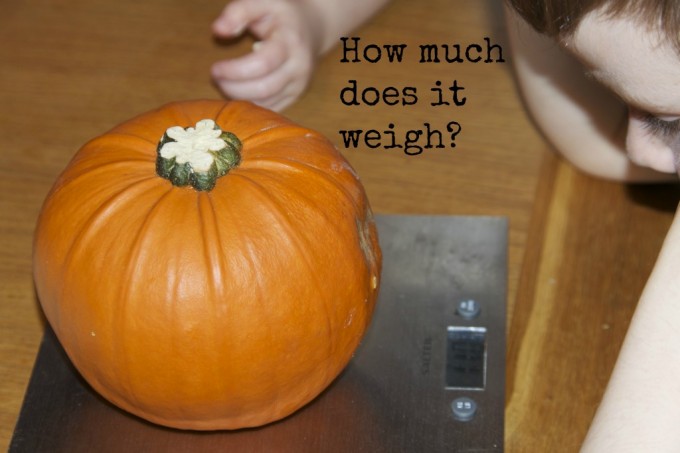
Have some fun in the forest estimating the height of trees . This clever trick is always makes our forest walks a lot more fun!
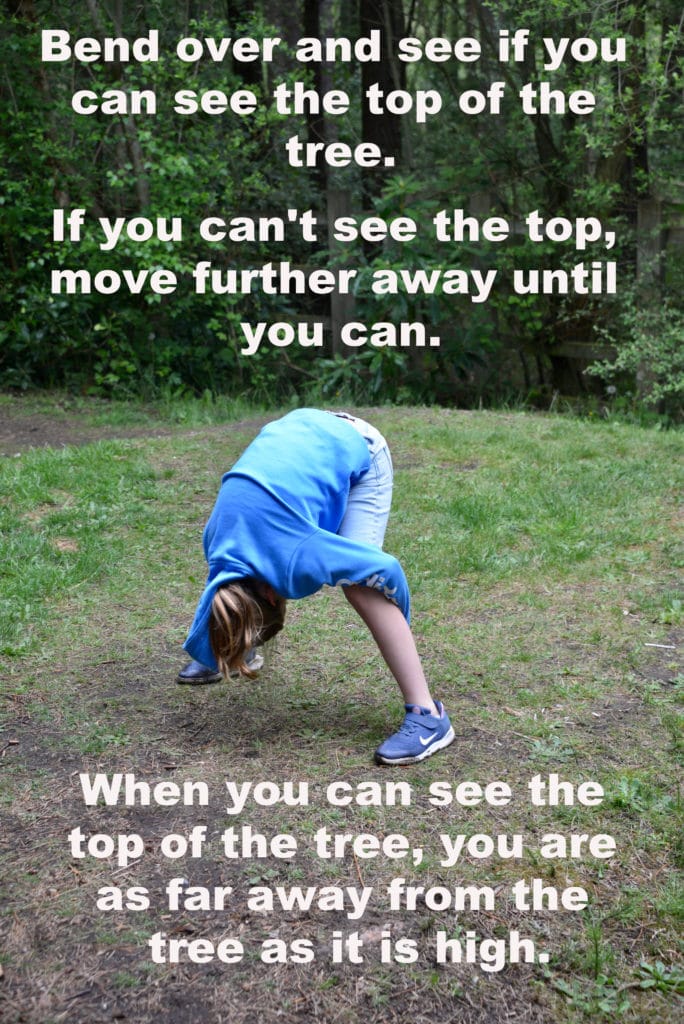
Science crafts for autumn
Find lovely autumn-coloured leaves for our hedgehog printable.
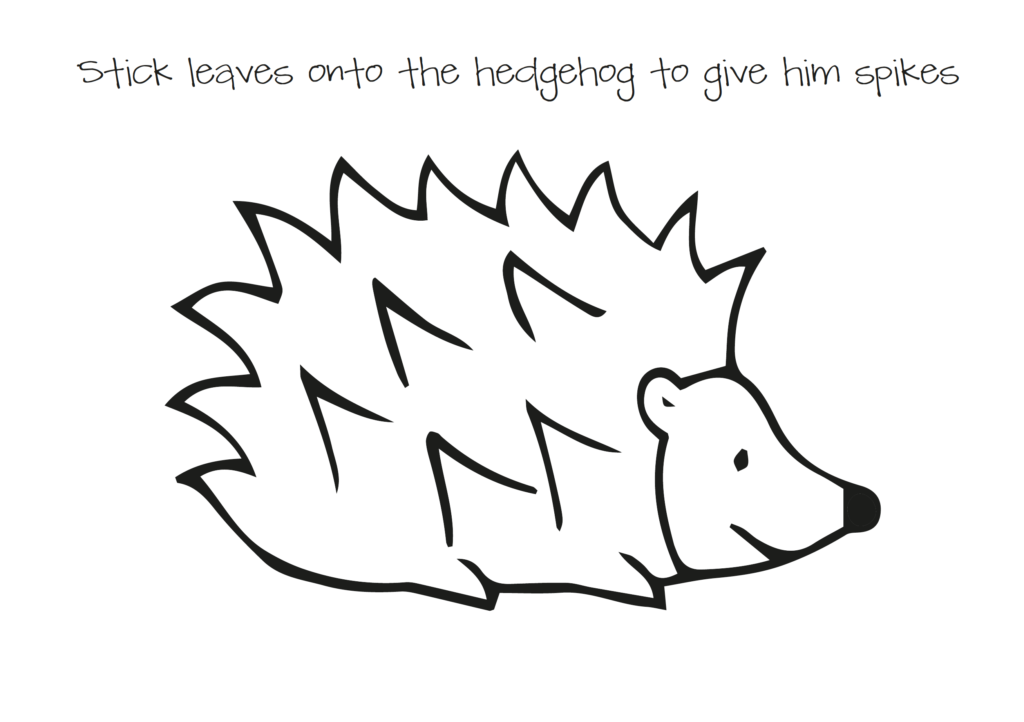
Make some leaf rubbings and think about different textures, a lovely idea from Red Ted Art.
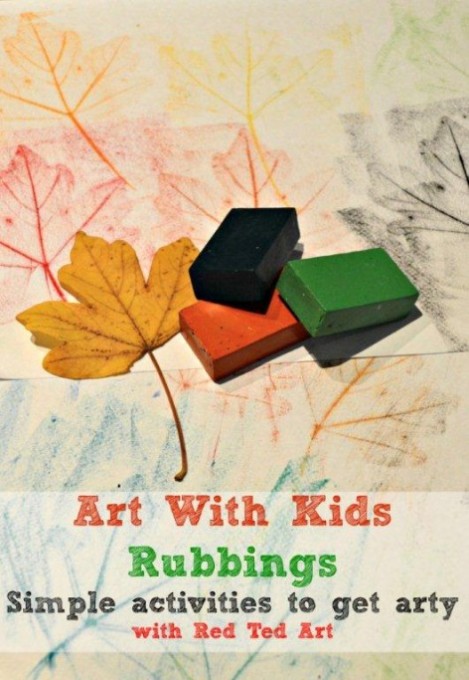
Try these fun activities with sticks and leaves .
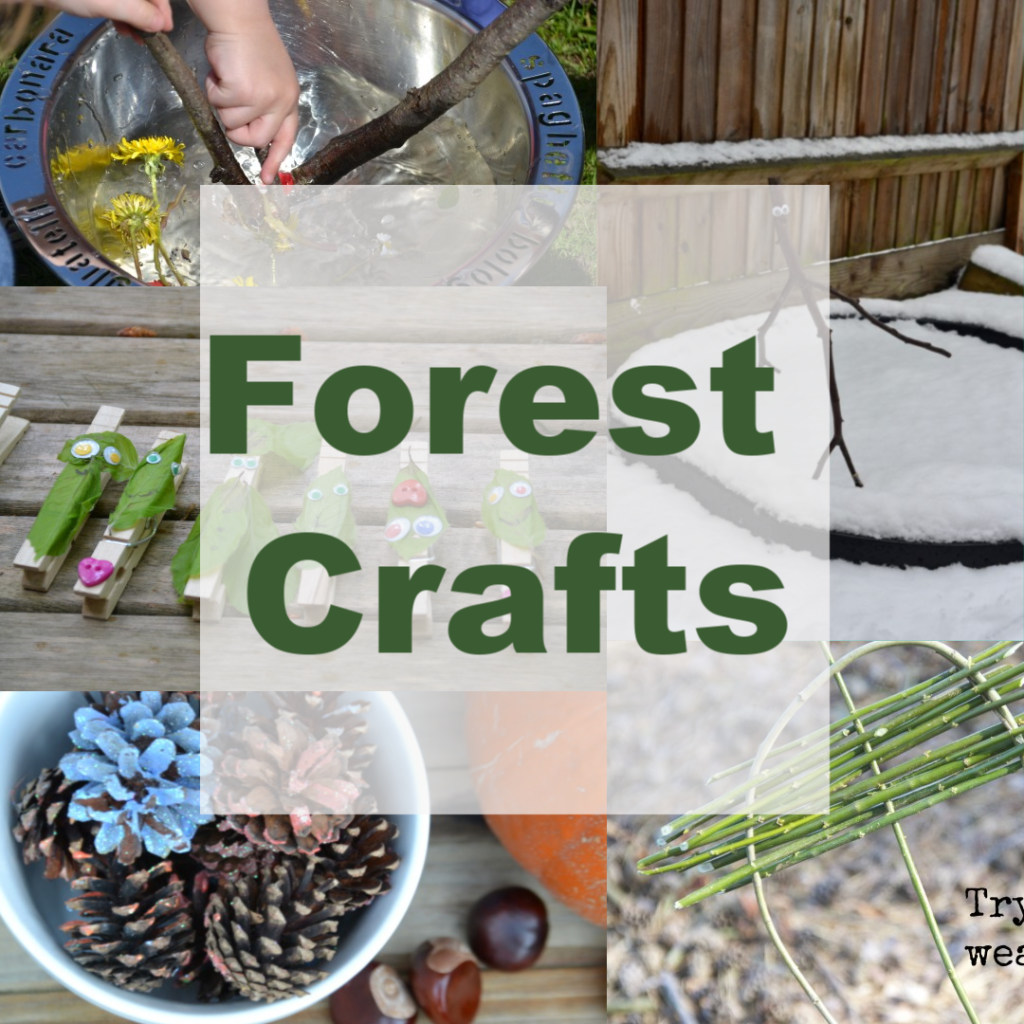
What about trying an autumn version of this floating art experiment from Learn with Play at Home?
Autumn Games
Tic tac toe printable.
Try our autumn tic tac toe game . Colour the leaves and trees autumn colours, cut them out and play!
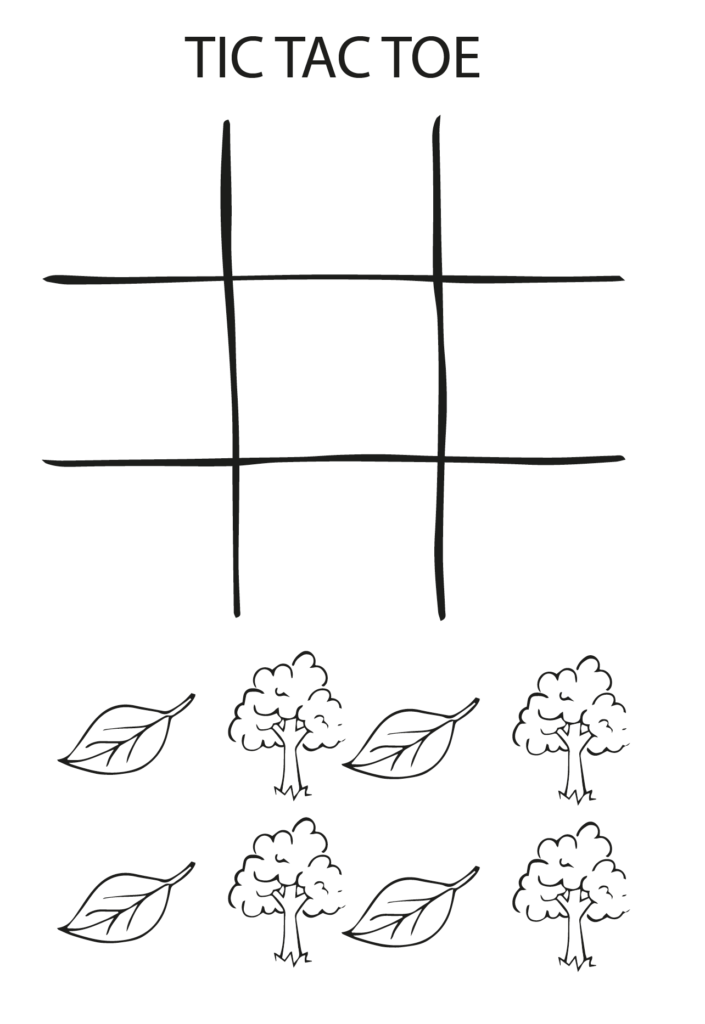
Autumn Science eBook
I also have a FREE Autumn Science eBook you can print for free!!
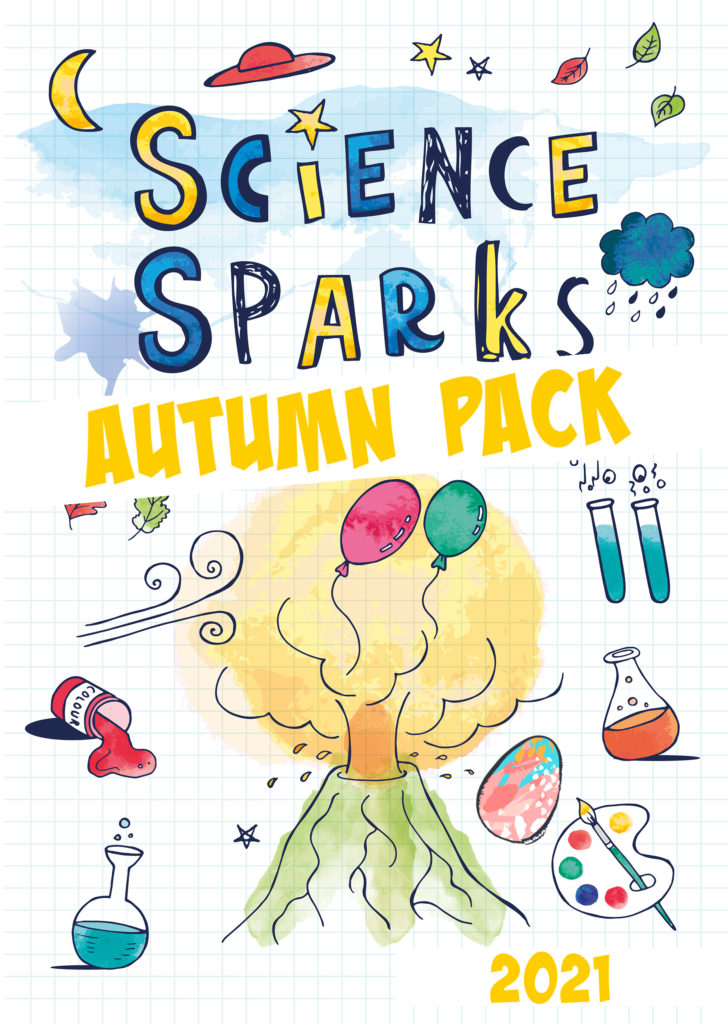
Activity ideas for Halloween
If you’re having a Halloween party we’ve got some great ideas to make it a memorable one and some fun Halloween science experiments, too.
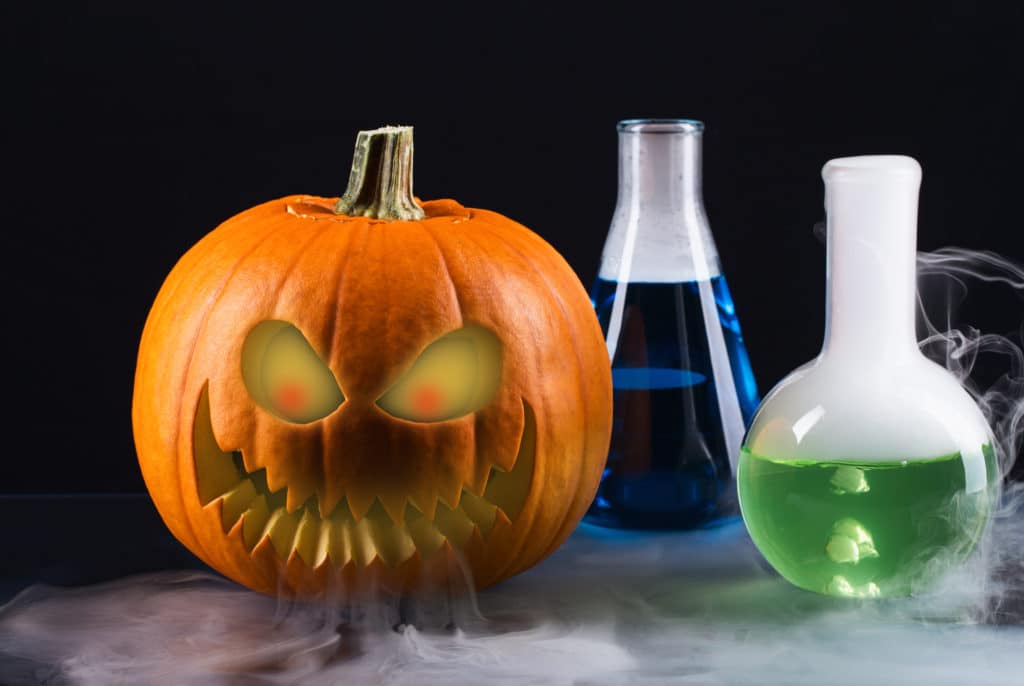
I also have a simple collection of ideas for outdoor science in the forest that you might like.
Do you have any more fall science experiments or craft ideas for us?
Affiliate links
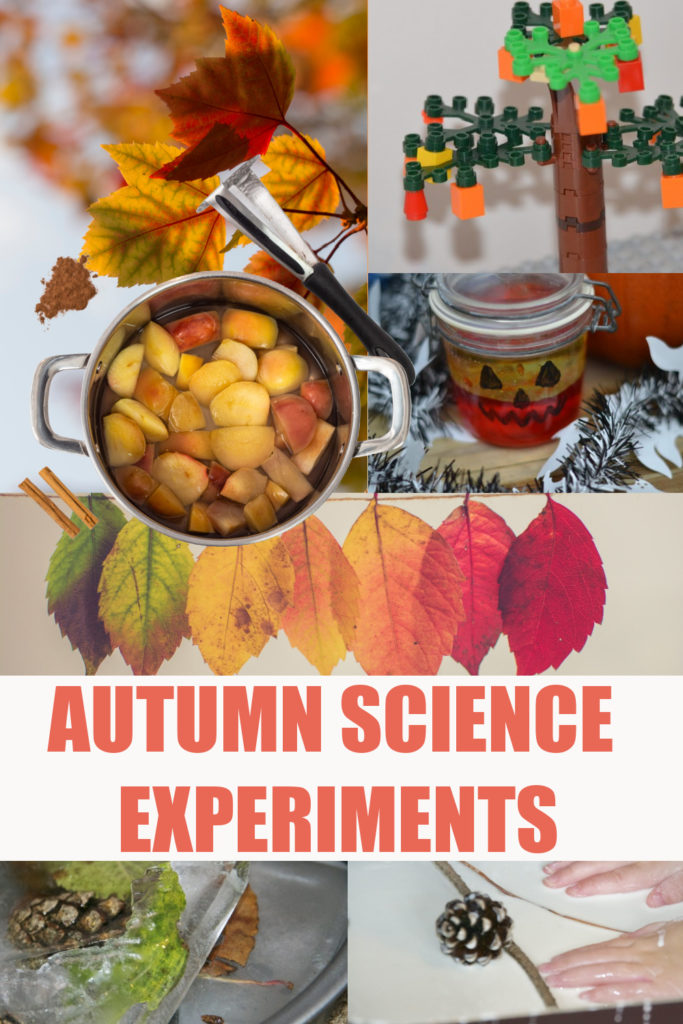
Amazon.com Widgets
Last Updated on October 17, 2023 by Emma Vanstone
Safety Notice
Science Sparks ( Wild Sparks Enterprises Ltd ) are not liable for the actions of activity of any person who uses the information in this resource or in any of the suggested further resources. Science Sparks assume no liability with regard to injuries or damage to property that may occur as a result of using the information and carrying out the practical activities contained in this resource or in any of the suggested further resources.
These activities are designed to be carried out by children working with a parent, guardian or other appropriate adult. The adult involved is fully responsible for ensuring that the activities are carried out safely.
Reader Interactions
October 31, 2012 at 11:02 pm
Some really great Autumn Ideas there and thank you so much for including our Blackberry playdough
November 03, 2012 at 8:31 am
No worries Cerys
October 31, 2012 at 11:38 pm
Ooh, pinning this list for future reference. Thanks for putting it together and for popping in our floating art. I’m looking forward till autumn here again to give some of these ideas a whirl 🙂
Thanks Debs. I love the floating art too!
November 01, 2012 at 2:27 pm
Thanks so much for featuring our Leaf Chromatography! Looks like you found some great activities!
November 02, 2012 at 5:36 pm
Wow what a great round up!! Who knew there was SO much science in Autumn!
November 02, 2012 at 5:57 pm
PS Thanks for sharing on Kids Get Crafty!
November 02, 2012 at 8:34 pm
What a wonderful fall filled with great activities you had!
November 03, 2012 at 8:30 am
November 02, 2012 at 10:03 pm
What a fun set of activities. Growing a Jeweled Rose’s erupting pumpkin always makes me smile too!
November 04, 2012 at 8:37 pm
Change of state with toffee apples, what a brilliant idea, beats my ice cube!
November 10, 2012 at 12:06 am
What wonderful ideas!! Thank you so much for sharing at Sharing Saturday!
November 10, 2012 at 6:11 pm
Thank you for sharing my leaf water vapor science experiment. You have rounded up some wonderful ideas here!
October 21, 2015 at 12:00 am
This paragraph gives clear idea designed for the new people of blogging, that genuinely how to do blogging.
September 05, 2018 at 7:03 pm
I am so happy I just found your site. I can’t wait to try the pumpkin experiment. It looks so much better than the lets watch a pumpkin decompose.
Leave a Reply Cancel reply
Your email address will not be published. Required fields are marked *
fun & meaningful learning every day
You Need to Try These Top 10 Summer Science Experiments
Shared by Mary Catherine 6 Comments
I have a secret to share with you. We love science. Okay, so that’s not really a big secret given how many hands-on science activities we’ve jumped into over the years. If you’re science lovers like we are, you’ve got to check out these awesome summer science experiments . More than 50 to choose from, so picking which one to start with may prove difficult.
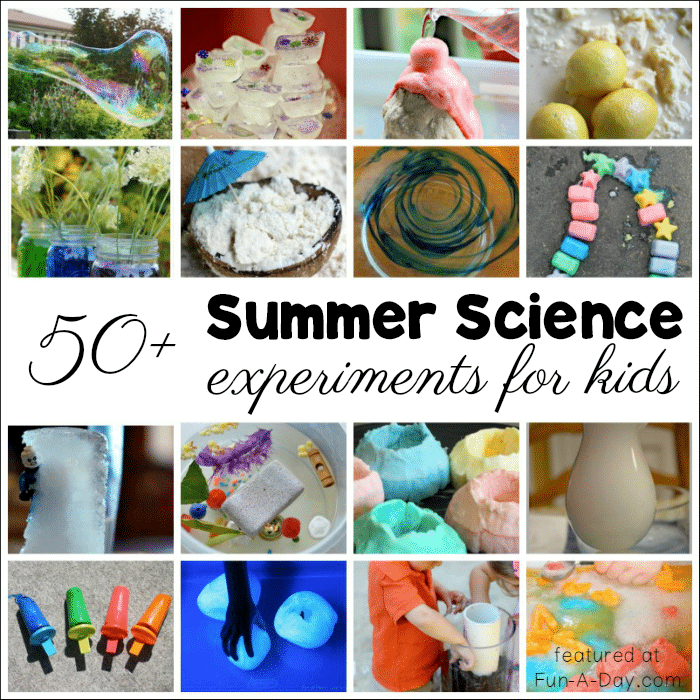
Related: Camping Science Activities for Preschoolers
Table of Contents
Summer Science Experiments to Try With the Kids
Let me begin by saying it was TOUGH to narrow this list down to 10! What I share on Fun-A-Day is about a tenth of the science fun we actually try out, too! With that being said, here are our top 10 science experiments for kids to try out this summer. My son helped me decide on the list, so it’s officially “kid-approved”!
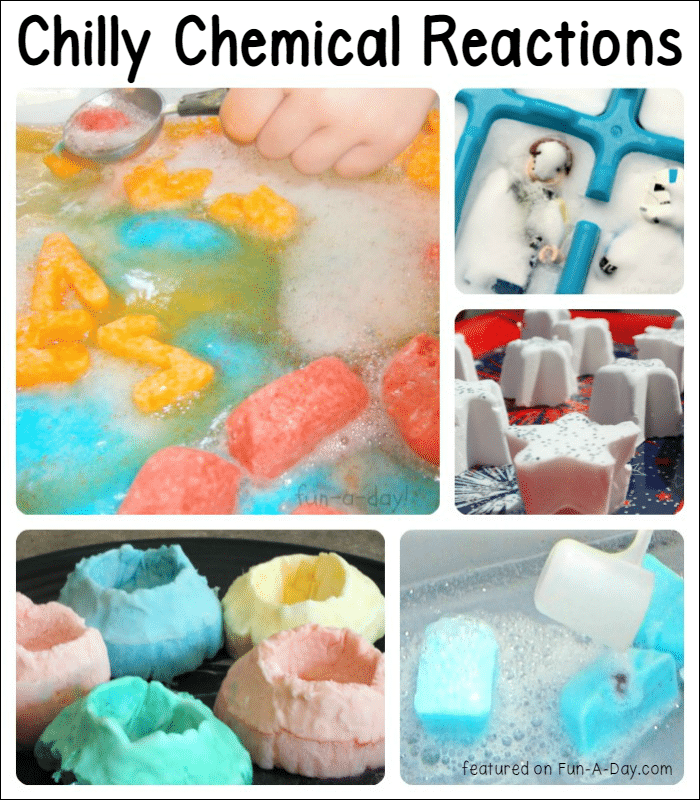
Related: Summer Crafts for Preschoolers
COLD CHEMICAL REACTIONS
Let the kids explore chilly science experiments on a warm summer day. A fun way to cool down and learn about science while playing! Here are a few ideas to get you started:
- Icy, Fizzing Letters from Fun-A-Day!
- Save Han Solo from Frozen Carbonite from Fun-A-Day!
- Frozen Fairy Tale Science from Fun-A-Day!
- Frozen Fizzing Stars from Little Bins for Little Hands
- Ice Volcanoes from Reading Confetti
- Exploding Treasure Chests from Fun-A-Day!
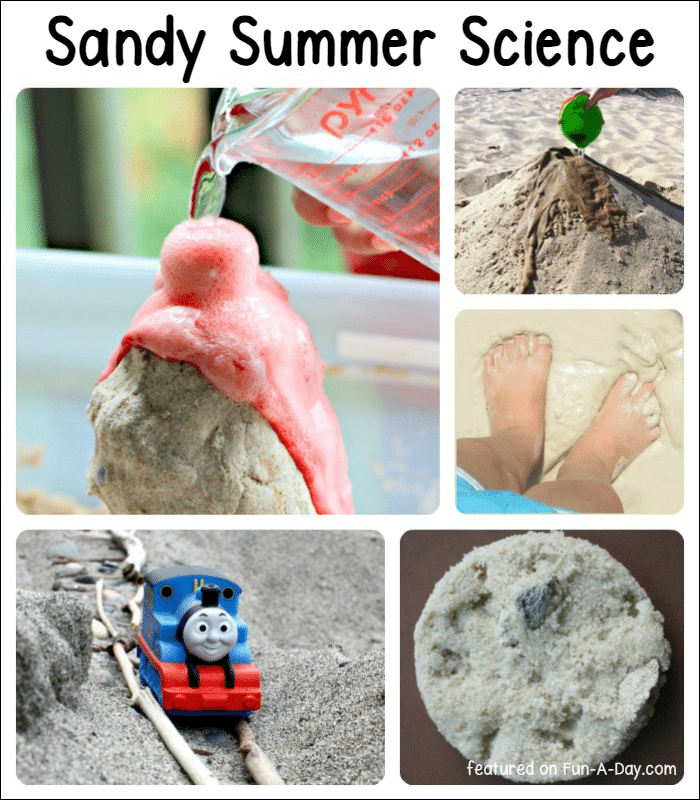
SANDY SUMMER SCIENCE EXPERIMENTS
The beach is synonymous with summer for me, so let the kiddos add some sand to their science (or some science to their sand)! Some suggestions:
- At-Home Sand Volcanoes from Fun-A-Day!
- Sand Volcanoes from One Perfect Day
- Homemade Quicksand from Growing a Jeweled Rose
- Sand Tracks: Learning with Trains at the Beach from Play Trains!
- How to Make a Rock from Fantastic Fun and Learning
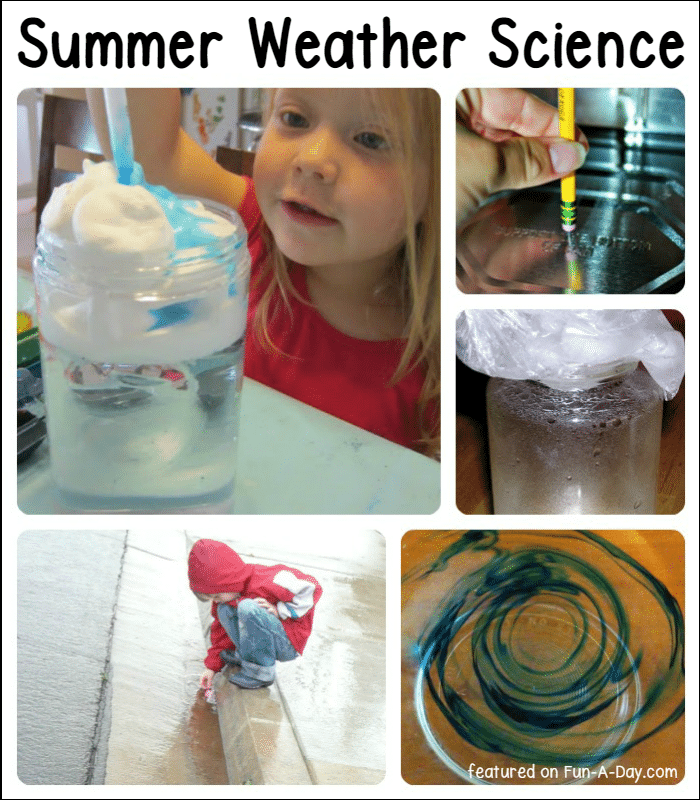
WEATHER EXPERIMENTS
Learning about the seasons is an important lesson for young children. Introduce a few summer weather experiments to the kids in playful ways. Here are some we are going to try this summer:
- Cloud Jars from Learn with Play at Home
- How to Make Lightening from Learn. Play. Imagine.
- How to Make Fog in a Bottle from What Do We Do All Day
- Rain Experiments for Kids: Floating Object s from A Mom with a Lesson Plan
- Make a Hurricane from Inspiration Laboratories
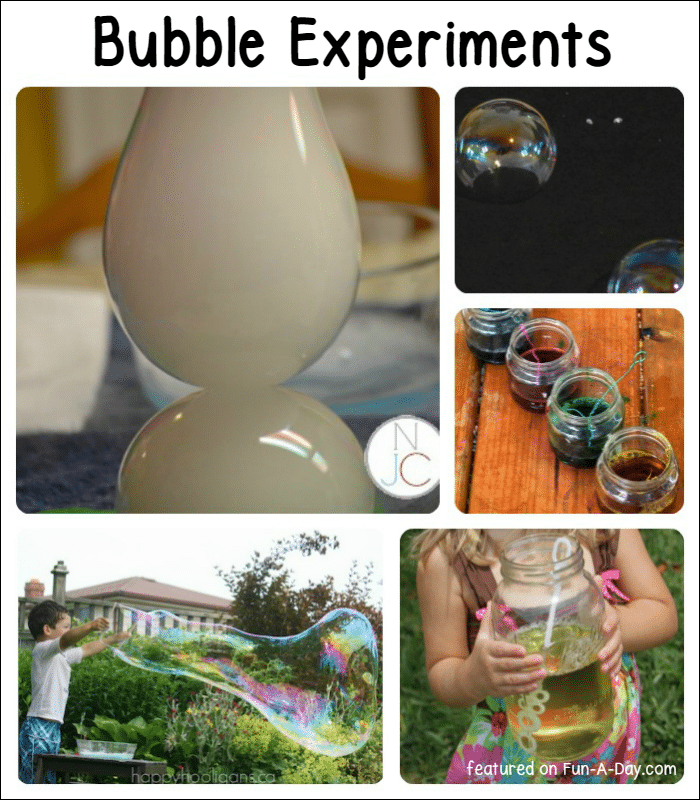
BUBBLE CONCOCTIONS
What would summer be without bubbles?!?! Not nearly as fun, that’s what. Encourage the kids to test out different bubble solutions and bubble wands. Keep track of their findings in a summer science journal, then compare! What did the children observe, and what bubble solutions were their favorites? A few bubble ideas for you:
- Dry Ice Bubbles from Not Just Cute
- Homemade Tear-Free Bubble Recipe from Craftulate
- Making Colored Bubbles from Learn.Play.Imagine
- How to Make Your Own Giant Bubbles from Happy Hooligans
- Easy Homemade Bubbles from Coffee Cups and Crayons
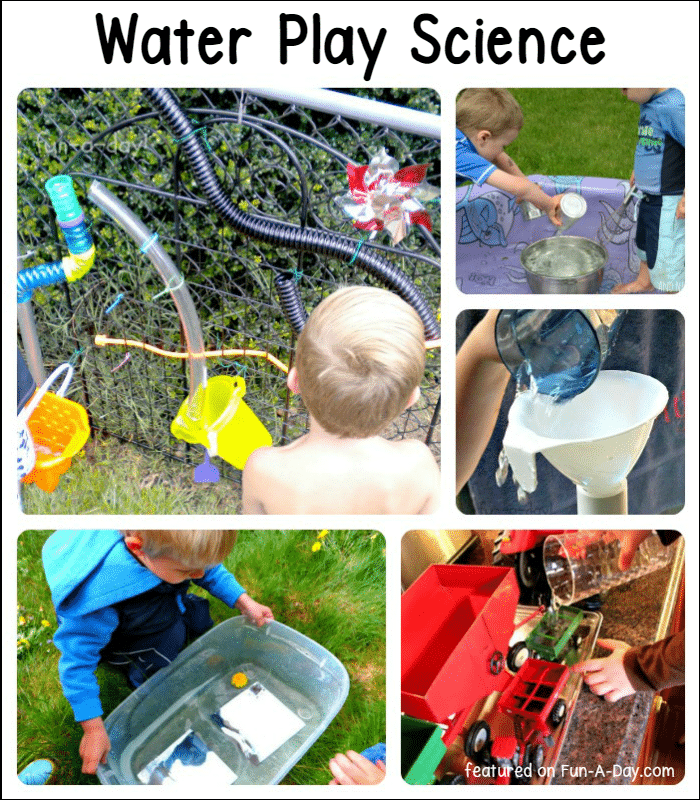
WATER PLAY SCIENCE
Let the little scientists explore water’s properties in various ways this summer. Here are some of our favorites:
- Create a Portable Kids’ Water Wall from Fun-A-Day!
- Musical Science Pool from And Next Comes L
- PVC Pipe Physics in the Water Table from Fun-A-Day!
- Kid Experiment: How Much Water Does it Hold from Hands-On: As We Grow
- Water Pump Sprinkler from Teach Beside Me
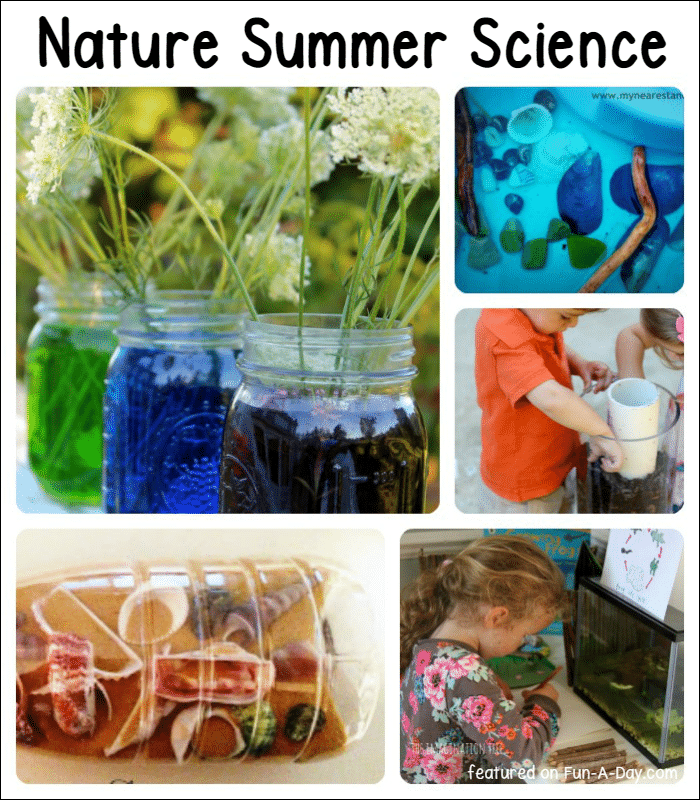
NATURAL SCIENCE
Science is about observing, questioning, and investigating the world around us. What better way to do that than outside in nature? Which of these will you try first?
- Coloring Wild Carrot from Fireflies and Mud Pies
- DIY Giant Worm Observation Tower from Twodaloo
- Beach in a Bottle from House of Burke
- Tadpole and Frog Investigation Area from The Imagination Tree
- Ocean Nature Table from Natural Beach Living
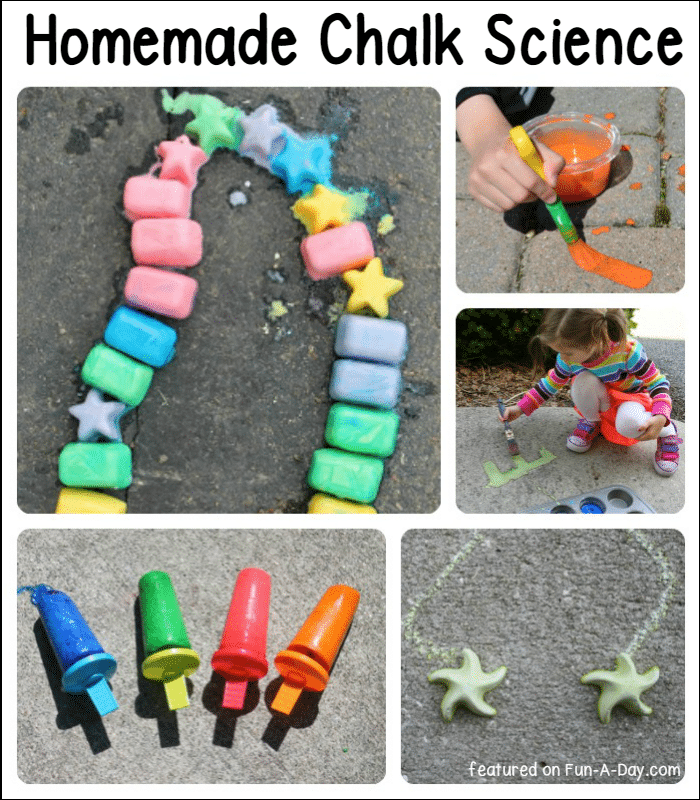
HOMEMADE CHALK TESTS
Kiddos love getting outside and creating with chalk. Why not lead them through a science-based exploration of which chalk recipes they like the best? They can write or draw their observations in a summer science journal, then compare and contrast their findings. Which recipes were their favorites?
- Ice Chalk from Reading Confetti
- 3 Ingredient Sidewalk Chalk Paint from Simple Play Ideas
- Homemade Glitter Chalk Paint from Still Playing School
- Frozen Scented Sidewalk Chalk from Mama.Papa.Bubba
- How to Make Glow in the Dark Sidewalk Chalk from Coffee Cups and Crayons
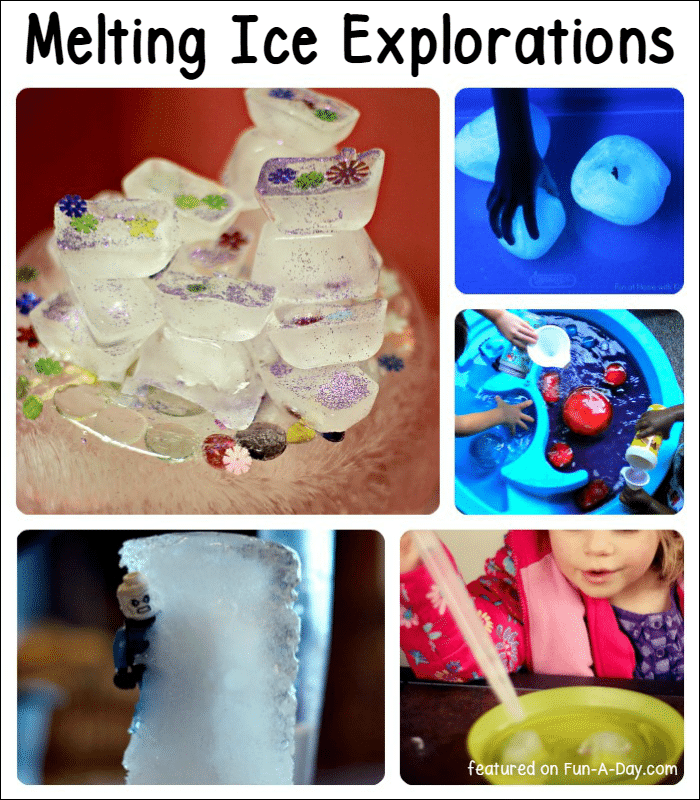
MELTING ICE SCIENCE
Set up science experiments for kids to explore melting ice. It will cool them down on hot summer days, as well as teach them how ice turns back into water. Here you go:
- Make and Melt Ice Castles from Fun-A-Day!
- Glowing Ice Excavation from Fun at Home with Kids
- Colored Ice Play from Fun-A-Day!
- Name Ice Melting from Fun-A-Day!
- Lego Excavation Experiment from Lemon Lime Adventures
- Simple and Playful Ice Experiments from Nothing if Not Intentional
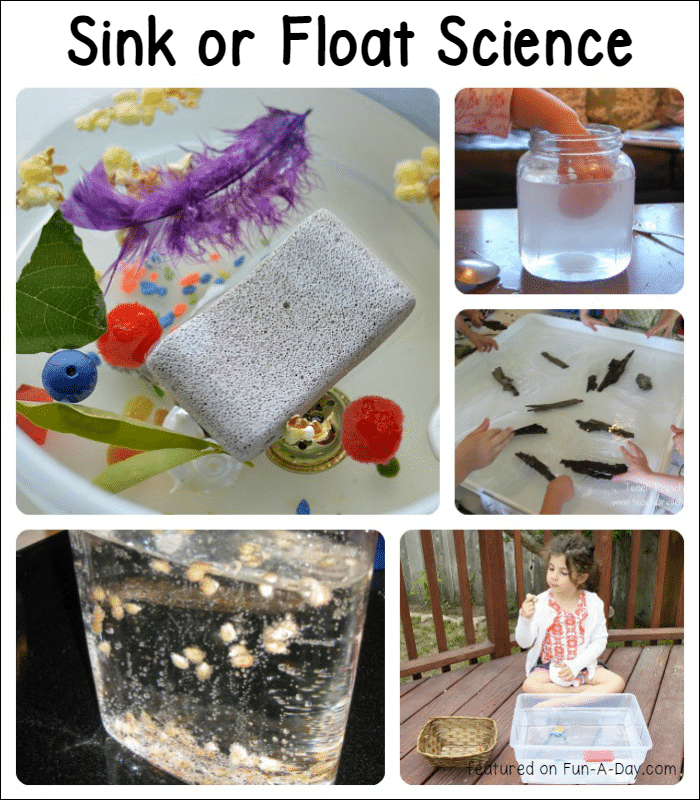
FLOAT AND SINK SUMMER SCIENCE EXPERIMENTS
This oldie-but-a-goodie science experiment allows children to explore how objects interact with water. It’s fun, but it also touches on the concept of density. Some variations on that theme:
- The Floating Stone Experimen t from Blog Me Mom
- The Floating Egg from Tinkerlab
- An Exploration with Nature from Teach Preschool
- Sink or Float: An Experiment with Seltzer Water from Kids Activities Blog
- Sink or Float (with free printable) from Buggy and Buddy
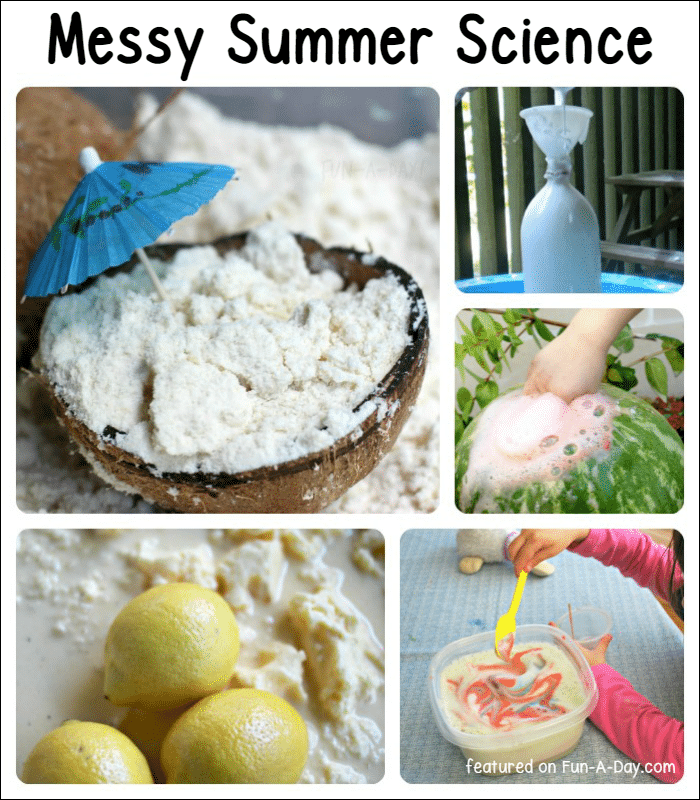
MESSY SCIENCE
Get messy outside in the name of science! Why not let the kiddos bring out their inner mad scientists in the summer weather? It’s a lot easier to clean up the mess outdoors! See how their favorite play recipes’ ingredients work together to make new substances. A few ideas for messy science:
- Taste-Safe Coconut Cloud Dough from Fun-A-Day!
- Messy Play with Shaving Cream, Cornstarch, and Water from Fun-A-Day!
- Watermelon Volcano from Twodaloo
- Frozen Summer Fun with Lemon Oobleck from Learn.Play.Imagine
- Exploding Milk Experiment from Mess for Less
What summer science experiments for kids would you add to the list?
Be sure to check out all of the other awesome summer learning ideas !
Summer Science Materials
I often find that science is one of the students’ favorite subjects to study in preschool. And I think it’s really important to foster that interest by giving the students plenty of opportunities to study and explore science concepts.
And as such, it will be helpful to keep some science-related product on-hand in your classroom this summer. Check out this list for some science product suggestions (I may get commissions for purchases made through links in this post):
- Kinetic sand
- Ice cube trays
- Popsicle molds
- Measuring cups
- Plastic bottles (purchased or recycled)
- Plastic bins
- Liquid watercolors
- Food coloring
This list is, in no way, all-inclusive. There are a ton of every day items that can be used for preschool science. Look around your classroom or home to get some ideas. Regardless of which materials you choose, I know your students will have a blast getting to experience the hands-on fun that comes with science!
Done-for-You Preschool Resources
Planning meaningful lessons for students week after week, all while balancing other teaching responsibilities and a personal life, can be a daunting task. That’s where Preschool Teacher 101 comes in to save you time!
Preschool Teacher 101 is excited to share with you some amazing lesson plans, activity packs, and much more! We offer a wide variety of themes that are frequently used in preschool classrooms, as well as some less common (but super interesting) themes. Click on the images below to learn more about some of our favorite product offerings!

Join The Pack from Preschool Teacher 101 today for exclusive access to our amazing products. And we even have three different membership options to suit your needs!
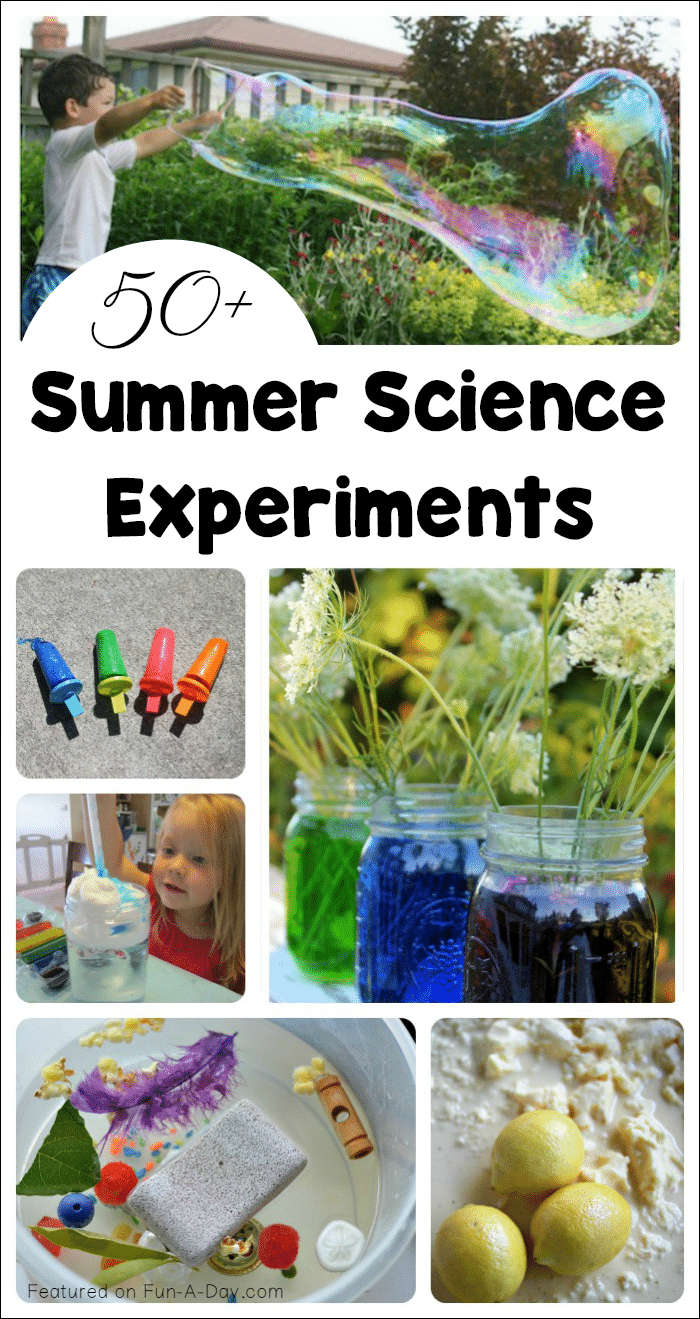
Leave a Reply Cancel reply
Your email address will not be published. Required fields are marked *
Save my name, email, and website in this browser for the next time I comment.
June 19, 2014 at 4:38 am
Wow, what an amazing list! This will be so helpful for keeping my kiddo busy this summer. Thanks for featuring our Sand Tracks…those were so fun!
June 22, 2014 at 1:12 pm
What an amazing round-up of summer science ideas! Summer seems to offer so many opportunities to explore with science!
September 8, 2014 at 8:30 am
I would love to have your Block Structure Book. I just signed up, but I don’t know how to get it. Could you please help me if you are sharing your wonderful piece of work. 🙂
June 19, 2015 at 10:35 pm
Wow! This is a great list and covers so many content areas! When science is fun learning happens.
November 16, 2015 at 1:46 am
I am definitely gonna try these activity with my kids this summer. These activities at home helps kids to perform better in their school activity projects. Thanks for the post.
June 26, 2017 at 6:02 pm
This is a FABULOUS post! 🙂 Thanks so much for including my post!
Search the Fun!
Fun by categories.
Advertisement
Science Projects for Kids: Weather and Seasons
- Share Content on Facebook
- Share Content on LinkedIn
- Share Content on Flipboard
- Share Content on Reddit
- Share Content via Email
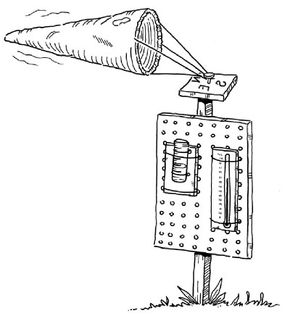
Science projects for kids: weather and seasons are an ideal teaching tool because they keep kids engaged and clearly explain natural phenomenon, such as weather and seasons. When kids actively participate in learning, they retain knowledge longer and become inspired to study more.
Whether you're planning a classroom lesson or just looking for rainy day fun, these science projects for kids will deepen their learning about weather and seasons.
On the following pages, you'll get great ideas for science projects for kids: weather and seasons.
Teach children about condensation and temperature with this easy science project for kids. Find out how to make Can Frost.
Bottled Sea: Catch a Wave
Oil and water don't mix, but together they can teach kids about the dynamic motion of waves. Learn how to prepare this science project for kids.
Clock the Wind
Learn how to build a device with your kids that measures wind speed. Read about Clock the Wind, a science project for kids.
Foggy Notions
Teach kids how to make fog in a bottle with this captivating science project. Get directions on how to prepare Foggy Notions.
Blowing in the Wind
How powerful is the wind? This science project for kids will show you just how much matter the wind transports. Find out how to prepare this experiment.
So Much Pressure!
Find out how to make your very own barometer with your kids, and then measure the air pressure with your device. Learn to make this science project.
Testing the Air
This science project teaches kids two methods of measuring environmental pollutants in the air. Find out what you'll need to prepare this science project for kids.
Weather Station
Assemble all the tools you and your kids will need to measure changes in the weather and eventually make predictions. Learn to make this science project.
Weather Folktales
Distinguish scientific facts from creative embellishments with this science project for kids. Separate fact from fiction in folktales about weather and seasons.
Stay Cool, Stay Warm
Teach kids how much the colors they wear affect them. Stay Cool, Stay Warm is an eye-opening science project for kids that teaches a valuable lesson.
All Kinds of Weather
Help kids learn about weather and seasons all over the world. Get directions for All Kinds of Weather, a research science project for kids.
Sunrise, Sunset
This science project teaches kids to chart the movement of the earth during the different seasons. Find out how to prepare this science project.
Rain, Rain -- Go Away
We've all heard of acid rain, but this science project illustrates its effects in a chilling way. Read about Rain, Rain -- Go Away.
Why is the sky blue? This science project for kids provides a clear demonstration of the atmospheric mechanism that colors our sky.
Teach your kids how to make Can Frost, a science project that educates kids about condensation. Get directions on the next page.
Want more science projects you can do with your kids? Try:
- Science Projects for Kids: States of Matter
- Science Projects for Kids: Air Pressure
- Science Projects for Kids: The Moon
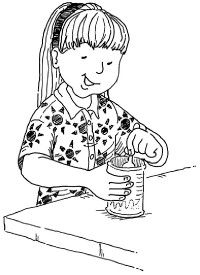
Can Frost is an easy science project that teaches kids about condensation. Frost forms because of a change in temperature.
What You'll Need:
- Small metal can
- Crushed ice
Learn about Can Frost
Step 1: Fill a small metal can 1/4 of the way with water.
Step 2: Stir 4 tablespoons of salt into the water.
Step 3: Add enough crushed ice to fill the cup, and stir the solution.
Step 4: Observe what happens on the outside of the can.
Teach kids how to create a marine environment in a bottle with the science project called Bottled Sea: Catch a Wave. Read about it on the next page of science projects for kids: weather and seasons.
The cold solution in the can lowered the temperature of the can. When the air outside the can came in contact with the cold can, the air's temperature also dropped. The amount of water vapor the air can hold depends on the air's temperature; it cannot hold as much water when it is cold. The water vapor condensed on the cold can, and the low temperature made the water freeze and form frost on the outside of the can.
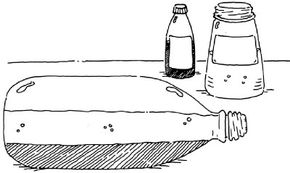
Bottled Sea: Catch a Wave is a science project that teaches kids how to make waves. Oil and water don't mix -- watch the waves build in this experiment.
- Plastic soda bottle
- Blue food color
- Mineral oil
Learn about Bottled Sea: Catch a Wave Step 1: Fill a plastic soda bottle about 2/3 of the way with water. Add blue food color to the water and swirl.
Step 2: Fill the remainder of the bottle with clear mineral oil. Fill it all the way so that no air remains when the bottle is capped.
Step 3: Set the bottle down horizontally, and you'll see a layer of oil on top with a layer of blue water underneath it. Tilt the bottle from side to side slowly, and watch the wave flow.
Step 4: Try tilting one side up before the wave reaches it to see the wave crash on shore and reverse directions.
Clock the Wind is a science project that teaches kids to build a device to measure wind speed. Get directions on the next page of science projects for kids: weather and seasons.
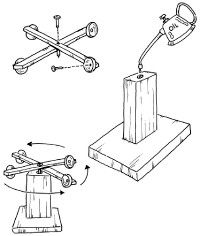
Clock the Wind is a science project that teaches kids how to build their very own device to measure wind speed. How fast is the wind blowing today? Make a wind-speed gauge that will tell you.
- Two hollow balls (rubber balls, tennis balls, or ping-pong balls)
- Two sticks of the same length
- One-foot wooden 2 x 4
- Wooden board for a base
How to Make Clock the Wind
Step 1: Ask an adult to help you with this project. First, take two small, hollow balls and cut them in half. Nail the ball halves to the ends of two sticks with the cut sides facing outward as shown in the illustration. Paint one half ball a different color from the other three.
Step 2: Next, nail the two sticks together at right angles so they form an X. Make sure you join the two sticks at their exact centers, so the joined sticks will balance on the nail. Use a long nail so that the end of the nail comes through both sticks.
Step 3: Now make the base. Have an adult drill a hole in the end of a one-foot length of a wooden 2 x 4. The hole should be a bit larger than the nail that holds the two sticks together.
Step 4: Attach the 2 x 4 to a wooden base, and set the nail in the drilled hole. (Put a little wax or oil in the hole so the gauge will turn easily.)
Step 5: Now, put your wind-speed gauge in the wind. Count the number of times it turns around in 30 seconds. (Count by the painted half ball.) Write that number down and divide it by five. The answer is the wind speed in miles per hour.
Teach kids to make fog in a bottle with the Foggy Notions science project for kids. Read about it on the next page of science projects for kids: weather and seasons.
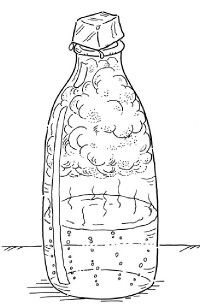
Foggy Notions is a science project that teaches kids about fog. Did you ever wonder what exactly fog is? This project will help clear up the mystery.
- Rubbing alcohol
Learn About Foggy Notions:
Step 1: You've probably seen fog. That's because when fog is around, it's about all you can see. Well, fog is a cloud that forms very close to the ground.
Step 2: In nature, when a mass of cold air bumps into a mass of warm humid air, millions of tiny droplets of water are formed. That's fog.
Step 3: Here's a way to get some cold air and some warm air together and make fog: Fill a bottle 1/3 full of very hot water. Add a few drops of rubbing alcohol. Put a piece of ice over the top of the bottle and watch fog develop.
Blowing in the Wind is a science experiment for kids that measures the objects that are carried on air currents. Read about this science project on the next page of science projects for kids: weather and seasons.
Blowing in the Wind is a science project that teaches kids how to harness the power of the wind. The wind is sometimes like a bus or train. It picks up passengers from one place and transports them to another.
- Vegetable oil or petroleum jelly
Learn About Blowing in the Wind:
Step 1: Get a piece of cardboard that is the size of a piece of notebook paper or larger. Make a small hole on one end of the cardboard, and tie a piece of string through the hole. Smear one side of the cardboard with vegetable oil or petroleum jelly.
Step 2: On a windy day, hang the cardboard from a tree using the string. Make sure the oily side of the cardboard is facing the wind. Leave the cardboard in the wind for an hour or more. Then go back and see what the wind has carried onto the cardboard. You may find seeds, insects, pollen, dust, or other tidbits of nature.
Step 3: Some plants (like the dandelion) use wind to help scatter their seeds far away. Sometimes the seeds can be carried for several miles or more! Small spiders can hang by their thread and let the wind blow them from spot to spot. What other ways can you think of to use wind?
So Much Pressure! is a science project that teaches kids to make their own barometer. Get directions for this science project on the next page of science projects for kids: weather and seasons.
So Much Pressure! is a science project that teaches kids how to make their very own barometer. You and your kids can make a water barometer that will show you the changes in the air pressure.
- Modeling clay
- Clear plastic bottle
- Pen or pencil
Learn About So Much Pressure!
Step 1: First, stick a ruler into a lump of modeling clay. Then put the clay and ruler in the bottom of a bowl. (The ruler should be standing up straight.) Put about three inches of water into the bowl.
Step 2: Next get a narrow, clear plastic bottle. Fill it about 3/4 full of water. Cover the top of the bottle with your hand, turn it upside down, and put it into the bowl next to the ruler. Once the bottle top is underwater, you can take your hand away. With the bottle still standing upside down, tie the ruler to the bottle with string.
Step 3: Cut a strip of paper about four inches long. Make a scale on it by making a mark every 1/4 inch. Halfway down the strip, make a longer line to show the halfway mark. Tape this strip of paper to the bottle with the halfway mark at the same level as the water in the bottle.
Step 4: Now you have a water barometer. The water in the bottle will move up and down as the air pressure changes. As the air pressure in the room increases, it will push down on the water in the bowl, forcing water up into the bottle. Then you can see yourself that the air pressure is high. If the air pressure is low, the bowl's water will rise, the bottle's water will sink, and you'll get a lower pressure reading.
Testing the Air is a science project that teaches kids how to measure environmental pollutants. Learn how to prepare this science project on the next page of science projects for kids: weather and seasons.
Testing the Air is a science project that teaches kids to test air quality. How clean is the air around your home?
- Stiff cardboard
- Safe scissors
- Hole puncher
- Petroleum jelly
- Magnifying glass
- Rubber bands
Learn How to Test the Air:
Step 1: With two simple tests, you can check the air for common pollutants. In the first test, measure how much dust, dirt, soot, and other floating material is in the air.
Step 2: To do this, cut two pieces of stiff cardboard into a four-inch square. Punch a hole on one corner of one piece and put a string through it for hanging. Coat both sides with petroleum jelly and hang the cardboard up under the eaves of your house.
Step 3: Coat one side of the second piece and lay it flat in the shade, also sheltered under the eaves of your house. Leave both pieces in place for a day.
Step 4: Examine both cardboard squares with a magnifying glass and see if you can count the number of small particles sticking to them. Which has more particles: the cardboard that was lying flat or the one hanging?
Step 5: To test for invisible gaseous pollutants, stretch three or four rubber bands over a piece of cardboard. Lay them in a shady place. Check the rubber bands each day. The faster they become brittle, the more pollutants there are in the air.
Step 6: Try both of these tests in two very different places to compare pollutant levels. You might try them in the middle of a city, then in a forest or in the country.
Learn how to make a Weather Station with your kids so that you can measure and predict the weather. Get directions for this science project on the next page of science projects for kids: weather and seasons.
Want to help keep the air clean? Ask your parents not to idle their cars for long periods of time at a drive-through bank, dry cleaner, or restaurant. Ask them to turn their motors off while they wait, even if it's only for a few minutes. Every minute is important.

Build a fully functional Weather Station with your kids, and then teach them how to use the instruments. Use your readings to track the weather. Then try to make predictions.
- Small piece of peg board (about eight inches wide and one foot long)
- White spray paint
- Thermometer
- Wind sock or weather vane (See Clock the Wind )
- Paper to make weather chart
- Barometer (See So Much Pressure! )
How to Make a Weather Station:
Step 1: In a ventilated area, paint the stake and peg board white using outdoor spray paint. Be sure to wear safety goggles and have an adult supervise.
Step 2: Nail the pegboard to the stake so the top of the board is one foot below the top of the stake. Use wire to fasten a thermometer and rain gauge to the pegboard.
Step 3: Fasten a weather vane or wind sock to the top of the stake. The north side of the wind vane's direction indicator should be on the same side as the thermometer.
Step 4: Find an open area with no overhanging trees or large buildings in the way. Have an adult help you dig a hole about 18 inches deep. Sink your stake into the bottom of it so that the side of the station with the thermometer is facing north. Then fill it back in and stomp the soil down firmly.
Step 5: Keep a weather notebook. Take readings of temperature, wind direction (and speed, if you made the wind sock), and rainfall daily.
Step 6: If you have a hygrometer and a barometer you can add readings of humidity and air pressure to your notebook. Compare your readings to those you see in the newspaper. See if you can predict the weather.
Weather Folktales are a great way for kids to combine science and creativity. Read about the Weather Folktales science project on the next page of science projects for kids: weather and seasons.
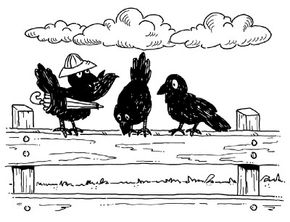
Weather Folktales are a science project for kids that combines science and creativity. See if you and your kids can determine which old beliefs are based on fact and which are pure fancy!
Learn About Weather Folktales:Step 1: Our ancestors didn't have television weather forecasters, satellite weather photos, or fancy instruments to predict the weather. They had to rely on signs from nature. Some old folklore predictions are highly accurate, while others are mere superstition.
Step 2: Read these folk sayings about the weather. Which ones do you think give accurate predictions?
- Red sky in the morning, sailors take warning. Red sky at night, sailor's delight.
- Crows on the fence mean rain, while crows on the ground mean fine weather.
- If a cow moos three times in a row, rain will come soon.
- A ring around the sun or moon means rain is coming soon.
- Roosters crowing at night predict rain.
- High clouds mean fine weather, low clouds mean rain is coming.
- Wide brown bands on a woolly bear caterpillar mean a mild winter.
Step 3: Make your own observations of these signs to find out, then record them in your notebook. Which do you think are more reliable: signs that rely on animals or signs that relate to the sky and clouds?
Stay Cool, Stay Warm is a science project that teaches kids how color and temperature are related. Learn this science project on the next page of science projects for kids: weather and seasons.
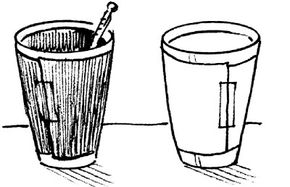
Stay Cool, Stay Warm is a science project that teaches kids the importance of temperature in the environment. You and your kids will learn that the way you dress can affect your personal environment.
- Two identical drinking glasses
- One sheet of black paper
- One sheet of white paper
Learn About Stay Cool, Stay Warm:
Step 1: Whether the weather is hot or cold, the colors you wear can affect your body temperature. Want to test the theory?
Step 2: Take two identical drinking glasses. Wrap one in black paper and tape it securely. Wrap the other in white paper and tape it in place.
Step 3: Now fill both glasses with lukewarm water and put them on a porch or picnic table. Allow the glasses to stand undisturbed in direct sunlight for about an hour.
Step 4: Now use a thermometer to measure the temperature of the water inside each glass. Then decide which color of clothes will help you stay warm or cool. Odds are that your choice will be crystal clear.
All Kinds of Weather is a research science project that teaches kids about weather patterns all over the world. Get directions on the next page of science projects for kids: weather and seasons.
All Kinds of Weather is a science project for kids that teaches children about weather around the world. The answers to all your kids' weather questions are as close as your library.
- One or more books on weather
Learn About All Kinds of Weather:Step 1: Think of some weather questions you'd like to know the answers to. For example: Have you ever wondered what are the coldest, hottest, rainiest, and snowiest places on Earth?
- Antarctica is the coldest at -128.6 degrees Fahrenheit.
- Al Aziziyah, Libya, is the hottest at 136 degrees Fahrenheit.
- The rainiest place in the world, Kukui, Hawaii, gets 460 inches every year.
- Washington's Mount Rainier Paradise Ranger Station, the snowiest place, gets 1,122 inches in the winter season.
Step 2: Have you wondered what causes tornadoes, thunder, or lightning? Check out some books about weather and find out. Discover your own fun weather facts, write them down, and share them with others.
Sunrise, Sunset is a science project that teaches kids how the earth moves in relation to the sun. Learn how to track these movements on the next page.
Sunrise, Sunset is a science project for kids that teaches how daylight changes with the seasons. You and your kids will have to wake up early to keep track of where the sun rises and sets.
Learn About Sunrise, Sunset:
Step 1: Get up early one morning and watch the sun rise. You'll see it best in an open area, such as a beach, lake shore, or large, flat field. Notice where the sun rises in relation to fixed objects (such as hills or trees) near the horizon.
Step 2: Keep notes about this. (For example, you might write: "Sun rose just to the right of the big hill.") Make a diagram showing the eastern and western horizons. Mark where you saw the sun rise.
Step 3: The same day (or as soon as you can), go to the same place and watch the sun set. Again, notice where the sun sets in relation to hills or trees on the horizon. Mark the spot on your diagram.
Step 4: About three months later, repeat the activity. Notice where the sun rises and sets in relation to those same hills or trees. (Check your notes from last time.) Mark the spots on your diagram.
Has the sun moved? The sun always rises in the east and sets in the west. It's really the Earth that has moved. As the Earth orbits the sun, it changes how much it tilts toward the sun. The result is that the sun rises and sets in different places on the horizon. Be careful not to look directly at the sun.
We've all heard of acid rain, but the next science project for kids demonstrates its effects dramatically. Read about Rain, Rain -- Go Away on the next page of science projects for kids: weather and seasons.
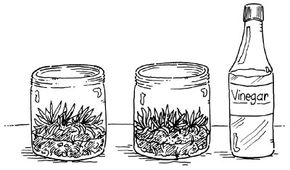
Rain, Rain -- Go Away is a science project that teaches kids about the effects of acid rain. Sometimes chemicals get in the air and mix with water to form "acid rain."
Learn about Rain, Rain -- Go Away:
Step 1: Put 1/4 cup of water in one of the jars. Ask an adult to cut two small squares of sod from your lawn or buy some sod at a nursery. Push one square of sod down into a jar so that the sod's soil is in the water.
Step 2: Then put 1/4 cup of vinegar in the other jar. Push the second square of sod down into the jar, so the soil is in the vinegar.
Step 3: Now place both jars in a warm, sunny place, and watch what happens over the next several days.
Step 4: Vinegar is an acid, like the acid in acid rain. Acid rain is a worldwide problem. It can be caused by smoke from factories, burning coal, and even car exhaust. In addition to harming plants, acid rain also pollutes bodies of water, kills fish, and destroys rocks and buildings!
Why is the sky blue? The science project for kids called Blue Skies uses visual aides to explain this natural phenomenon. Read about it on the next page of science projects for kids: weather and seasons.
Blue Skies is a science project for kids that explains how light is refracted through our atmosphere. Teach your kids how waves of light color our world.
Learn About Blue Skies:
Step 1: Why is the sky blue? When the white light of the sun filters through our atmosphere, it scatters into every color of the rainbow and every possible wavelength. Our atmosphere makes it blue.
Step 2: This simple experiment will give you an idea of how that scattering works and why weather patterns can cause a colorful shift.
Step 3: Turn a flashlight on outside at night. Set the flashlight on a table so its beam shines in midair in front of you. Now sprinkle flour in front of the beam.
Step 4: You should see dozens of white flashes as each piece of flour or dust reflects light waves and sends the color signal straight to your eyes. That's how our atmosphere sends flashes of color to your eyes to make the sky seem so blue.
Kindergarten Fall Season Science Unit
I'd love it if you shared!
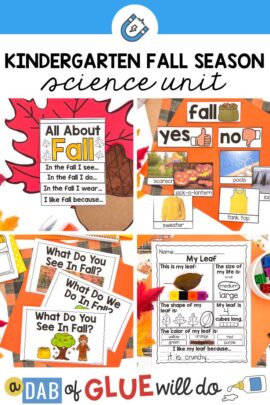
Fall is such a wonderful time of year. The temperature here in Texas is finally a little more bearable, school routines are in full swing, and the fun holidays are creeping closer. The leaves are falling off the trees and the days are getting shorter. If you live near a farming community, you may find yourself picking apples or pumpkins on the weekends. Or maybe you’re a big football fan, spending Sundays on the couch cheering for your favorite team. In the classroom, we enjoy learning about the changing season with our Kindergarten Fall Science Unit .
However you like to spend your fall, the change in season gives us the perfect opportunity to switch up the themes in our materials and really bring fall to life inside the classroom. We decorate our room with these painted football and paper bag apple crafts . And then we dive right into the season with some fun fall bingo and our stacks of books all about fall .
I love to start fall with all things apple-related, like this apple writing center and apple editable sight word activity . We make counting fun with our apple seed number match-up game. And to add in some STEM, we do our apple boats activity . This hands-on experiment is so much fun that our students are learning without realizing they’re learning .
Each month, I help my students practice and review their math and literacy skills during center time, and these September centers make my life so much easier. They come with 40 centers that are covered in adorable fall clipart, turning my classroom into an autumn adventure.
And if I need any other centers during fall, I usually pull out one of my favorite match-ups from this Fall Leaves Match-Up Bundle . It’s great to have so many different centers and activities stored and ready to pull from whenever I need them!
When it comes to the last week or two of September, and we’re ready to celebrate the autumnal equinox, I make sure to add this Fall Season Science Unit for Kindergarten in my lesson plans for science. This unit will have everyone excited for the new season!
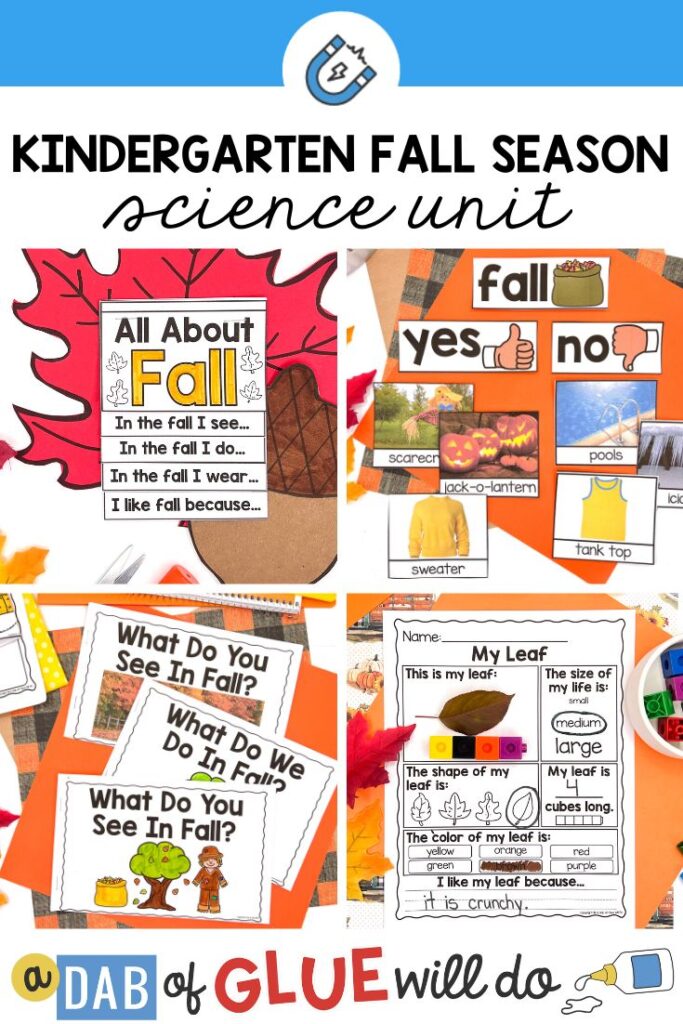
This Fall Season Science Unit for kindergarten is chocked full of incredible activities that will make your students experts on the season of fall in no time! Teach your little learners about what people might wear, see, and do in the season of fall.
This seasonal science unit is full of teacher materials, lesson content, and bonus resources to make learning about fall fun. You and your students will love learning about fall with the hands-on activities, real-life pictures, games, crafts, and more that come in this unit.
Inside You’ll Find:
Unit Overview
- Lesson Plans
At-Home Letter
Teacher Guide
- Science Center Instructions
Science Questions
Book, Video, and Song Lists
Fall Posters and PowerPoint
Fall “I See” Hat
Things We Wear and Do in Fall Posters and PowerPoint
Things We Wear and Do in Fall Sort
Things We See, Wear, and Do in Fall Worksheets
Trees Through the Seasons Posters and PowerPoint
Fall Tree Craft
- Animals in Fall Posters, PowerPoint, and Worksheets
- Leaf Investigation Worksheet
Fall Review Craftivity
Question of the Week
Fall Scavenger Hunt
Bonus Materials Included in the Fall Unit:
Writing Center Materials
Definition Posters
Word Wall Cards
Circle Maps
I See Leaves Emergent Reader
What We See and Do Emergent Readers
- Fingerplays
Graphic Organizers
Write and Draw Worksheets
Fall Voting Page
Fall Bingo Game
Fall Sensory Bin Ideas
Bag of Fall Label and Parent Leaf Letter
Fall Sequencing Activity
Fall STEM Activity
Suggested Materials for the Fall Science Unit
- Construction Paper
- Laminator and Laminating Sheets
- Coloring Tools
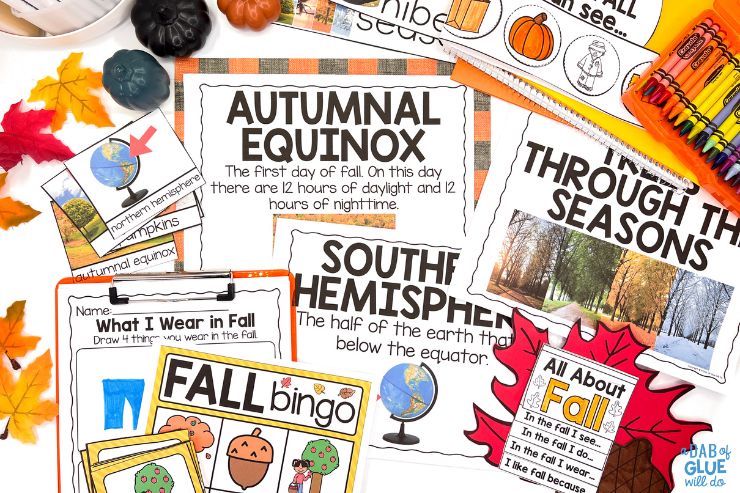
Using the Kindergarten Fall Season Science Unit
Once you purchase and download the Fall Season Unit for kindergarten, you can check out everything inside! You’ll find one large PDF with all of the fantastic activities and resources, plus you’ll see four PowerPoint presentations to use throughout the unit.
But you want to know what this unit is all about right? Okay, here it is. First up you’ll be able to introduce the season of fall and when it happens. You’ll probably touch upon discussing the four seasons in general and how fall is one of the four. Then you can dive deeper into all of the fun stuff! You’ll have everything you need to teach your students about what people might see, do, and wear during fall. Plus, you’ll have materials to teach your students about what some animals do during the season of fall. You’ll even discuss what trees look like in the season of fall. You’ll have worksheets, sorts, crafts, games, and even a scavenger hunt to use to make this the most engaging seasonal science unit that you’ve ever taught.
All of our science units include a Unit Overview. You’ll find this directly after the table of contents. It will give you a glimpse of everything that you have access to in the unit, including a few pictures to see what it looks like and a short paragraph on suggested use. This will help you understand everything that you now own, as well as help you decide on what you want to use.
Lesson Plans for the Week
The unit also includes fall season lesson plans for a week. These lesson plans are offered to you as an option, you do not have to follow them. Oftentimes, teachers purchase materials and then don’t know how to incorporate them into their teaching. That’s why we always offer suggested lesson plans, even if you just use them as a guide or for ideas.
The at-home letter is exactly what it sounds like: a letter to be sent home. Created two-to-a-page to make for easy printing and copying, this at-home letter can be sent home before you start the unit to give families an opportunity to know what their child is learning in science this week. The letter also provides suggestions on how families can get involved with the science topic at home with their child.
In case you’re not an expert on seasons and the season of fall, we’ve got you covered. Our teacher guide will give you information and fun facts about seasons, including why seasons occur, as well as more in-depth facts about fall. Use this guide to give you a little more background knowledge before teaching the unit and to be prepared for those kiddos that always want to know a little bit more!
Science Center Guide
The unit comes with a science center guide that you can read through to give you ideas on how to create an engaging science center while you’re implementing the fall science unit for kindergarten.
You can use the provided list of fall and general science questions to pique your students’ interest and get them thinking critically about the topic.
I don’t know about you, but I love using books, videos, and songs in the classroom to break up lessons, start lessons, and transition to other parts of our day. With a clickable list for fall songs, books, and videos, you can save time and energy by not having to search and find all the best resources.
When you’re ready to begin the Kindergarten Fall Season Science Unit, you can start by using the Fall PowerPoint to introduce the subject to your students. The unit also comes with a matching set of posters, in case you’d prefer to print them out and display them in your classroom.
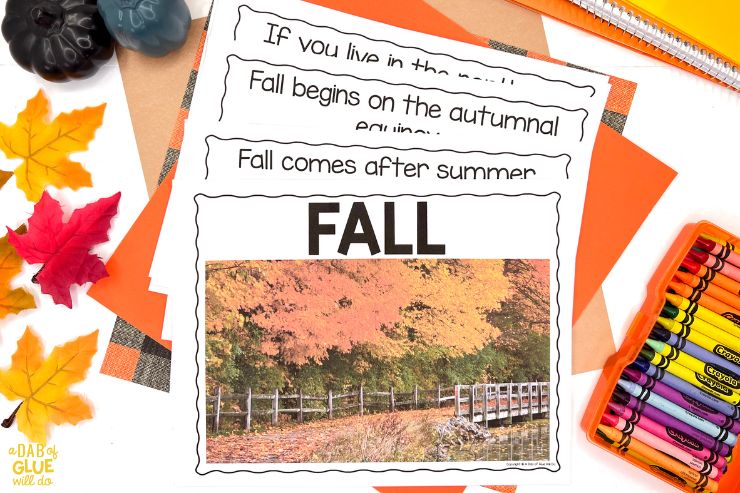
After discussing what people might see during the season of fall, students can show what they’ve learned by creating this adorable hat.
Later on in the week, use this “Things We Wear and Do in Fall” PowerPoint to show your students what people might wear and do in the fall. You’ll also have a matching set of printable posters. Since we all live in different climates, make sure to include a discussion on what you and your students normally wear and do during fall.
After you go through the PowerPoint about what you might wear and do in the fall, engage students in this hands-on group activity where they can help sort through and find the correct options of what people might wear and do during fall.
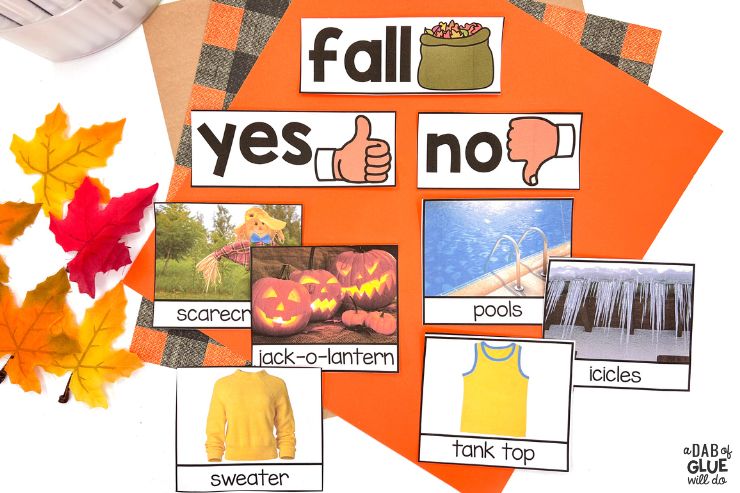
After introducing fall and what people might see, wear, and do in the fall, use any or all of the provided sorts and worksheets as independent or group work with your students.
A major part of every season is recognizing what the trees are up to! Use this PowerPoint and matching set of posters to show your students real-life pictures of trees during all four seasons.
After discussing trees during all of the different seasons, your students can partake in a fun fine-motor and writing craft project to make a beautiful fall tree. Maybe you’ll even go outside to do some fall nature observations of trees with your class!
Animals in Fall PowerPoint, Posters, and Worksheets
If your students are anything like mine, they LOVE talking about animals. Use the PowerPoint, posters, and worksheets to teach your students what different animals do during the fall.
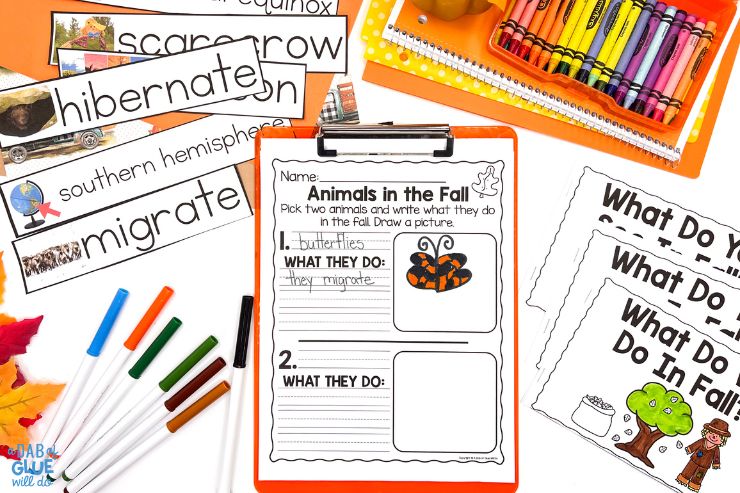
Leaf Investigation Sheet
Have students bring in some leaves (using the label and home letter that you’ll read about below), and have them complete a leaf investigation using the worksheet that comes in this unit.
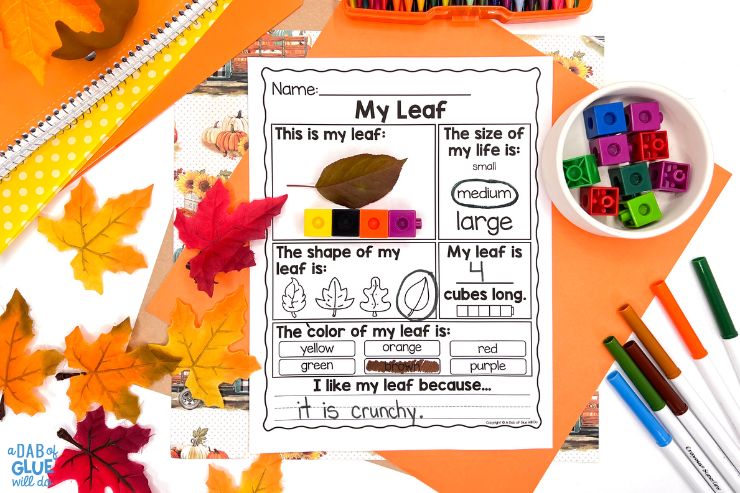
Once you’ve spent a couple of days, or the whole week, teaching and learning about everything to do with fall, students can create a cute and fun flip book craft activity to show what they’ve learned.
This unit comes with the question “Have you ever jumped in a leaf pile?” Use this question as a hook to introduce the unit and the season of fall and to create great discussion among your class.
If you’re looking to get out of the classroom, the unit comes with a fall scavenger hunt! Grab the clipboards and head outside, or even send it home for students to complete with their families.
Bonus Materials Included in the Fall Unit
Our science units are full of science activities, but we also want to give you the resources needed to integrate the season of fall into every aspect of your curriculum. This unit comes with an awesome writing center that includes word cards, picture cards, and differentiated writing pages. These materials will surely help you create a fall season writing center that will spark your students’ creativity and imagination.
With any science unit, new vocabulary is introduced. Use the provided printable definition posters throughout the unit to help students understand the different vocabulary being used.
For each word on the definition posters, you’ll have a word wall card as well. This means that throughout the unit as new words are introduced, you can add the words to your word wall, reading center, or your students’ tables.
Circle maps are a fun take on graphic organizers that can be used when introducing a subject or after a unit is taught. You can see what your students already know about the fall season before you start, or you can have them show what they’ve learned towards the end of the unit. Students can draw or write in the circle maps, depending on your preference and their ability level.
The unit comes with several easy readers. The “I See Leaves” reader can help students practice reading, numbers, and color words. This is an easy activity to do any time of day or to even leave with a substitute!
The two additional emergent readers are focused on what students have already learned about – what people might do and see in the fall. Each reader comes with a real-life picture version, a black & white clipart version, and an interactive cut & paste version.
My students and I love fingerplays. Any type of song, chant, or rhyme that we can repeat throughout the week as we transition from activity to activity or place to place is a win in my book. This unit comes with a fun fall fingerplay to use with your little ones.
In addition to the circle maps, the kindergarten fall season science unit comes with two more graphic organizers. One of them is a Venn diagram to use with your students to compare the season of fall with either spring, summer, or winter. The other graphic organizer is focused on the five senses and what you might see, hear, smell, taste, and touch in the fall.
In case you are interested in adding more writing opportunities during this unit, we also included some “Write or Draw Worksheets” to the fall science unit for kindergarten resources. The worksheets give students the opportunity and space to draw or write about fall, or more specifically, about what they do, see, or wear in the fall.
To bring some counting and graphing into the unit, we’ve created a fall season voting page that you can use with your students. Take a class vote, asking students if they like fall or not, and record it on the voting sheet. Extend the activity by creating a graph on the board or chart paper.
Previously you read that the unit comes with specific sorts for what people wear, see, and do. The unit also comes with a more general fall sort that combines all three categories into one. Use this worksheet if you’re not spending a lot of time going through each topic.
Bingo is always a good idea in my classroom! I love to play at the end of the week or when I have a parent volunteer. The fall bingo game is a fun way to celebrate the end of your fall unit, or the first day of fall. The game comes with boards in both color and black & white.
Sensory bins are fantastic for giving your students hands-on opportunities for learning. The unit comes with suggestions on creating an engaging kindergarten fall sensory experience for your students.
Before having your students complete the leaf investigation mentioned above, send home a brown paper bag with the Bag of Fall label and parent leaf letter stapled onto it for students to collect some leaves at home.
Cross the curriculum by bringing literacy lessons into the unit with a hands-on sequencing activity. This activity will give students the chance to read, retell, and sequence the steps of raking leaves.
It wouldn’t be a kindergarten fall science unit if it didn’t include a STEM challenge! This unit comes with a fall-themed STEM challenge to complete with their classmates or independently. STEM activities are great for engaging your students’ critical thinking skills.
Download the Kindergarten Fall Season Science Unit today!
Purchase from the A Dab of Glue Will Do Store
Purchase from the A Dab of Glue Will Do Teachers Pay Teachers Store
Dive into autumn with our Kindergarten Fall Science Unit . Engage students with activities that explore the science of the changing seasons!
Members get this and more!
- Access to ALL of the easy-to-prep, engaging resources we’ve EVER made!
- New, exclusive, themed resources every month made for Pre-K, Kindergarten, and First Grade that our members vote for!
- Complimentary access to all 1000+ digital games we’ve made for Google, SeeSaw, and Boom Cards!
- One-click access to all of our freebies in both color and black & white!
Want science units full of engaging, hands-on resources for all four seasons?
Check out this resource from my shop.
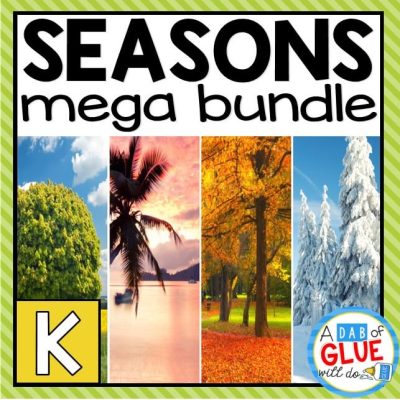
Four Seasons Science Unit Mega Bundle for Kindergarten
$ 14.00 Original price was: $14.00. $ 11.20 Current price is: $11.20.
Check out some of our Amazon favorites!
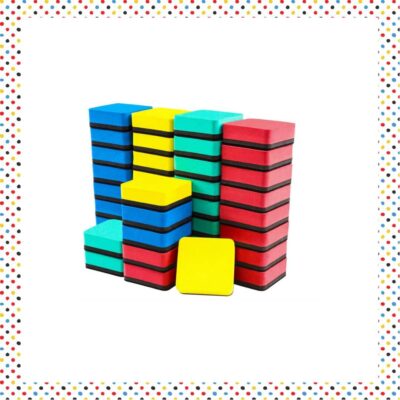
Dry Erase Erasers
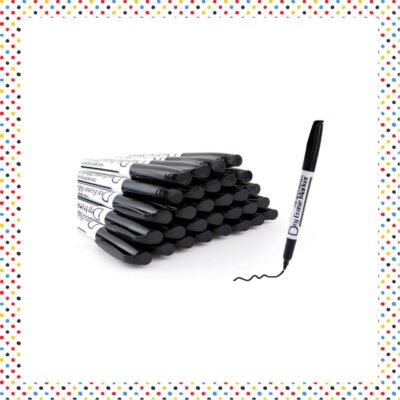
Dry Erase Markers
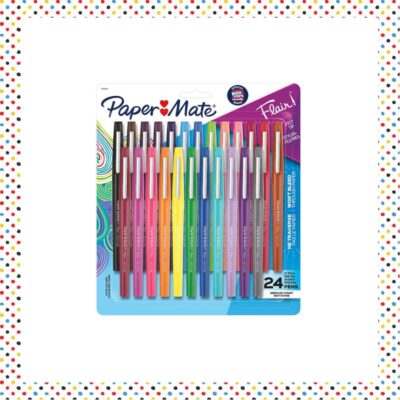
Magnetic Ten Frame Set
“Fall” in love with this seasonal science unit, full of engaging, hands-on activities and teacher materials that will make teaching the unit fun for everyone!
You May Also Enjoy These Posts
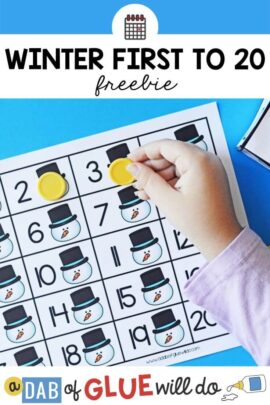
Reader Interactions
Leave a comment cancel reply.
Your email address will not be published. Required fields are marked *
This site uses Akismet to reduce spam. Learn how your comment data is processed .
Filter Results
- clear all filters
Resource Type
- Guided Lessons
- Lesson Plans
- Hands-on Activities
- Interactive Stories
- Online Exercises
- Printable Workbooks
- Science Projects
- Song Videos
middle-school
- Fine arts
- Foreign language
- Math
- Reading & Writing
- Physical Science
- Life Science
- Weather & Seasons
- Nature Activities
- Environmental Science
- Outer Space
- Engineering & Science Practices
- Social emotional
- Social studies
- Arts & crafts
- Holidays
- Seasonal
- Common Core
Weather & Seasons Science Activities and Experiments


Reading & Math for K-5
- Kindergarten
- Learning numbers
- Comparing numbers
- Place Value
- Roman numerals
- Subtraction
- Multiplication
- Order of operations
- Drills & practice
- Measurement
- Factoring & prime factors
- Proportions
- Shape & geometry
- Data & graphing
- Word problems
- Children's stories
- Leveled Stories
- Sentences & passages
- Context clues
- Cause & effect
- Compare & contrast
- Fact vs. fiction
- Fact vs. opinion
- Main idea & details
- Story elements
- Conclusions & inferences
- Sounds & phonics
- Words & vocabulary
- Reading comprehension
- Early writing
- Numbers & counting
- Simple math
- Social skills
- Other activities
- Dolch sight words
- Fry sight words
- Multiple meaning words
- Prefixes & suffixes
- Vocabulary cards
- Other parts of speech
- Punctuation
- Capitalization
- Narrative writing
- Opinion writing
- Informative writing
- Cursive alphabet
- Cursive letters
- Cursive letter joins
- Cursive words
- Cursive sentences
- Cursive passages
- Grammar & Writing
Breadcrumbs
- Weather and Seasons
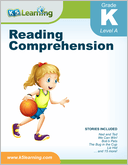
Download & Print Only $3.49
Kindergarten Weather and Seasons Worksheets
Weather and seasons worksheets: fall, winter, spring and summer.
Print out these free pdf worksheets to help your kids learn about the different types of weather and seasons.
| Sunny, rainy, windy, cloudy and snowy | |
| Match the picture to the weather | |
| Draw the weather: rainy, snowy, windy, cloudy | |
| Create a weather wheel | |
| Predict and draw the weather | |
| Learn the 4 seasons: fall, summer, winter and spring | |
| Match the season to activities and conditions | |
| Circle the seasonal clothes, items or activities. | |
| Match the seasons to the months of the year | |
| Identify thunderstorms, tsunami, hurricanes and tornadoes | |

Sample Kindergarten Weather and Seasons Worksheet
What is K5?
K5 Learning offers free worksheets , flashcards and inexpensive workbooks for kids in kindergarten to grade 5. Become a member to access additional content and skip ads.

Our members helped us give away millions of worksheets last year.
We provide free educational materials to parents and teachers in over 100 countries. If you can, please consider purchasing a membership ($24/year) to support our efforts.
Members skip ads and access exclusive features.
Learn about member benefits
This content is available to members only.
Join K5 to save time, skip ads and access more content. Learn More
- Forgot Password?
Get Your ALL ACCESS Shop Pass here →

Spring Science Activities For Kids
Spring science activities for preschool , elementary, and middle school science are a natural choice when the weather turns warm! Plants begin to grow, gardens are getting started, bugs and creepy crawlies are out, and the weather changes. Fun spring topics to add to your lesson plans include weather science, seed science, and more!
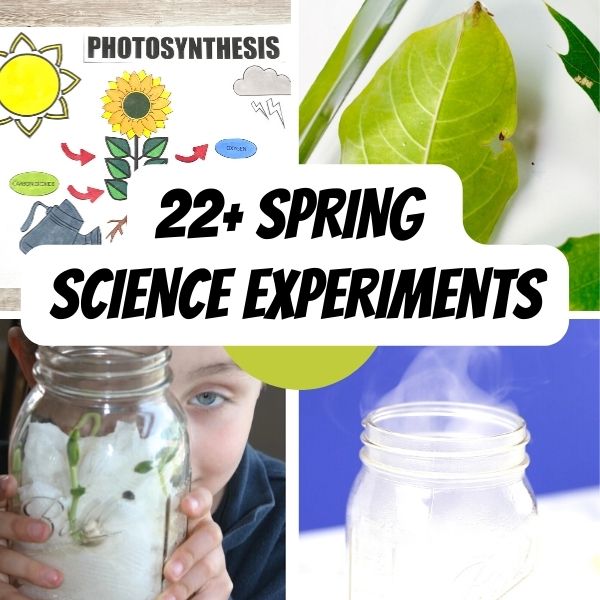
Spring Activities for All Ages to Try
Spring is the perfect time of year for science! There are so many themes to explore. We have put together our best spring science activities that work just as well in the classroom as they do at home or with other groups! These activities are super easy to add to your seasonal lessons—everything you need to know to enjoy nature science easily with your kids.
For this time of the year, my favorite topics to teach your preschoolers about spring include plants and seeds, weather and rainbows, geology , and more! There are plenty of activities to take you from preschool to elementary to middle school.
Below you’ll find links to all of the BEST spring science projects; many have free printable activities to accompany them. You can start by downloading the FREE Spring STEM Cards below!
Another great resource to keep bookmarked is our Spring Printables Page . It’s a growing resource for quick projects.
Click here to get your printable spring STEM Cards!
Free spring stem guide and challenge cards.
You’ll also be sent weekly projects to your inbox! We respect your privacy. Unsubscribe at any time.
Hands-On Spring Activities List
Click on each link below for the full supply list and set-up instructions. We strive to make all our activities and projects as doable as possible and on a tight budget. You don’t have to be a rocket scientist to share science with kids!
Learn About Plants and Seeds
How plants grow and what they need is vital to our everyday lives! From growing bean seeds to dissecting flowers, you can learn all about this important biological process at any age!
Bean Seed Germination
This seed germination experiment is one of our site’s most popular science experiments. Make your own seed jar and get a bird’s eye view of how seeds grow underground. It’s so easy to set up indoors and to do with a large group!
Bean Seed Printable Pack
Add this free printable bean life cycle pack to your seed germination jar project to extend the learning!
Grow Seeds in Eggshells
Observe seed growth by growing seeds in eggshells . Save your eggshells from breakfast, plant seeds, and every so many days, observe how they grow. Planting seeds is always a hit.
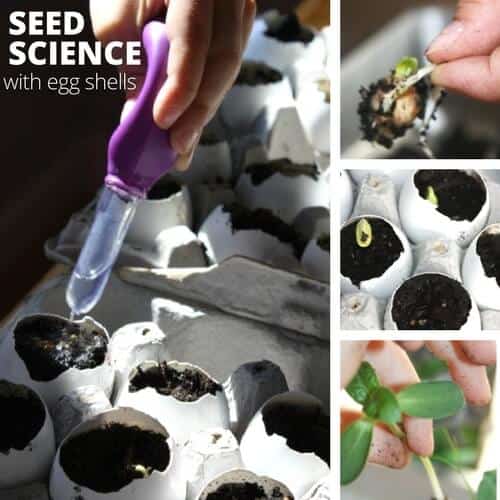
How Plants Breathe
Gather some fresh leaves from the garden and learn about how plants breathe with this easy-to-set-up spring activity.
Plant Cells
Learn about plant cells and create a cell collage using a free template for a spring STEAM project!
Plant Life Cycle
Explore the plant life cycle with this free printable plant life cycle worksheet pack. For younger kids, print this free plant life cycle color by number pack !
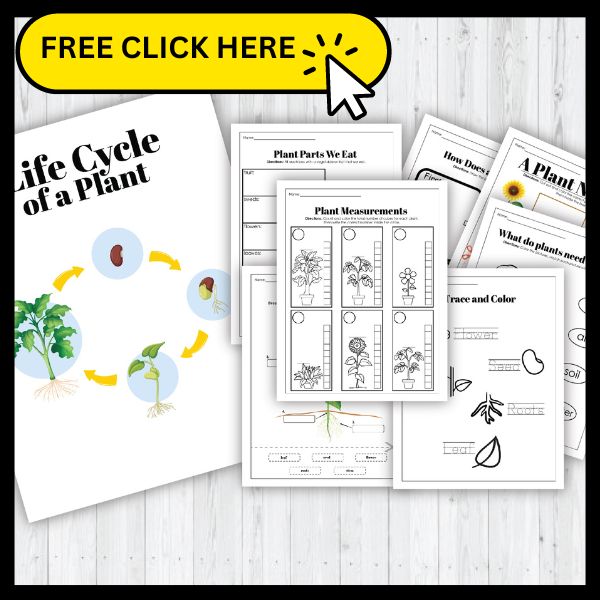
Color Changing Flowers
Turn white flowers into a rainbow of color and learn about the parts of the flower simultaneously with color changing flower experiment.
Easy Flowers to Grow with Kids
Plant some seeds and grow your own flowers with our easy flowers to grow gu ide .
Pollinator Activities
Pollinators play an important role in the reproduction of plants. Explore pollinators with our printable pollinator activity guide , information, and activities!
Grow a Grass Head
Or grow a grass head for a playful spring science project.
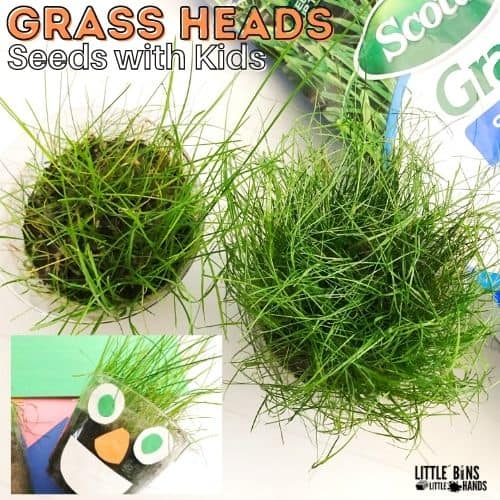

Make Coffee Filter Flowers
Explore the colorful world of science meets art with DIY coffee filter flowers. Make a bouquet for someone special.
Grow Crystal Flowers
Make some cool twisty pipe cleaner flowers and turn them into crystal flowers with simple ingredients.
How To Regrow Lettuce
Did you know that you can regrow certain vegetables from their stalks right on the kitchen counter? Here’s how to regrow lettuce.
See How Water Travels Through Leaf Veins
Learn about how water travels through leaf veins with the kids this spring.
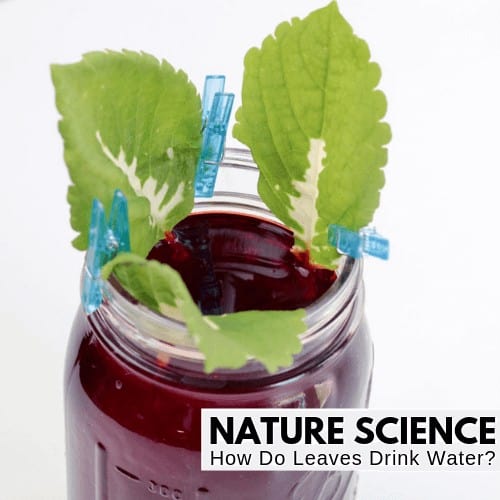
Preschool Flower Activity
Explore real flowers with a 3 in 1 flower ice melt activity , sorting and identifying the parts of a flower and if there is time, a fun water sensory bin.
Parts of a Flower Dissection
For older kids, explore this flower dissection activity with free parts of a flower printable!
Learn About Photosynthesis
What is photosynthesis , and why is it so important to plants?
Make a Homemade Greenhouse
Curious about how a greenhouse works? Make a greenhouse from a recycled plastic bottle.
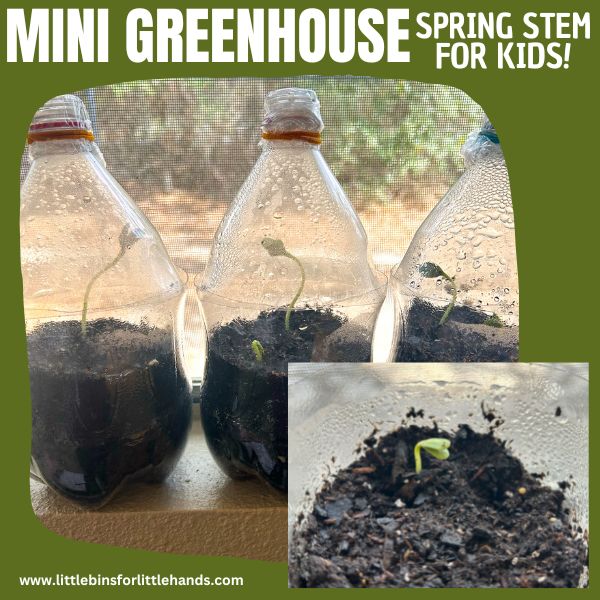
Rainbow Activities
Whether you are exploring the physics of light or want to engage in rainbow theme projects, there are plenty of options for all age groups.
How Do Rainbows Form
How does a rainbow form? Explore the science of light to produce rainbows around your house using various methods.
Grow Crystal Rainbows
Grow crystal rainbows using a classic crystal growing recipe with borax and pipe cleaners.
Try a Rainbow in a Jar
Super easy kitchen science using sugar, water, and food coloring. Explore the density of liquids to create a r ainbow in a jar.
Whip up Rainbow Slime
Learn how to make the easiest rainbow slime ever and create a rainbow of colors!
Mix Up Rainbow Oobleck
Make rainbow oobleck using basic kitchen ingredients. Explore a Non-newtonian fluid with your hands. Is it a liquid or a solid?
Walking Water Experiment
Explore capillary action and color mixing with a walking water demonstration.
Homemade Spectroscope
Make a DIY Spectroscope to see the full spectrum of colors with everyday materials.
CHECK OUT MORE>>> Rainbow Science Activities

Weather Activities
Weather activities are a terrific addition to spring lesson plans but are versatile enough to use any time of the year, especially since we all experience different climates. See all our weather activities for kids here .
Shaving Cream Rain Cloud
Try this classic shaving cream rain cloud for preschoolers and kindergarteners. Kiddos will love the sensory and hands-on play aspect too!
How Do Clouds Form?
This simple Cloud in a Jar Mode l teaches how clouds are formed.
Tornado in a Bottle
This fun Tornado in a Bottle activity is sure to be exciting for preschoolers.
How Does the Water Cycle Work
Water Cycle in a bag is a great way to introduce the water cycle.
Measure Wind Direction
Build a DIY anemometer to measure the direction of the wind.
Four Seasons
Explore the unique characteristics of each season, the weather changes, the types of clothes we wear, and the fun activities we can enjoy throughout the year! Grab the printable four seasons worksheet pack and check out these seasons activities .
Cloud Identification Project
Make your own cloud viewer and take it outside for simple Cloud Identification . Free printable included.

Geology Activities
Our geology activities are ever-growing because my kiddo loves rocks! Rocks are fascinating, and you don’t want to miss our FREE Be a Collector mini-pack ! Go for a walk and see what you can find.
Edible Rock Cycle
Make your own tasty edible rock cycle to explore geology!
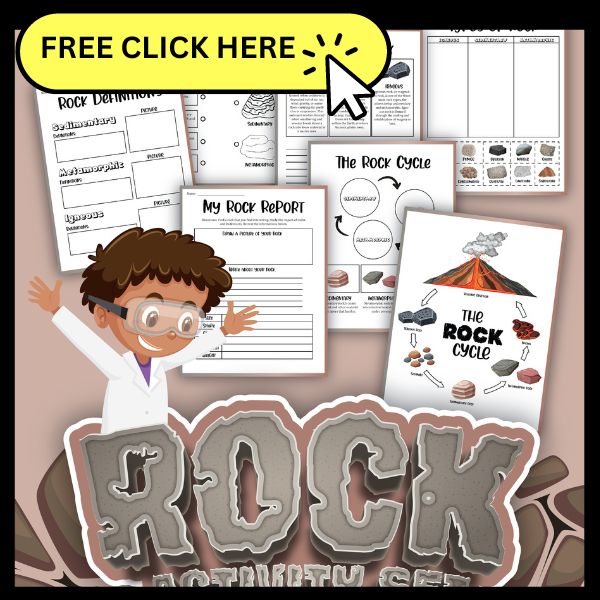
Edible Geode Crystals
Learn how to make edible geode crystals using simple ingredients I bet you already have.
How Do Salt Crystals Form?
Find out how salt crystals form from the evaporation of water, just like it does on Earth.
LEGO Layers of Earth
Explore the layers beneath the Earth’s surface with a simple LEGO layers of the Earth activity. Make sure to look for the free printable pack.
LEGO Soil Layers
Build a model of the layers of soil with LEGO and print out the free soil layers pack.
Tectonic Plates
Try this hands-on tectonic plates model activity to learn more about the earth’s crust.
Soil Erosion
Use crackers to observe how soil erosion occurs, and grab the free printable activity pack.

Nature Theme Activities (Bugs Too)
Are you ready to get outside? If you’ve been cooped up for far too long or even if you need to add new ideas to your existing outdoor time, nature is filled with possibilities for amazing science and STEM activities! Keep the kids busy and give them something to work on this season with these nature activities and printables !
Birdseed Ornaments
Make simple birdseed ornaments and enjoy this fun bird-watching spring activity.
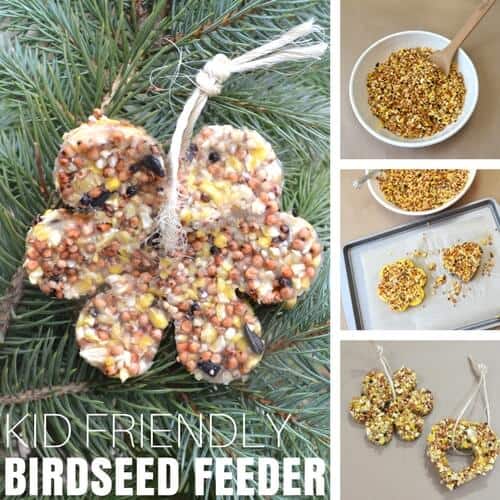
DIY Bird Feeder
We made a DIY bird feeder for winter; now try this easy cardboard bird feeder for Spring!
Ladybug Craft and Life Cycle Printable
Make a simple toilet paper roll ladybug craft and add in this free printable ladybug life cycle pack for hands-on fun and learning!
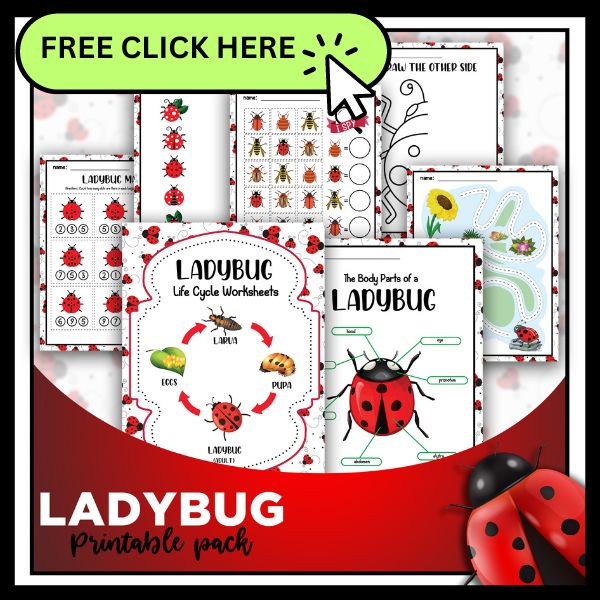
Bee Craft and Bee Lapbook Project
Make a simple toilet paper roll bee and build this bee lifecyle lapbook to learn about these important insects!
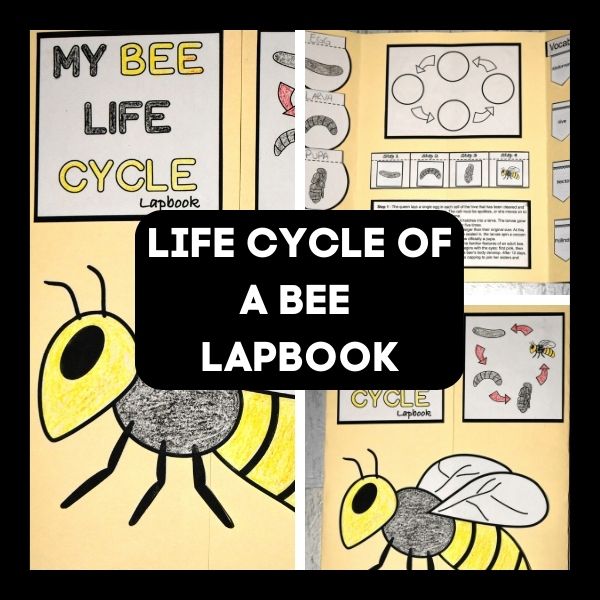
Magic Mud and Earthworms
Make a batch of magic mud with fake worms and use the free printable earthworms life cycle pack!

Create An Edible Butterfly Life Cycle
Make an edible butterfly life cycle to learn about butterflies, and grab this free butterfly life cycle and activities pack to accompany it. Hint: Don’t want to make it edible? Use play dough instead! Also, make a butterfly sensory bin !
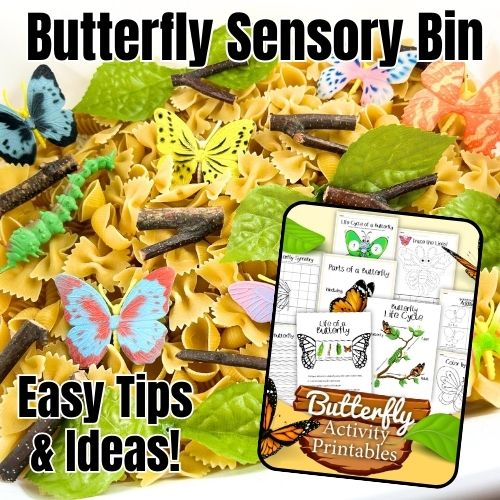
Create Sun Prints
Make sun prints using items around the house and the sun’s rays.
Nature Science Discovery Bottles
Look around your backyard and investigate what’s growing for spring! Then make these spring nature science bottles . Add them to a preschool center or use them with older kiddos for drawing and journaling observations.
Put Together an Outdoor Science Table
Encourage your young scientist to explore and experiment outdoors when the weather warms up with a outdoor science table.
Learn About Bug Life Cycles
Use these free bug life cycle playdough mats to explore a variety of bugs!

Build a Bee House
Create a simple bee house to attract the local nature.
Build an Insect Hotel
Make a cozy bug hotel for insects and other bugs in the garden to visit.
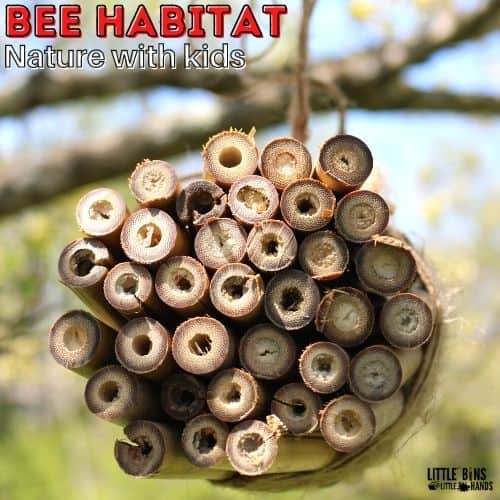
Life Cycle Lapbooks
We have a fantastic collection of ready-to-print lapbooks here that include everything you need for spring and throughout the year. Spring themes include bees, butterflies, frogs, and flowers.
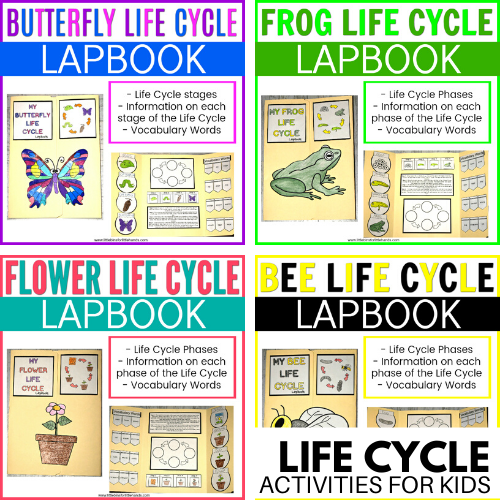
Earth Day Activities for Spring
You can find all of our most popular Earth Day activities here . Here are a few favorites to get you started thinking about Earth Day!
- Make Homemade Seed Bombs
- Try This Earth Day Art Activity
- Recycling Play Dough Mat
- Carbon Footprint Worksheet
Bonus Spring Activities
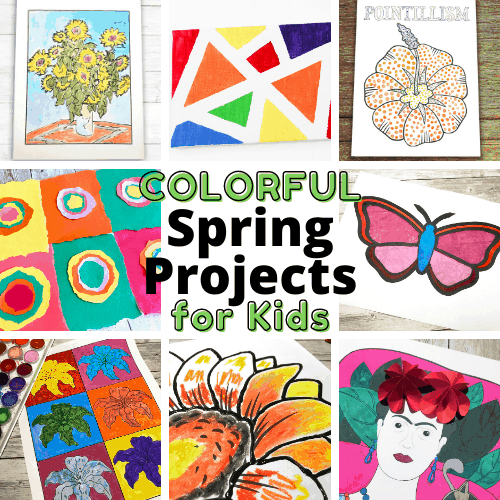
Printable Spring Pack
If you’re looking to grab all of the printables in one convenient place plus exclusives with a spring theme, our 300+ page Spring STEM Project Pack is what you need!
Weather, geology, plants, life cycles, and more!
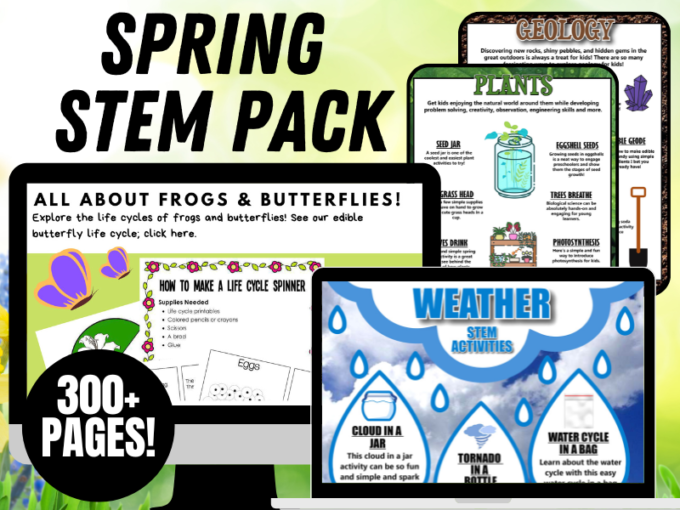
- Pingback: Spring Slime Recipe Using Clear Slime for Spring Theme Science
- Pingback: Spring STEM Activities and Plant Science Activities for Kids
- Pingback: How Do Plants Breathe Activity For Kids | Little Bins for Little Hands
- Pingback: Growing Lettuce from Stumps Kitchen Science Experiment
- Pingback: 3 in 1 Flower Activities For Preschoolers and Spring Science
Comments are closed.

Subscribe to receive a free 5-Day STEM Challenge Guide
~ projects to try now ~.


Posted on Last updated: February 18, 2021 By: Author Kim
Categories STEM Activities
Easy Weather Science Experiments for Preschoolers and Toddlers
Has your child ever asked you where rain comes from? Or what is a tornado? When will it snow? Mine have. And that is awesome.
Weather is an amazing. It is just the sort of real world thing that gets kids excited about learning and STEM . They can see weather. They can feel it, hear it, and touch it.
That hands on learning will get your kids excited about science and wanting to learn more. And it can be very easy to learn about weather. (Bonus, you don’t even have to go outside to these weather activities!)
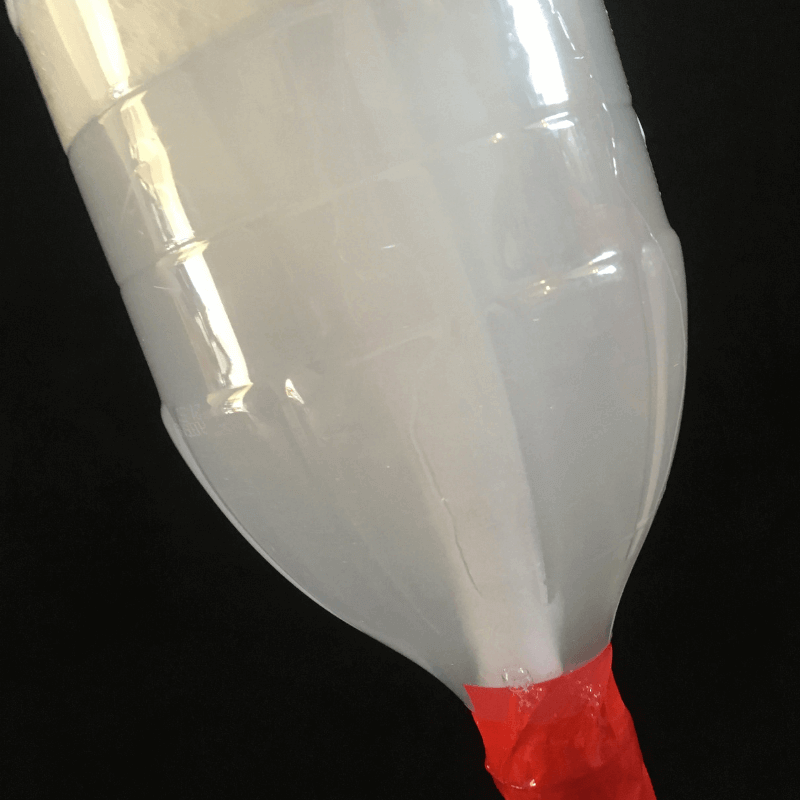
What's In This Post?
Supplies for a Water Cycle Bag
How to make a water cycle bag, supplies for shaving cream rain clouds, how to make shaving cream rain clouds, supplies for a tornado in a bottle, how to make a tornado in a bottle, supplies to make lightning, how to make lightning, supplies to make a rainbow, how to make a rainbow at home.
- Enjoy the Weather!
Water Cycle Bag
Shaving cream rain clouds, tornado in a bottle, lightning with a balloon, instant rainbow, make an instant rainbow, recommended products, weather science experiments for preschoolers and toddlers.
Help your little ones learn about the weather going on outside their front door with these easy weather experiments!
Water Cycle in a Bag
Rain is a part of the water cycle . What’s the water cycle? It’s the pattern of how water moves through our environment.
The sun heats water on Earth and causes it to evaporate into a gas. This gas collects in the sky as clouds. The water in the clouds then condenses, or turns back into a liquid, and falls back to the Earth as rain.
It can be hard to see the whole water cycle in action, but you can make a smaller model at home!
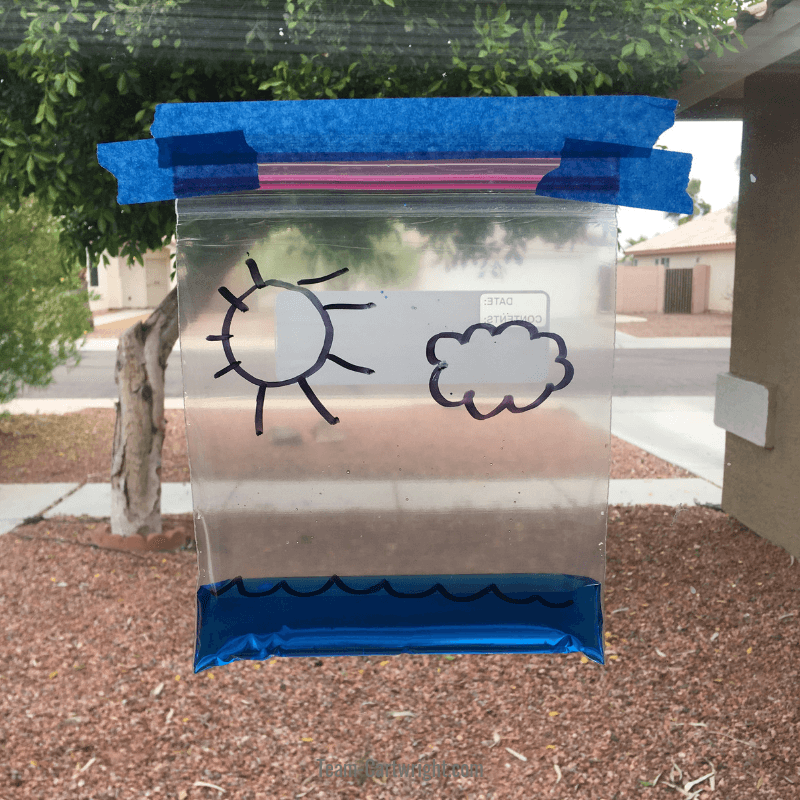
- Sealable baggie
- Blue Food Coloring (Optional)
Take your baggie and draw a cloud at the top. Add a sun up there too. Then draw some lines to represent water towards the bottom of the bag, about an inch high. (The picture shows what I mean.)
Fill your baggie with water up to the water line you drew. You can add a couple of drops of blue food coloring at this point. It just looks cool and makes the water easier to see.
Seal up the baggie well and tape it to a sunny window. Now you wait.
This is an activity you set up and leave for a bit. It takes a little time for the water to evaporate, but you can check back on it throughout the day and see the different parts of the cycle.
The sun will cause the water to evaporate. You can see it start to condense in the clouds you drew. As the condensation builds up it will slide down the sides of the bag back to the water at the bottom. You made rain!
More Must Do Activities
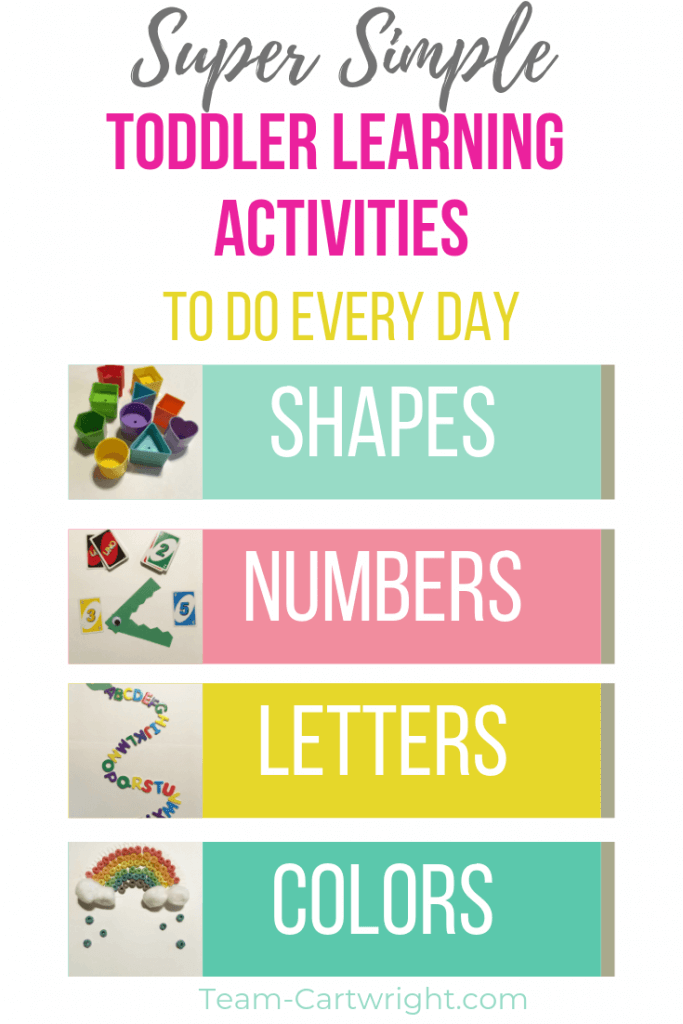
Our water cycle bag isn’t the only way to make rain happen. You can easily make a sensory rain cloud experience for your kids at home with just shaving cream.
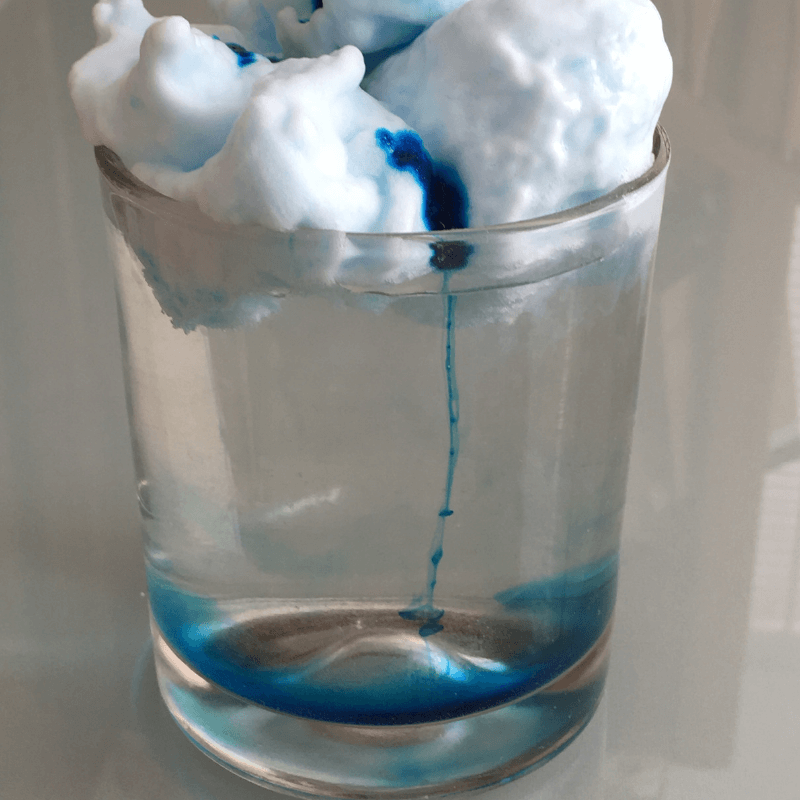
- A Glass or Jar
- Shaving Cream
- Food Coloring
- Dropper or Straw
Fill your glass or jar 3/4 of the way full with water. Add shaving cream to the top. This is our fluffy cloud.
Mix a little blue food coloring with some water. Again, this is option, but it makes the rain much easier to see.
Have your child add drops of the blue water to the cloud. As the water gets heavier and heavier it will start to fall out of the cloud and make rain!
This is what happens with real clouds. The water droplets get heavier and heavier until they fall down as rain. Fun fact: The average cumulus cloud weighs 1.1 million pounds!)
This activity works fine motor skills as your child manipulates the dropper or straw to add the droplets. You can also enjoy the sensory fun of playing with the clouds too.
Looking for more fun? Try these weather tracking worksheets!
Tornadoes are fascinating. But it can be hard to show them to kids as they happen. (Not to mention incredibly unsafe.) But you can make a tornado in a bottle!
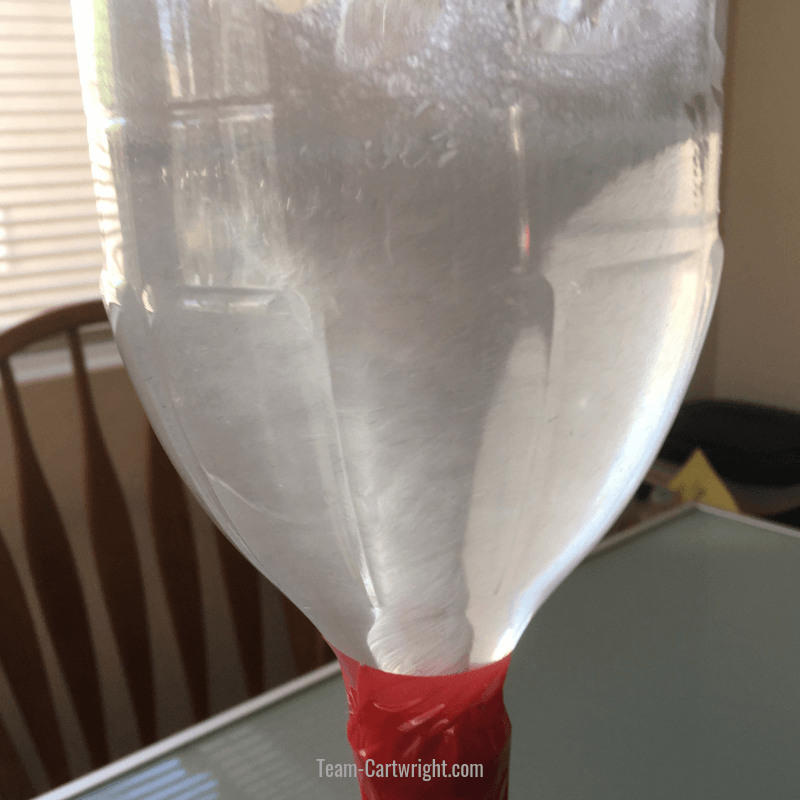
- Two 2-Liter Bottles.
- Glitter (optional)
Fill one empty two liter bottle 3/4 of the way full of water. Add a squirt of dish soap and a sprinkle of glitter. (The glitter is optional. I know that is a controversial craft supply ;). It is pretty and fun, but this activity works just as well without it.)
Take the empty water bottle and put it on top of the filled one, opening to opening. Tape the bottles together so no water can escape.
To make your tornado turn the bottles over and swirl the top bottle in a circle a few times. The water inside will form a tornado!
Now this isn’t exactly like the tornadoes that occur in nature. Most tornadoes happen during thunderstorms. They need warm moist air to meet up with cool dry air. These different air currants create a very unstable system. Increasing wind speeds and changing directions are what cause tornadoes.
This is an extremely simplified explanation. For a more complete understanding, you can read this explanation .
Make Lightning with a Balloon
Lightning is another fascinating weather phenomenon that is cool to watch, but you don’t really want your kids out in a thunderstorm. So you can make lightning at home!
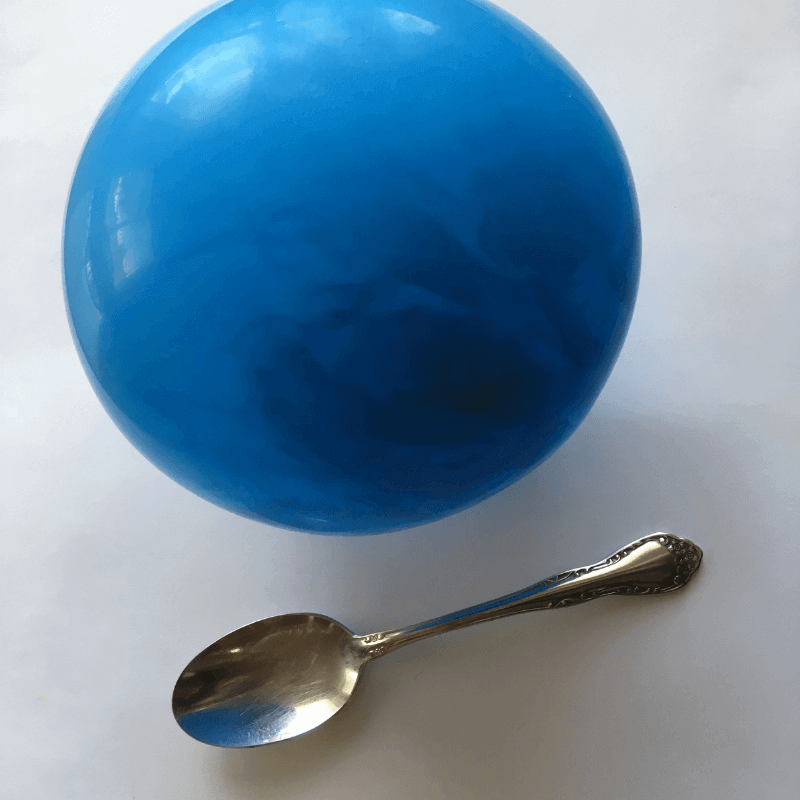
- Metal Spoon
- Your Child’s Head
Blow up the balloon. Take your child into a room that you can make completely dark. (We used the bathroom.)
Rub the balloon over your child’s head. Then turn off the light and touch the spoon to the balloon. You should see a spark. You made lightning!
The spark won’t be very big which is good from a safety standpoint. But it is a decent representation of what happens in a lightning storm.
Charges build up in a cloud with negative charges being at the bottom of the cloud. This in turn causes positive charges to build up down on the surface of the earth. Eventually, these two opposite charges build up enough to attract and you get lightning!
Rainbows are beautiful, especially because they usually appear after the rain. But you don’t have to wait for a storm to make one at home!
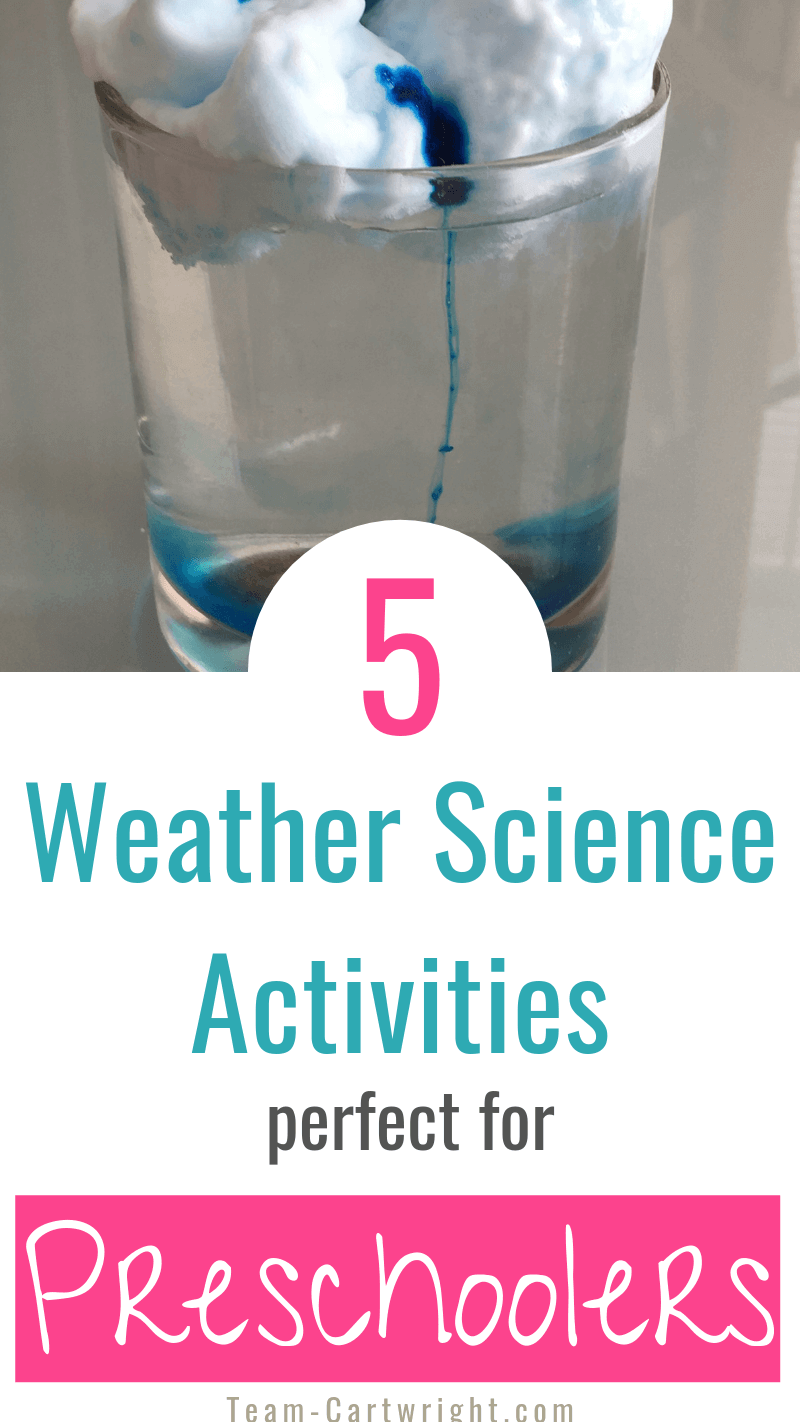
- Glass of Water
- Piece of White Paper
This one is super simple. Take a glass of water, about 3/4 of the way full, and take it to a sunny spot in your home. Right by a window works best.
Hold your glass of water up over the piece of paper and move it into the sunbeam. You should see a rainbow on the paper!
You might need to move the glass around a bit, but you should get a nice rainbow. Try moving the glass around to see how it changes.
This rainbow is the result of refracted light. The water bends the light waves, separating it into the different wavelengths that make up white light. These wavelengths are the colors we see.
You can learn more about how we see colors (and get fun color STEM activities) here: Color STEM for Kids .
Enjoy the Weather !
There are lots of great resources to learn more about weather. Here is one of my favorites: http://www.weatherwizkids.com/ .
And just get out and talk about the weather with your kids! It is just the sort of real world thing that gets kids excited about learning and STEM. They can see weather. They can feel it, hear it, and touch it.
That realness makes STEM come alive.
Get More STEM Activities
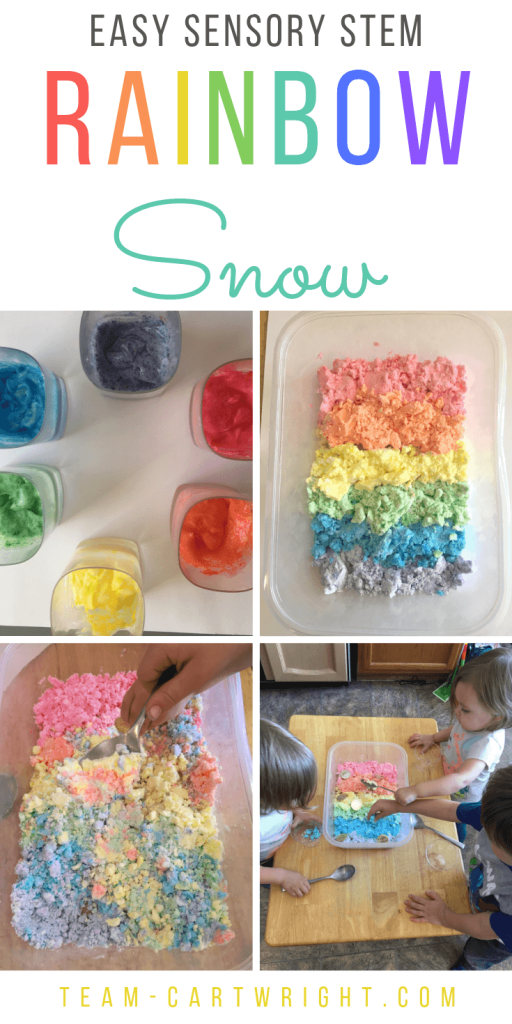
5 Fun and easy weather science experiments for preschoolers and toddlers. Help your children explore their world with these simple learning activities you can do with at home items.
- Sealable Baggie
- Glass or Jar
- Glitter (Optional)
- White Piece of Paper
Instructions
- Take a baggie and draw clouds near the top and water at the bottom.
- Add water to the bag up to the water line you drew.
- Add a few drops of blue food coloring.
- Seal the baggie and tape it to a sunny window.
- Watch the water cycle over the course of the day!
- Fill a glass 3/4 full of water.
- Add shaving cream to the top of the glass.
- Mix a few drops of food coloring with water.
- Add drops of the mixture to the shaving cream clouds and watch it fall down into the water like rain.
- Fill one empty 2-liter 3/4 full of water.
- Add a squirt of dish soap and a sprinkle of glitter.
- Turn the other 2-liter upside down and place it on top of the first. Tape the necks of the bottles together so the opening are lined up.
- Flip the bottles and swirl the top one to create a tornado!
- Blow up a balloon.
- Rub the balloon on your child's head for 90 seconds.
- In a dark room, touch a metal spoon to the balloon.
- You will get a spark like lightning!
- Fill up a glass with water.
- Stand in a sunny spot (like by a window).
- Hold the glass of water in the sunlight and over a piece of white paper.
- A rainbow will appear from the refracted light!
As an Amazon Associate and member of other affiliate programs, I earn from qualifying purchases.
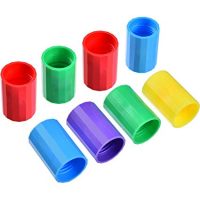
How useful was this post?
Click on a star to rate it!
Let us improve this post!
Tell us how we can improve this post?
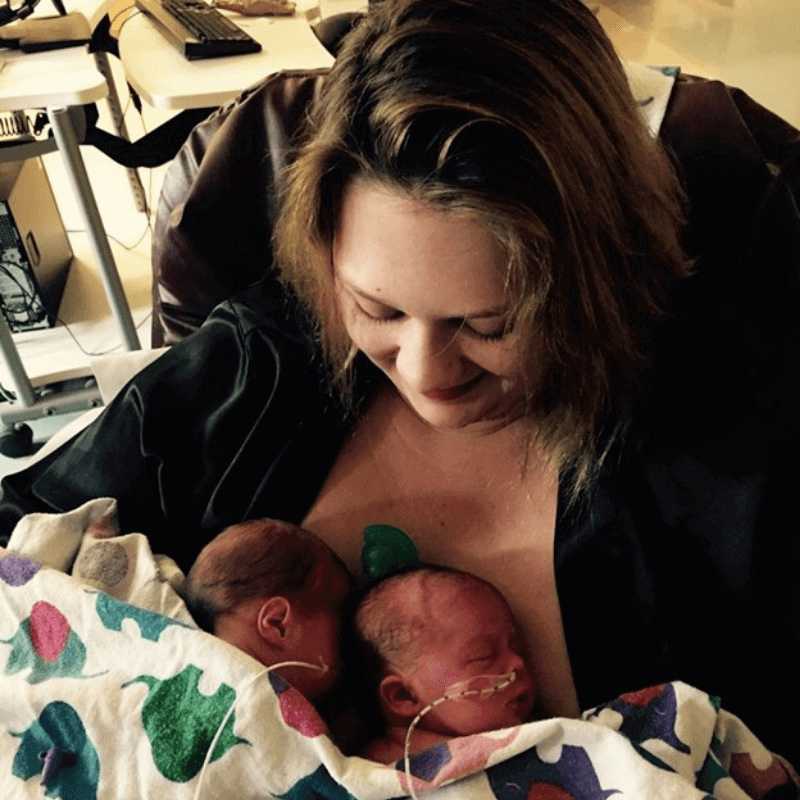
* Checkbox GDPR is required
This site uses Akismet to reduce spam. Learn how your comment data is processed .
- STEM Ambassadors
- School trusts
- ITE and governors
- Invest in schools
- STEM careers inspiration
- Benefits and impact
- Our supporters
- Become a STEM Ambassador
- Request a STEM Ambassador
- Employer information
- Training and support
- STEM Ambassadors Partners
- Working with community groups
- Search icon
- Join the STEM Community
Year 1: Seasonal changes
This list consists of lesson plans, activities and songs and video clips to support the teaching of seasonal changes in Year One. It contains tips on using the resources, suggestions for further use and background subject knowledge. Possible misconceptions are highlighted so that teachers may plan lessons to facilitate correct conceptual understanding. Designed to support the new curriculum programme of study it aims to cover many of the requirements for knowledge and understanding and working scientifically. The statutory requirements are that children are taught to:
· observe changes across the four seasons
· observe and describe weather associated with the seasons and how day length varies.
Visit the primary science webpage to access all lists.
Seasonal changes: wonderful weather
Quality Assured Category: Science Publisher: Hamilton Trust
This resource provides an opportunity for making tables and charts about the weather. Make rain gauges and place them in different areas around the playground. This then provides a great opportunity to develop measuring skills as they collect and measure the amount collected each day for a week. Fill in a chart to show how full the gauge was each day. To make it easier represent the rainfall using empty, half-full or full, then show this on a chart. The results over a longer time period could be observed and discussed, with children creating a class display of the water collected for each month.

Seasonal Changes
Quality Assured Category: Science Publisher: Sigma Science
This activity helps illustrate seasonal changes and how daylight length change over the course of a year. It contains a 4 seasons weather disc template for children to make. The disc highlights 4 different times of the day and what may be observed at these times during the different seasons.

Seasons and weather
A whole host of activities linked to seasons and the weather.
Our Changing World Display Poster
Quality Assured Category: Science Publisher: Early Learning HQ
This resource linked to the topic of seasonal changes contains a display banner showing the changing of the seasons from Spring to Summer, Autumn to Winter. It is ideal to use as part of a classroom display when discussing the different seasons in early years and lower primary.

Weather and Seasons Word Mats
A time saving resource containing a selection of word mats displaying keywords and illustrations relating to the weather and the four seasons. It provides an ideal literacy aid / prompt when discussing the seasons. These posters will also provide a stimulating display when learning about the seasons:
Children Dressed for the Seasons Posters
Seasons song
This song with images is a fun way to learn about different types of weather, and how people prepare for the expected weather conditions. Discuss how people would prepare for different types of weather and the types of clothes they would wear. Show pictures of different activities and ask children to think about the weather they would like e.g. a skier, a child with a kite, hanging out washing, playing on the beach, playing in the snow, skating and playing in the park.
It is worth noting that children often think that it is winter because it is cold and snowy, or that it is summer because it is hot. It is in fact cold because it is winter. This often confuses children especially as the UK weather can also be 'unusual' for the time of year!
Seasons spotter sheets
Quality Assured Category: Science Publisher: The Wildlife Trusts
This series of spotter sheets are useful when identifying living things in their habitats at different times of the year. They contain sheets for each of the seasons include sheets which help to identify:
- Autumn leaves
- Autumn wildlife
- Trees in spring
- Spring wildflowers
- Summer flowers
- Summer waders
- Woodland wildlife in summer
Ginn Science Activity Sheets: Year One
Quality Assured Category: Science Publisher: Ginn
A treasure chest of activity ideas and worksheets to supplement learning in Year One. Use the seasons sheets to compare the four seasons and the activities we do in each.

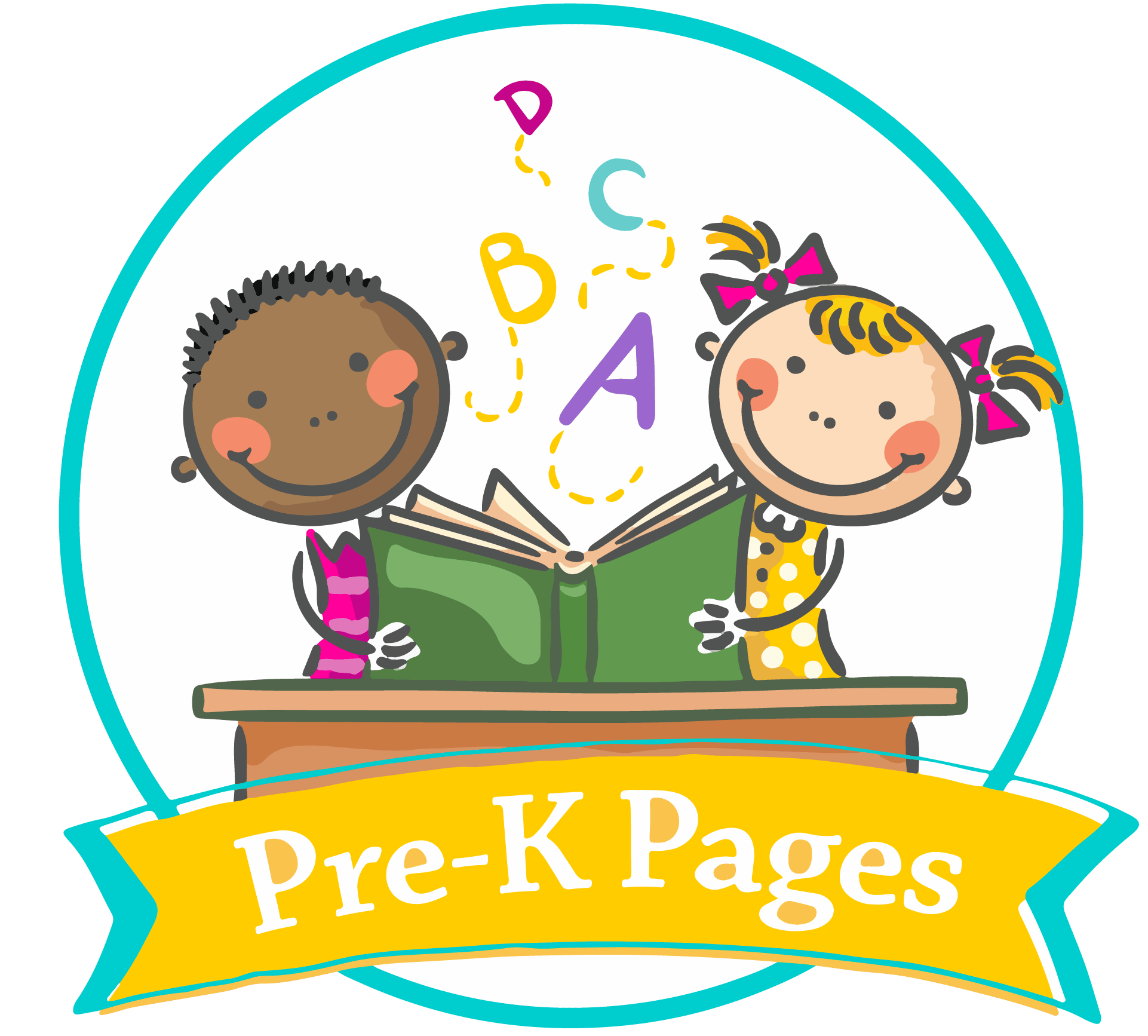
Ready to Make Circle Time Amazing?
Sign up for our FREE newsletter and receive my ebook 7 Circle Time Mistakes
Thanks for subscribing! Please check your email for further instructions.
Activities for Exploring the Four Seasons

The changing from winter to spring to summer to fall is a great way to begin to talk with preschoolers about the passage of time . Even if your area does not have visible changes for each season, your preschoolers can begin to know what happens at different times of the year. (Warmer in the summer; Christmas is in winter; you can buy pumpkins in the fall; and so forth.) These activities can lead preschoolers to explore the whole year, think about different seasonal changes, and discuss what happens in other locales during the seasons.
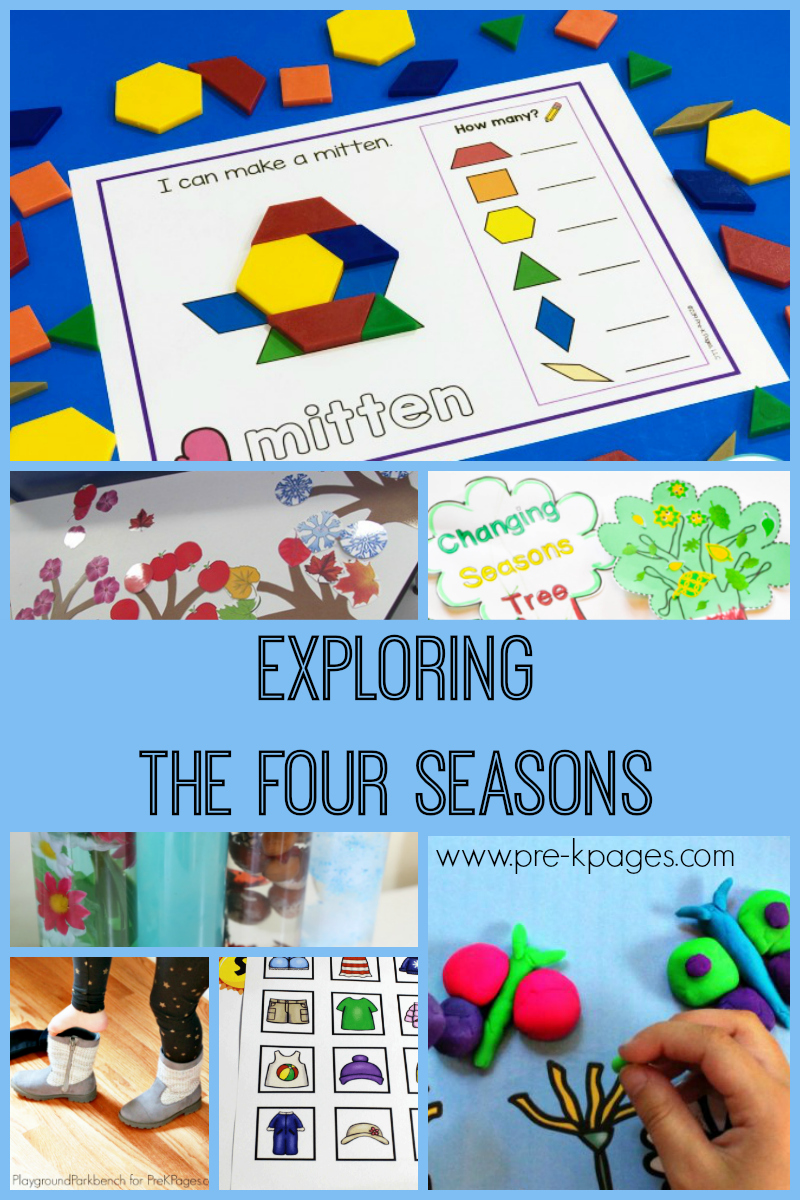
Seasons Activities for Preschool
Books About Seasons (Pre-K Pages)
Geoboards Season Task Cards (Pre-K Pages)
Season Pattern Blocks (Pre-K Pages)
Books About Trees (Pre-K Pages)
What’s the Weather? Dramatic Play Dress Up Center (Pre-K Pages)
Earth Science Books for Kids (Pre-K Pages)
Life Science Books for Kids (Pre-K Pages)
Weather Movement Game (Pre-K Pages)
Weather Process Art Activities (Pre-K Pages)
Nature Investigation Table (Pre-K Pages)
Seasonal Trees Nature Craft (Little Pinch of Perfect)
Printable Tree Book (Little Pinch of Perfect)
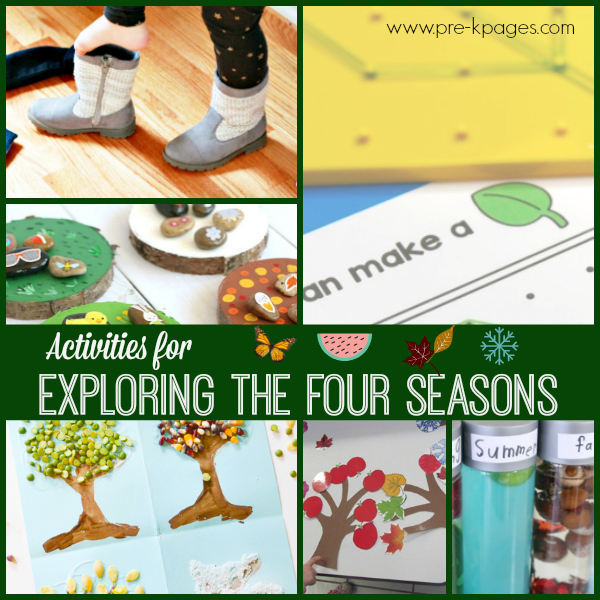
Activities Related to the Four Seasons
Sorting Seasons with Rocks and Stones (Buggy and Buddy)
Four Seasons Tree Cups for Light Play (Play Trains)
Four Seasons Agamograph (Easy Peasy and Fun)
Seasons of an Apple Tree Book Activity (Kids Activities)
Season Sensory Bottles (Mama, Papa, Bubba)
Moving with “Four Seasons” (Not Just Cute)
Weather and Season Cards (Prekinders)
Four Seasons Sorting Activity (Totschooling)
Alphabet Activities for the Seasons (No Time for Flash Cards)
Seasonal Tree Activity Box (Teach Preschool)
Four Seasons at the Sticky Table (Teach Preschool)
Season Playdough Mats (Natural Beach Living)
Clothing Sort Printable (From ABCs to ACTs)
Fall Activities Winter Activities Spring Activities Summer Activities
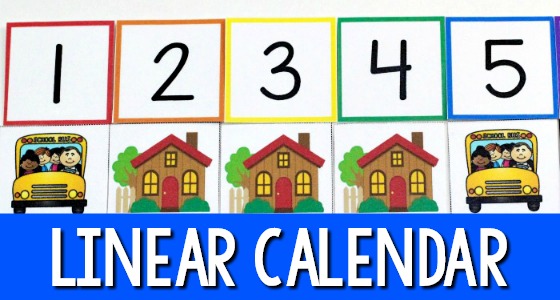
- Grades 6-12
- School Leaders
Win a $100 gift card each day this month! 🎁
Every product is independently selected by (obsessive) editors. Things you buy through our links may earn us a commission.
45 Easy and Fun Science Activities for Preschool
Introduce curious little minds to a world of discovery.
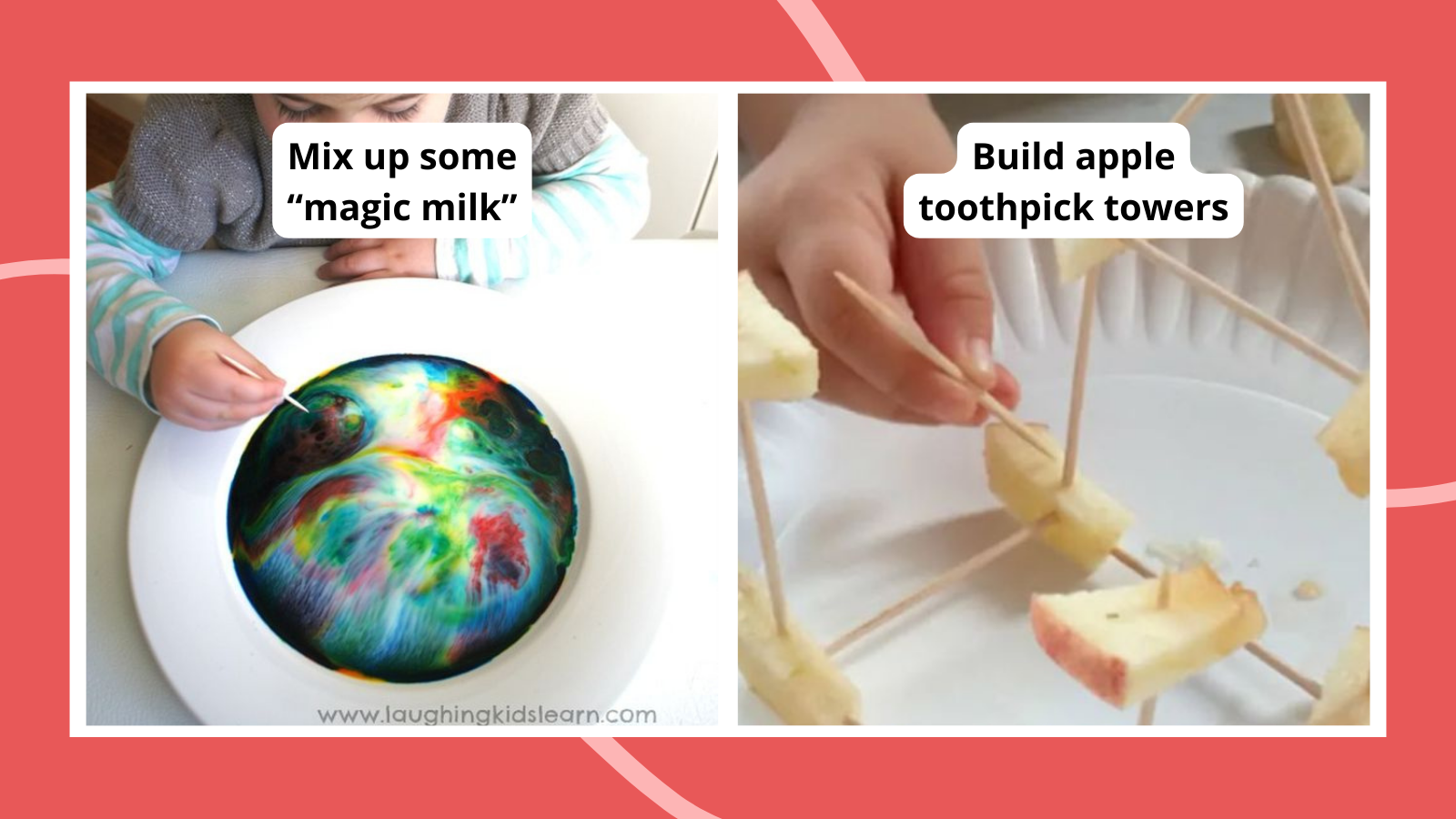
Every day is a new opportunity for toddlers to ask “Why?” over and over. Tap into that curiosity with these fun and engaging science activities for preschoolers. These simple experiments incorporate many preschool favorites like playing with bubbles or water, making arts and crafts, and, of course, making a mess!
To make things even easier, we’ve rated every one of these preschool science activities for preschoolers based on difficulty and materials.
Difficulty:
- Easy: These are low- or no-prep experiments you can do pretty much anytime
- Medium: These take a little more setup or a longer time to complete
- Advanced: Experiments like these take a fairly big commitment of time or effort
- Basic: Simple items you probably already have around the house
- Medium: Items that you might not already have but are easy to get your hands on
- Advanced: These require specialized or more expensive supplies to complete
Water Preschool Science Experiments
Stem challenges for preschoolers.
- Seasonal Preschool Science Activities
More Science Activities for Preschoolers
These water activities for preschoolers help teach little learners a variety of science concepts. (These can get a little messy, so you might want to try them outside.) Find even more water science activities here.
Make music with xylophone bottles
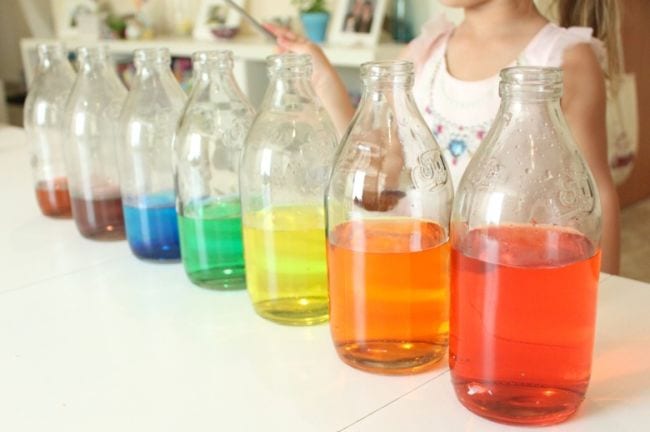
Difficulty: Easy / Materials: Basic
The classic experiment using varying levels of water in glasses or bottles is even more fun when you add some food coloring. Experiment with different water depths and mallet styles to make all kinds of beautiful music!
Learn more: Xylophone Bottle at Mama Papa Bubba
Surround kids with an oversized bubble
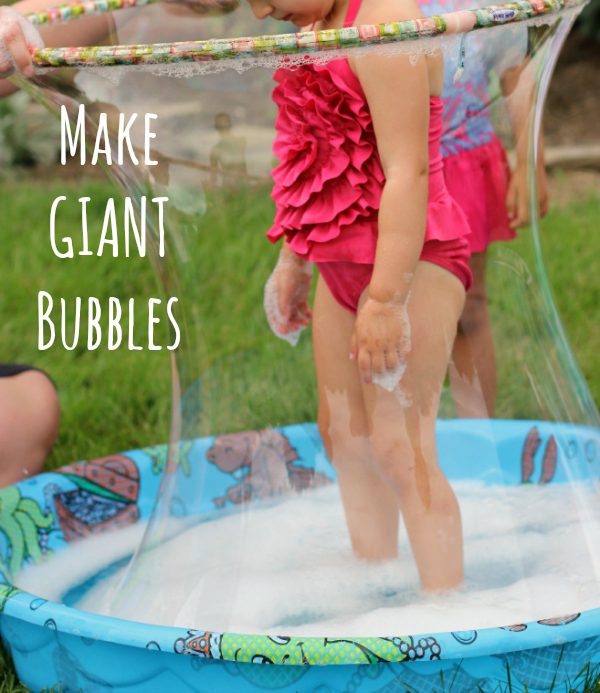
Difficulty: Easy / Materials: Medium
Kids (and let’s face it, adults too) will definitely get a kick out of this fun science experiment. While you’ll only need a kiddie pool, some dish soap, and a Hula-Hoop to make this a reality, the payoff will be big.
Learn more: Giant Bubbles at Make and Takes
Watch rice dance in water
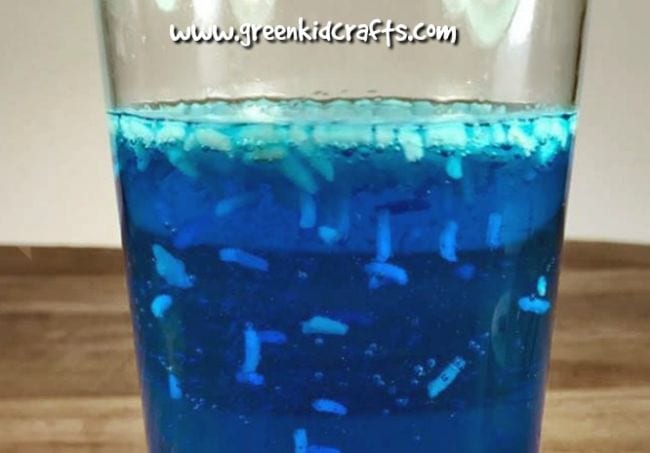
There are lots of cool baking-soda-and-vinegar experiments out there ( ever made your own volcano ?), but this one is always a favorite with little ones. The acid-base reaction causes the rice to dance and jump around in the water for an effect that is just so cool!
Learn more: Dancing Rice at Green Kid Crafts
Reveal colors with chemical reactions

Preschool science experiments often include a combination of baking soda and vinegar like this one. Fill muffin tins with a drop of food coloring, then top it with baking soda. Finally, let kids squirt in vinegar to reveal fabulous foamy hues! (Be sure to wear eye protection for this one.)
Learn more: Fizzy Fun at Busy Toddler
See what sinks and what floats
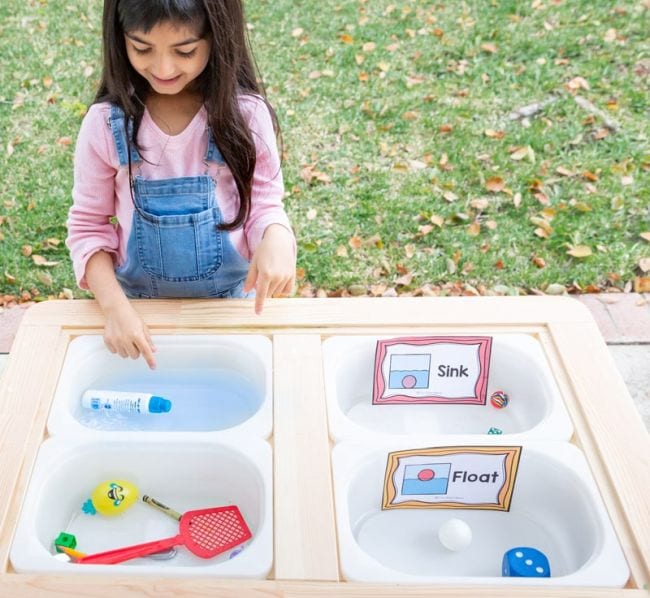
This preschool science activity helps kids learn to construct a hypothesis, conduct a simple experiment, and then sort their findings by property.
Learn more: Sink or Float at Fun With Mama
Learn what dissolves in water
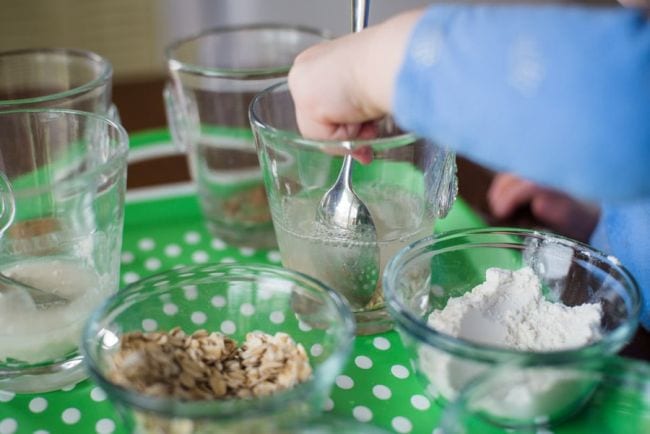
Engage in more water play by having kids predict which items will dissolve in water and which ones won’t. Have kids keep track of the results so they can see if they have anything in common.
Learn more: What Dissolves in Water? at Hands On as We Grow
Watch hot water rise and cold water sink
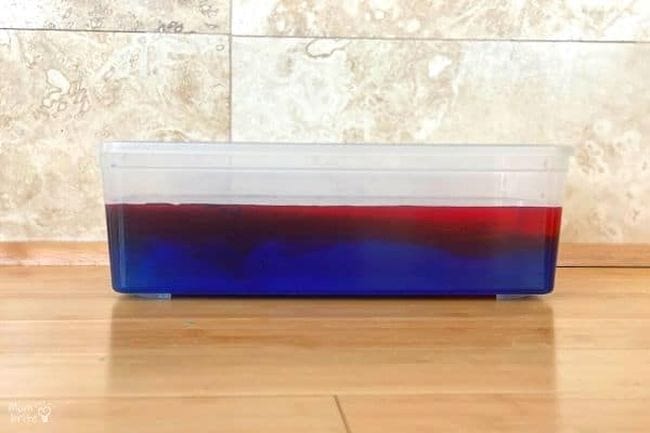
This early exploration into the concept of density is always impressive to see in action. Have kids discover how hot water rises and cold water sinks. Explain that the same applies to air, and see if kids can think of a way to observe that in action too.
Learn more: Water Density Experiment at Mombrite
Grow a paper towel rainbow
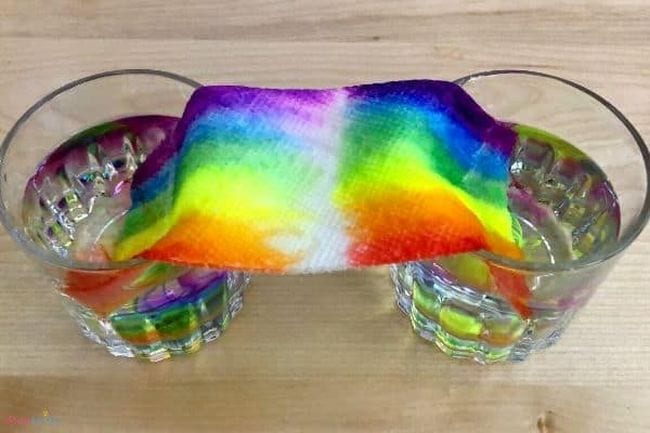
“Capillary action” might be a real mouthful for preschool science students, but they don’t need to remember the term to be impressed by this experiment! All you need are markers, a paper towel, and two glasses of water.
Learn more: Capillary Action Experiment at Mombrite
Make shaving cream rain clouds
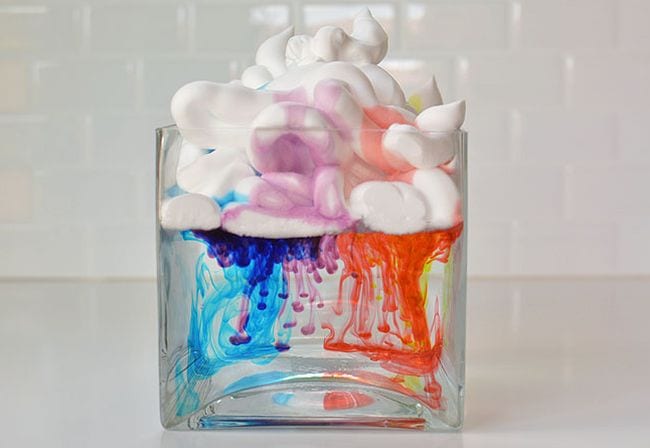
This is a classic science activity every kid should try at least once. It helps them understand how clouds become so saturated with water that they must release it in the form of rain.
Learn more: Shaving Cream Rain Clouds at One Little Project
Blow bubble towers
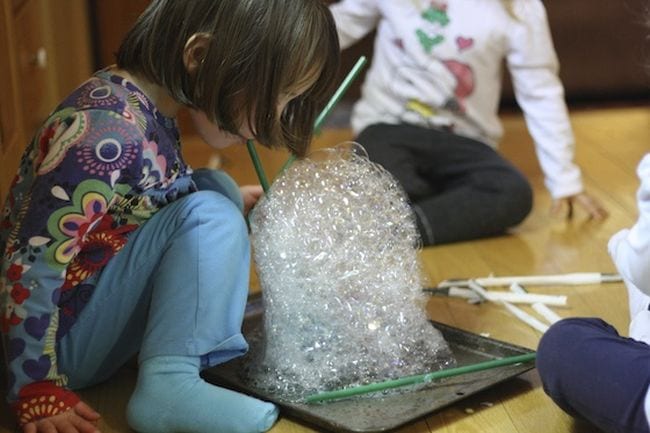
There are lots of fun science activities you can do with bubbles to explore concepts like surface tension. Or you can just have a blast seeing who can make the tallest tower with bubbles and straws.
Learn more: Bubble Towers at Happy Hooligans
STEM challenges give students a chance to try solving problems on their own. Give them some basic supplies and instructions, then let them experiment until they find a solution to the challenge.
Rescue toys from hot lava
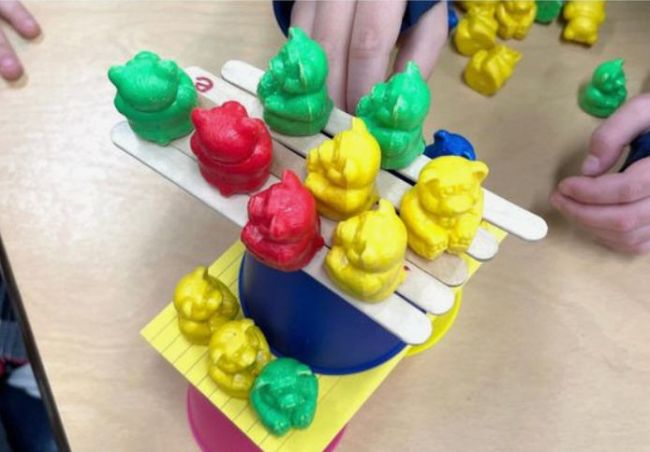
While you might not want pre-K kids climbing all over the classroom furniture to play “The Floor Is Lava,” they can do the same thing with their toys in this cute STEM challenge.
Learn more: Floor Is Lava at Forward With Fun
Build a catapult

Challenge students to build a catapult using just three items: Popsicle sticks, elastics, and a plastic spoon. You’ll definitely want to have an extra set of adult hands available as this can prove challenging for pre-K kids. Finally, bring plenty of marshmallows or pom-poms to launch.
Learn more: Make a Catapult at Education.com
Discover strength in shapes
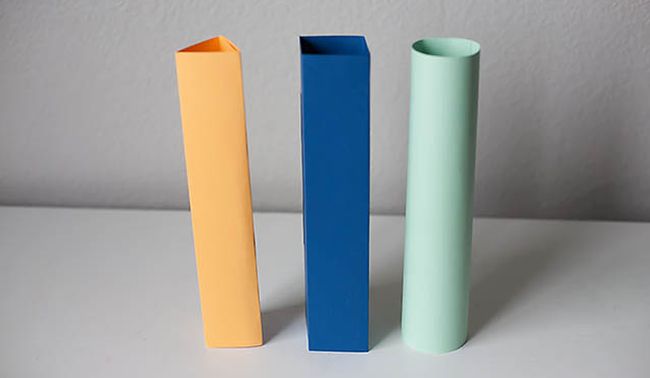
Learn shapes while also practicing some basic science. Fold paper into various shapes to form columns and ask kids to predict which will be able to support the most books.
Learn more: Strength in Shapes at All for the Boys
Build an aluminum foil boat
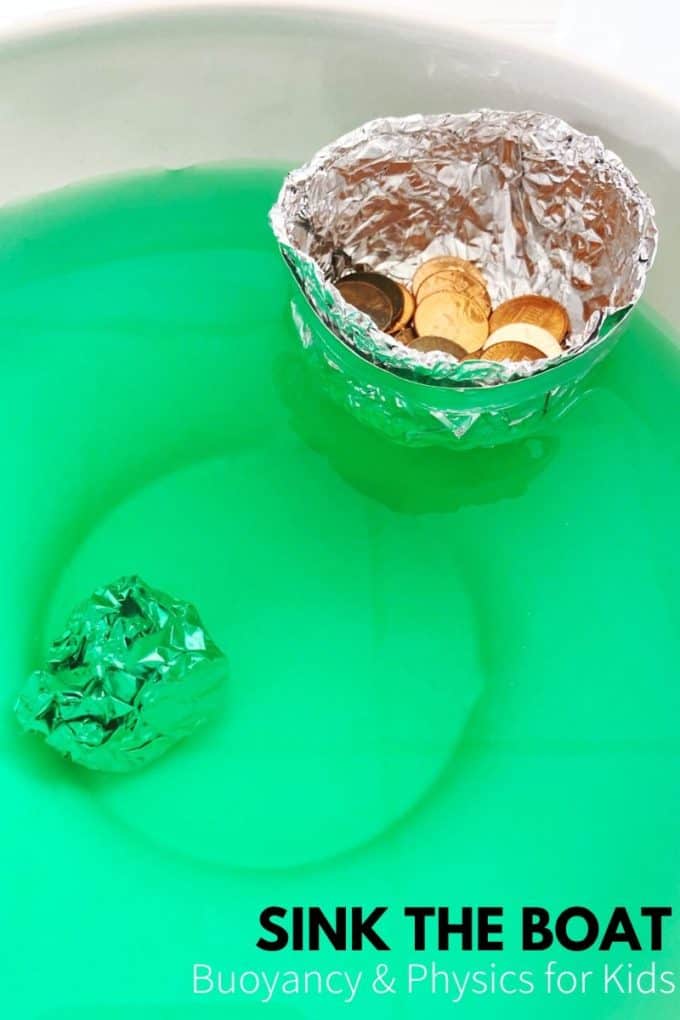
Teach kids about buoyancy and physics while having fun in the process. First, give your students some tinfoil and challenge them to build a sturdy boat. Then, challenge them to fill the boat with as many pennies as they can without it sinking.
Learn more: Foil Boat Challenge at Little Bins for Little Hands
Waterproof a boot
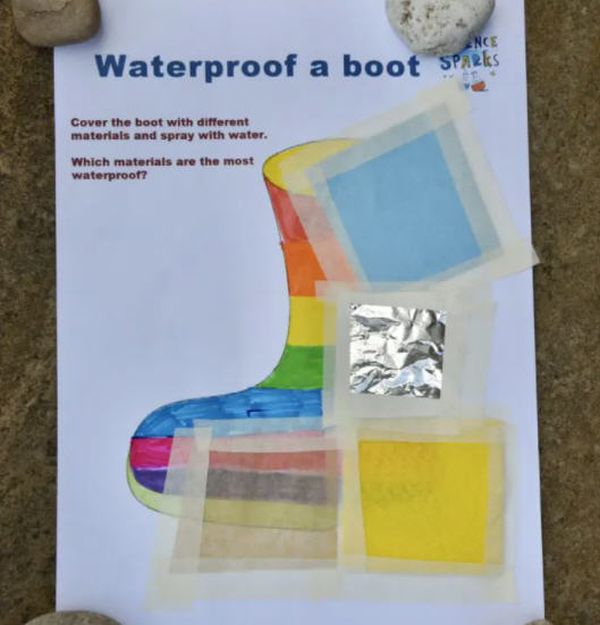
Ask kids to select various materials and tape them over the free boot printable found at the link. Then, test their hypotheses to see which ones work best.
Learn more: Waterproof a Book at Science Sparks
Reach for the sky
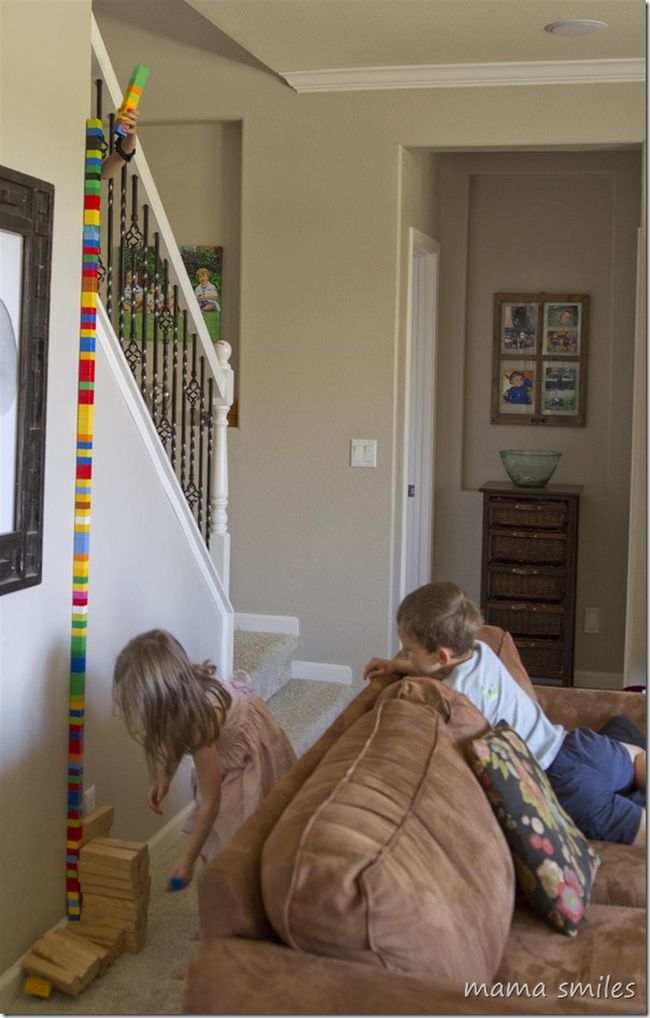
Round up all your building blocks and try this whole-class project. What will students need to do to be able to construct a tower that reaches all the way to the ceiling?
Learn more: Tower Engineering Challenge at Mama Smiles
Link up the longest paper chain
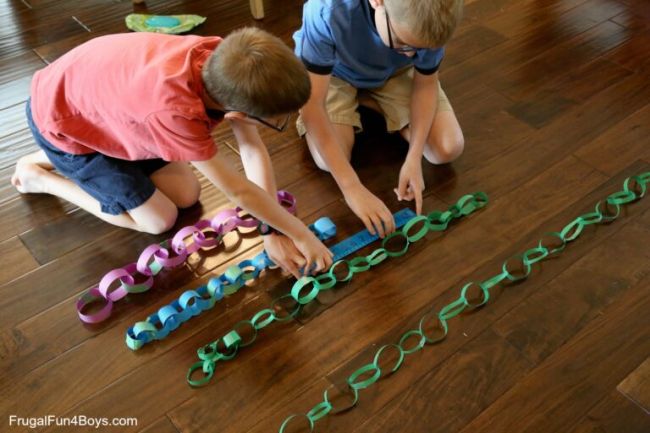
This incredibly easy preschool STEM activity really gets kids thinking. The challenge? Create the longest possible paper chain using a single piece of paper. So simple and so effective.
Learn more: Paper Chain Challenge at Frugal Fun for Boys and Girls
Build an apple toothpick tower
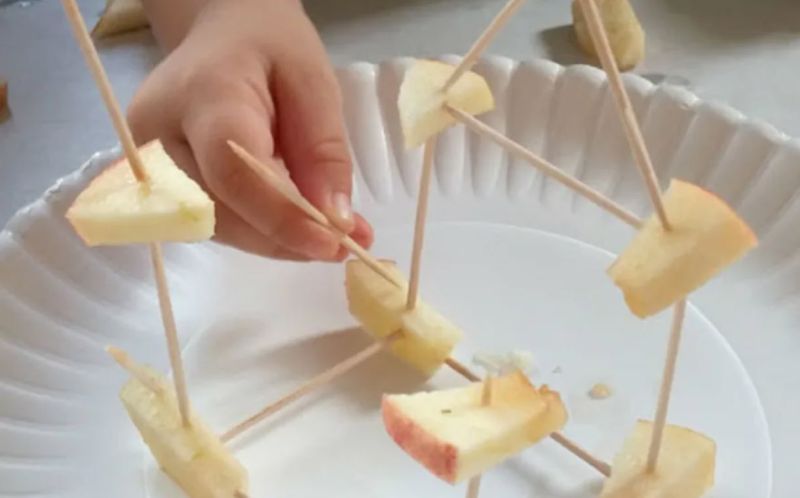
Put a healthy spin on a classic STEM challenge by substituting apple pieces for marshmallows. Kids will have a tasty snack when they’re done!
Learn more: Apple Toothpick Tower at N. Family Club
Stack up plastic cups
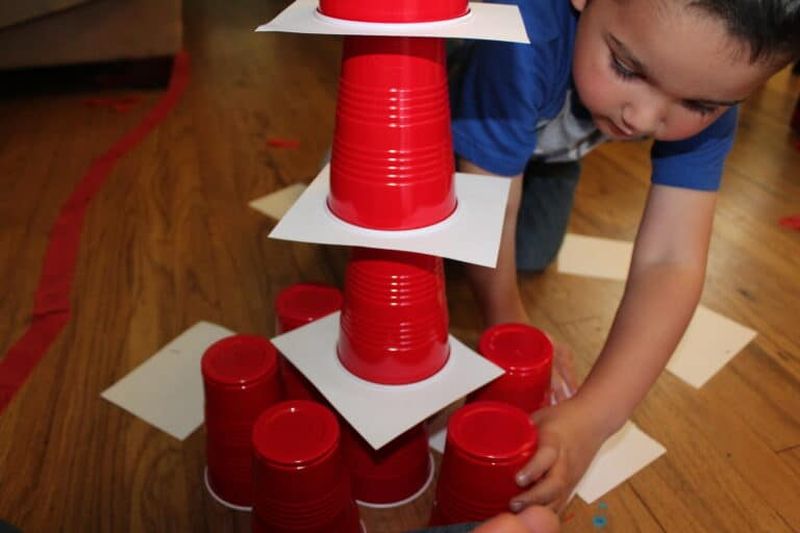
Kids absolutely love stacking cups ! Turn the play into a STEM challenge by adding index cards into the mix. Kids can experiment to see if they can build taller towers with or without the cards.
Learn more: Solo Cup Engineering Challenge at The Salty Mamas
Craft a nest
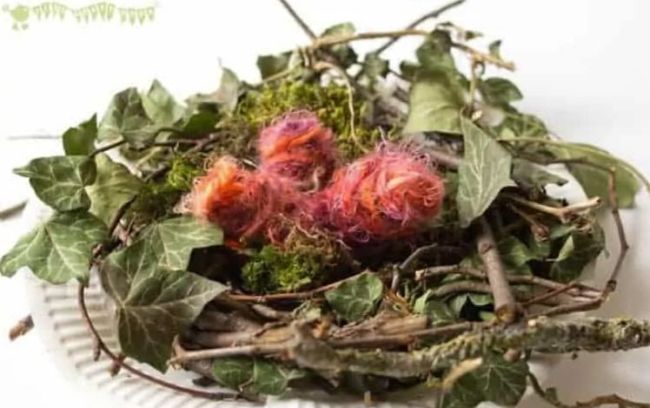
Take a nature walk and pick up items like sticks, leaves, and more. Then, build your own bird nests to protect little eggs and hatchlings.
Learn more: Build a Nest at Pink Stripey Socks
Seasonal Science Activities and Experiments for Preschoolers
Whether you’re looking for Halloween science activities , winter science experiments , or Easter egg activities , find them all and more here!
Make pretend snow
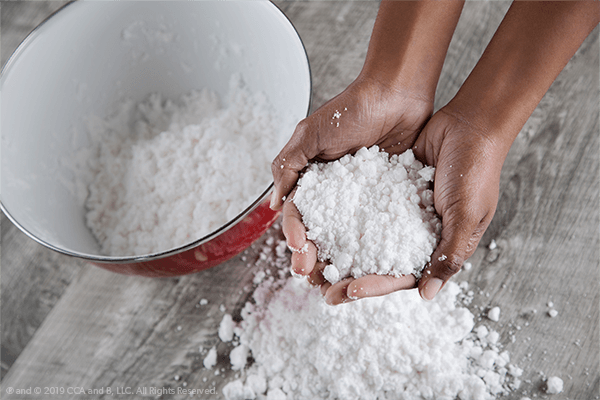
No snow where you live? Make some yourself! Find easy recipes for “snow” using baking soda, shaving cream, cornstarch, and other household items. Experiment to find the one that works best.
Learn more: Make Pretend Snow at Elf on the Shelf
Explore how mittens keep you warm
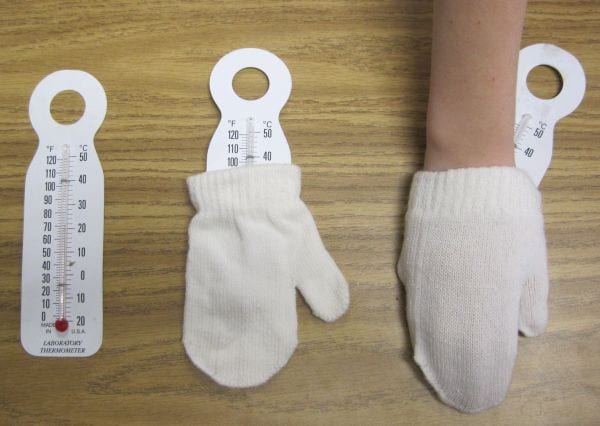
Ask little ones if mittens are warm, and they’ll likely answer yes. But when they measure the temperature inside an empty mitten, they’ll be surprised by what they find. Learn about body heat and insulation with this easy experiment.
Learn more: Mitten Body Heat Experiment at Classroom Magic
Measure the water content of snow
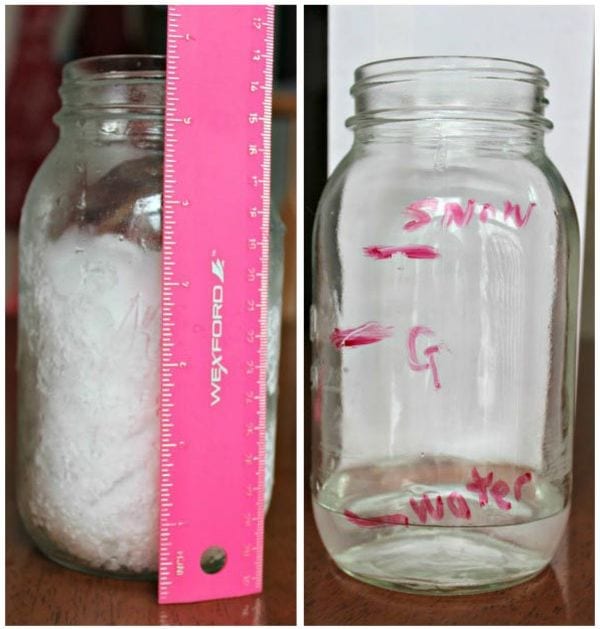
Two inches of snow is not the same as two inches of rain. This easy winter science experiment measures the amount of water actually found in an inch of snow.
Learn more: How Much Water Is in Snow? at KC Edventures With Kids
Create salt crystal hearts
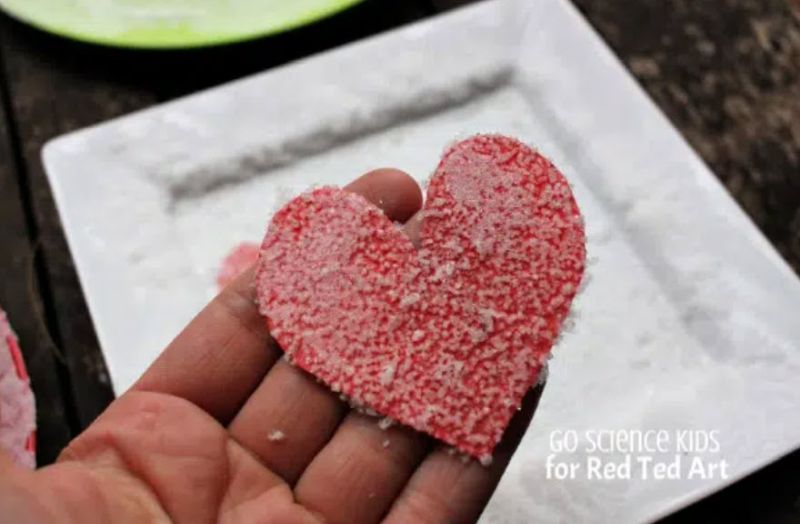
Difficulty: Medium / Materials: Basic
Make these pretty red crystalized hearts as Valentine’s Day decorations, or anytime you want to show someone some love!
Learn more: Salt Crystal Hearts at Red Ted Art
Grow grass in an eggshell
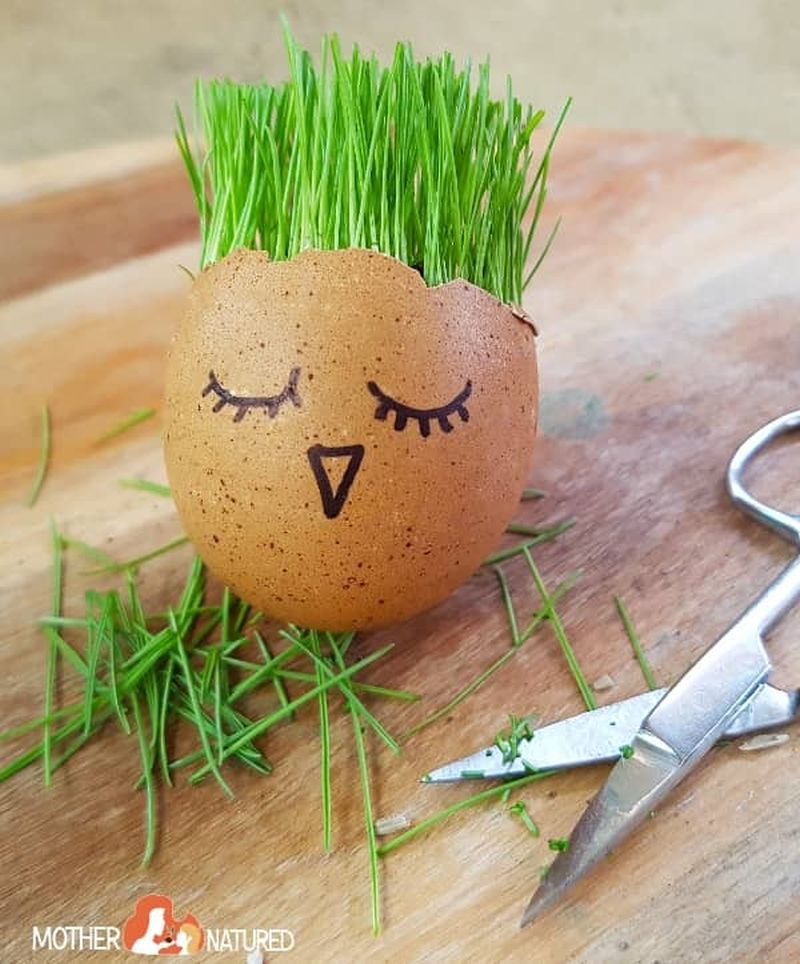
Difficulty: Medium / Materials: Medium
What’s more fun than a preschool science experiment that doubles as a craft? You’ll need eggs, soil, grass seeds, water, and a permanent marker to bring this project to life. Kids will especially love personalizing their eggshell.
Learn more: Egg Grass Heads at Mother Natured
Decompose a jack-o’-lantern
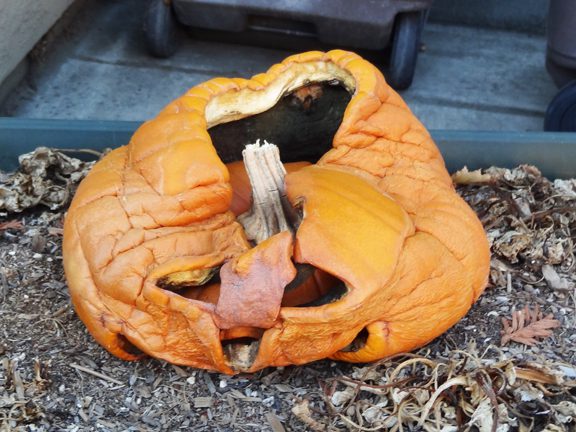
When Halloween is over, plop your jack-o’-lantern pumpkin in the garden and observe it each day. Kids learn how organic matter breaks down over time.
Learn more: Pumpkin Decomposition at Gift of Curiosity
Send a ghost flying with magnets
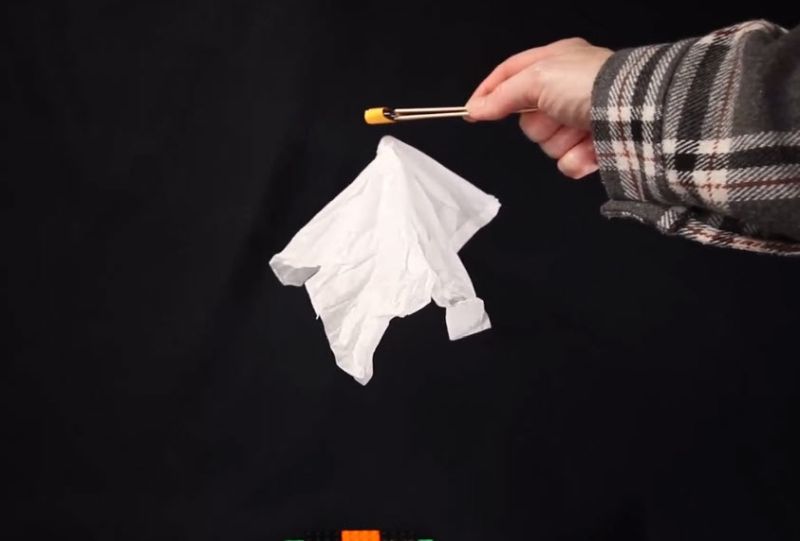
Use magnets along with a few other supplies to make a tissue ghost seem to float in midair! It’s the perfect spooky Halloween science activity for preschoolers.
Learn more: Flying Ghosts at STEAM Powered Family
Conduct experiments on marshmallow Peeps
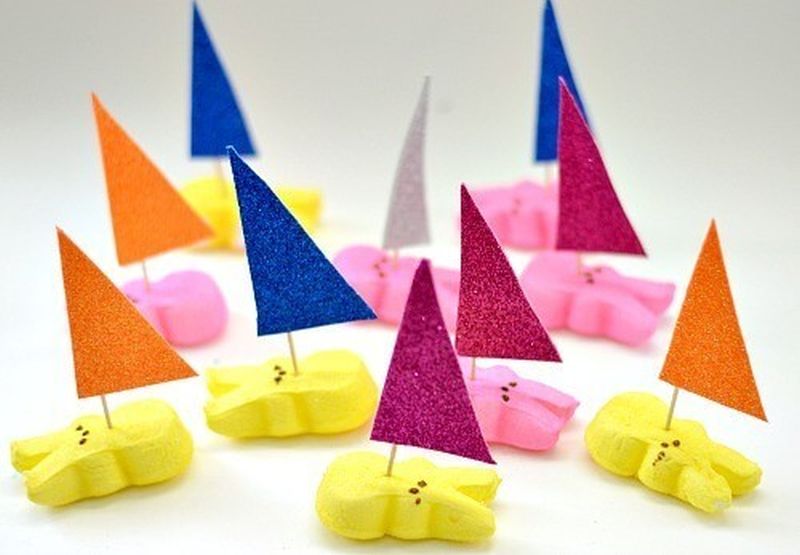
Pick up a package of marshmallow Peeps (they’re available during many seasons of the year now), and try turning them into little boats. Experiment with different sail sizes and types, and figure out how to make the candy boats go faster.
Learn more: Marshmallow Peep Boat Challenge at Lemon Lime Adventures
Launch plastic egg rockets
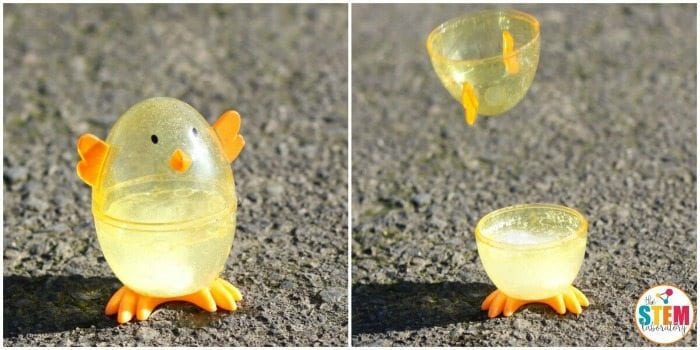
Put on some safety goggles and get ready for lift-off! This simple experiment uses Alka-Seltzer tablets to turn eggs into rockets.
Learn more: Easter Egg Rockets at The STEM Laboratory
Dissolve colorful turkey “feathers”
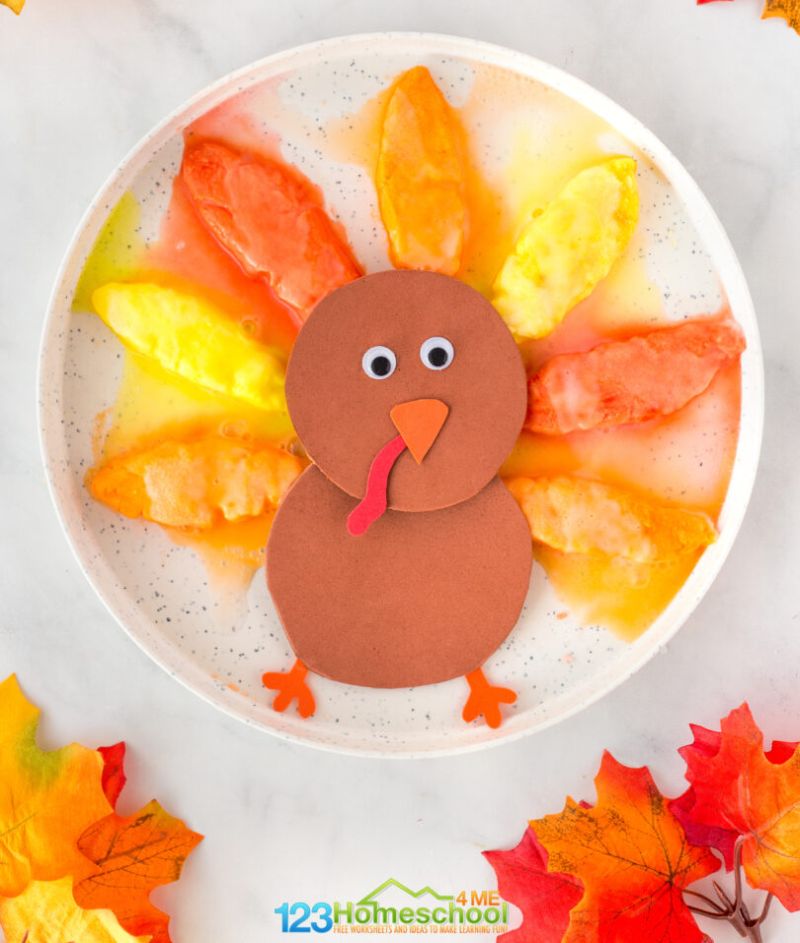
Baking soda and vinegar experiments are always popular, and this one is so cute for the Thanksgiving season. Build your own little turkey with baking soda feathers, then watch them foam up and dissolve when you add some vinegar.
Learn more: Turkey Feather Science at 123 Homeschool 4 Me
These science activities and experiments give preschoolers a chance to explore all sorts of science concepts, from plants and animals to germs and gravity and beyond.
Slice apples to learn about oxidation
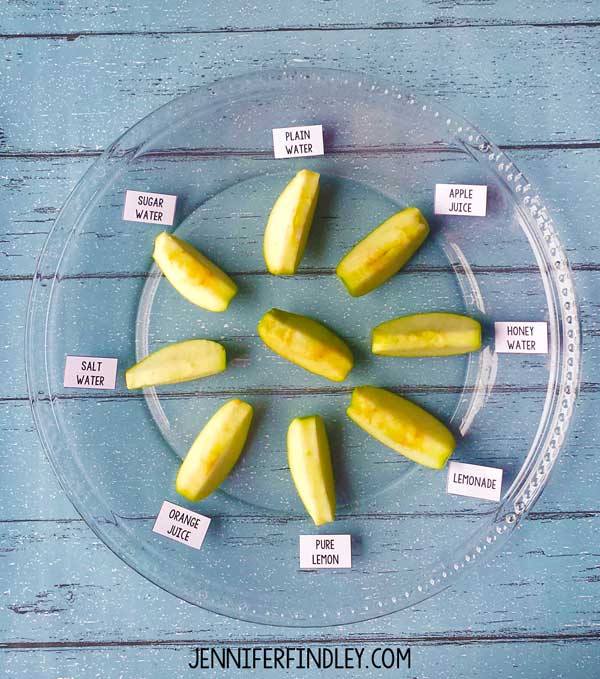
Here’s another classic preschool science activity: using apple slices to learn about oxidation (and how to prevent it). When you’re done, you’ve got a tasty snack to eat too.
Learn more: Apple Oxidation at Teaching With Jennifer Findley
Show why sunscreen is important
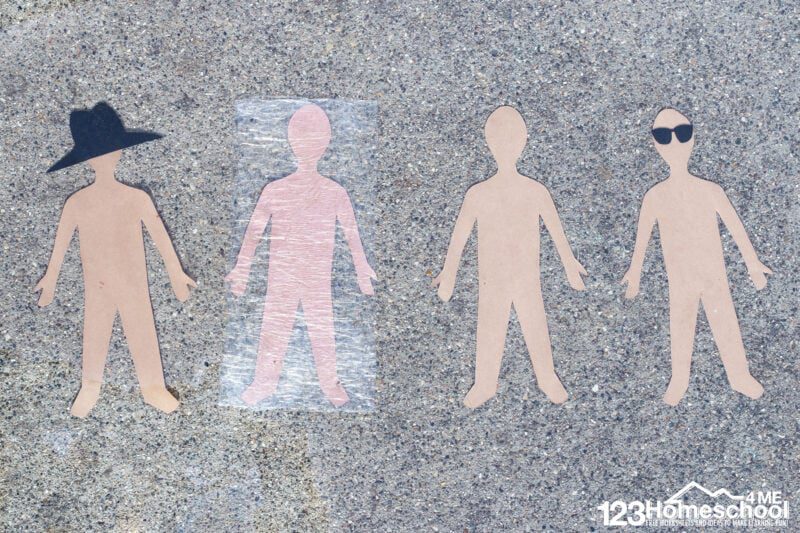
First, have your students make four construction-paper people, each with varying conditions. Wrap one in plastic wrap, cover another in sunscreen, put a hat on one and a set of sunglasses on another. Ask kids to hypothesize what will happen when they’re left out in the sun, then see if they’re right!
Learn more: Sunscreen Experiment at 123 Homeschool 4 Me
Engage in some shadow science
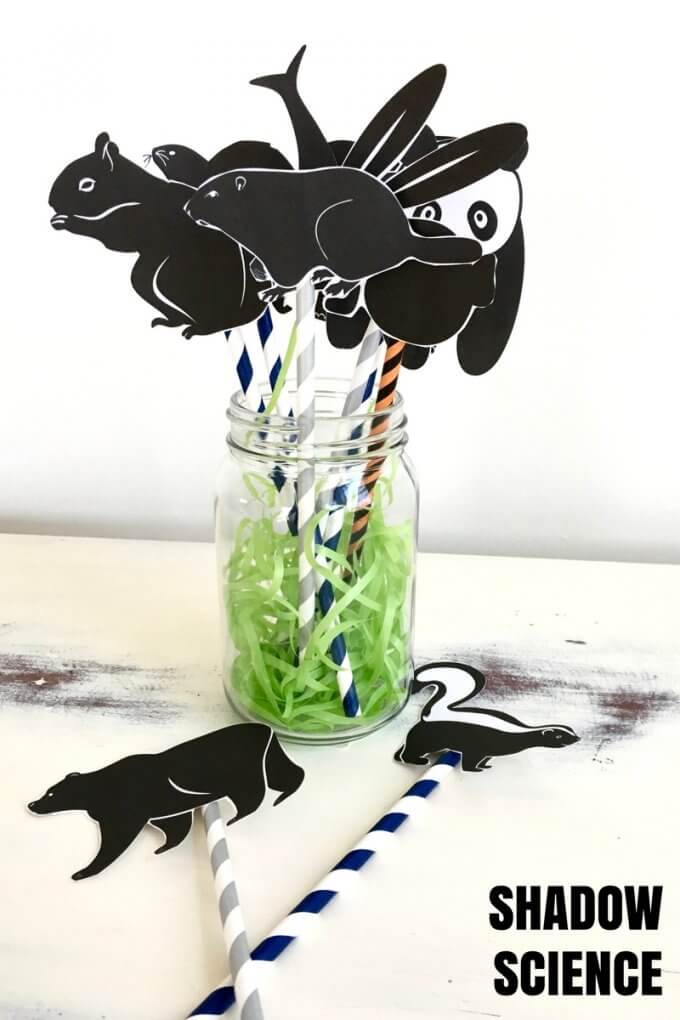
Learn about animals and shadow science with these adorable and easy puppets. Use them to act out some scenarios involving these creatures in their natural habitats.
Learn more: Shadow Science at Little Bins for Little Hands
Mix up some “magic” milk
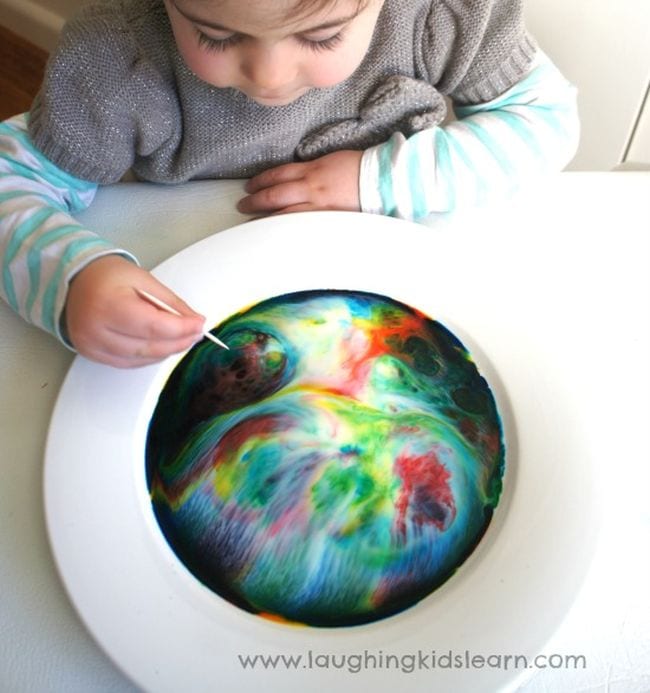
A drop or two of dish soap will make food coloring dance and swirl across the surface of a shallow bowl of milk. Preschool science experiments often seem like magic, but this one is all about surface tension and chemical reactions.
Learn more: Magic Milk at Laughing Kids Learn
See how easily germs spread
We love a preschool science experiment that reminds little ones of the importance of good handwashing. Help them see why it’s so important with this simple experiment that uses glitter to stand in for germs .
Experiment with wax paper
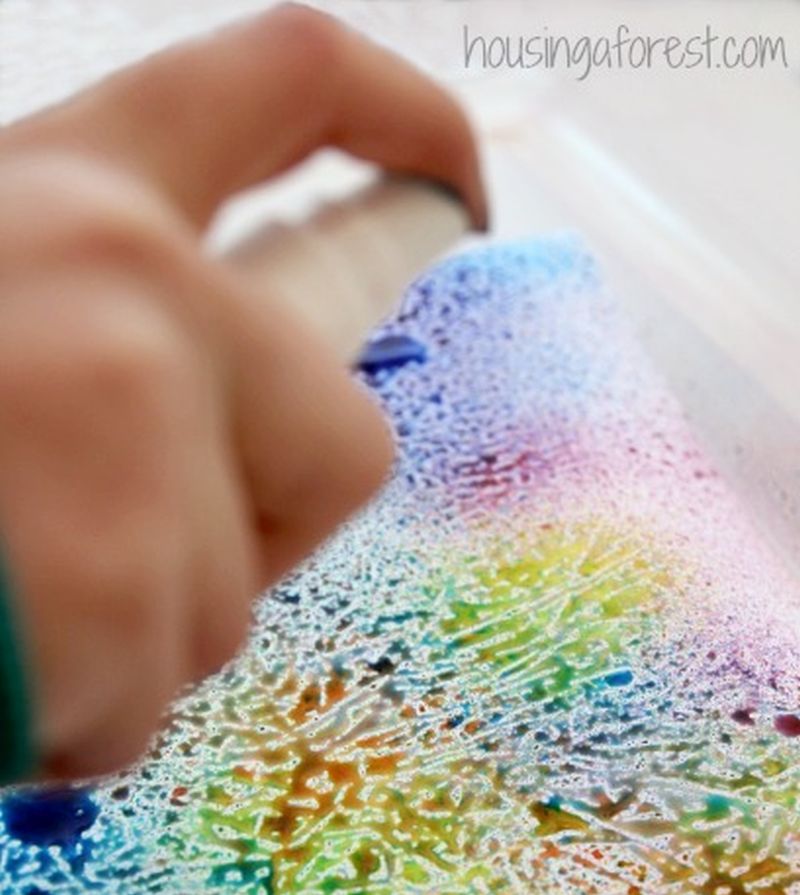
This wax paper experiment is interesting from both a science and art perspective. Ask kids to think about why wax paper behaves differently than other paper they use for art projects.
Learn more: Wax Paper Resist at Housing a Forest
Predict and observe what will melt in the sun
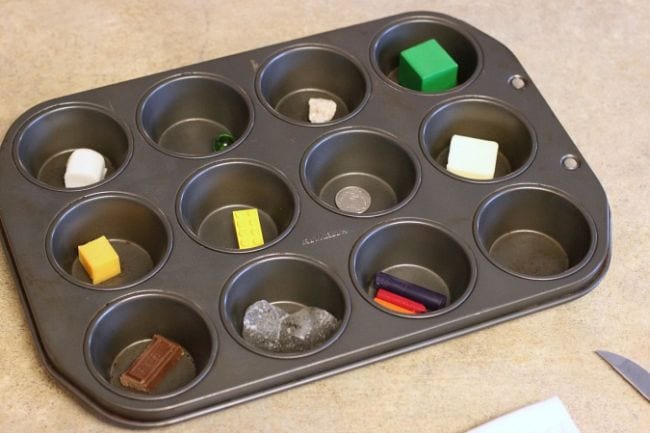
You’ll need a hot sunny day for this preschool science experiment. Help students choose a variety of items to place into a muffin tin and have them predict which ones will melt. Set the tin out in the sun for an hour or two, then bring it in and record your results.
Learn more: Melting Science at Frugal Fun for Boys and Girls
Drop balls to introduce gravity
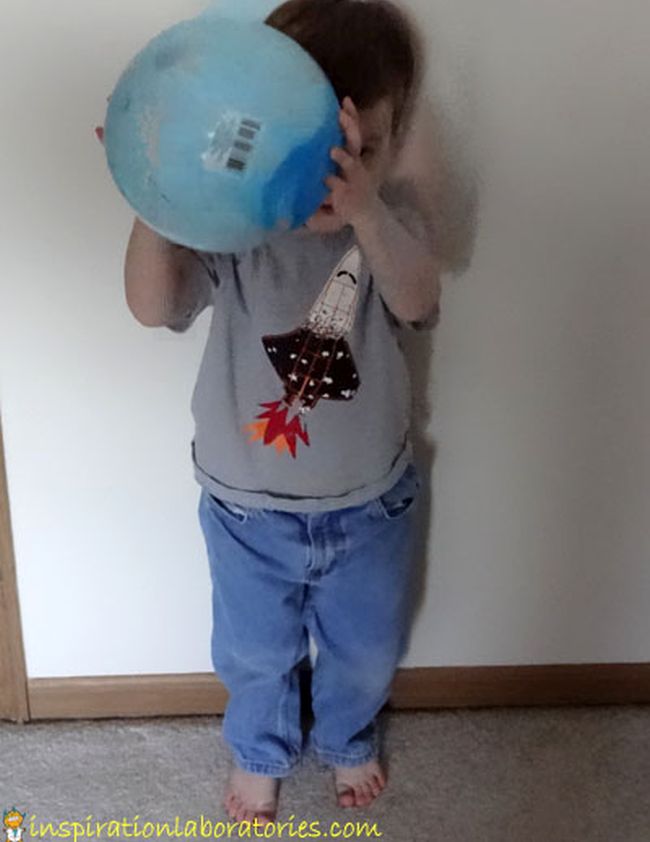
Gravity can be a complicated subject, but all pre-K kids need to understand the basics. Drop balls of all sizes to discover that they all fall in the exact same way.
Learn more: Gravity Experiment at Inspiration Laboratories
Head to the playground to explore gravity and friction
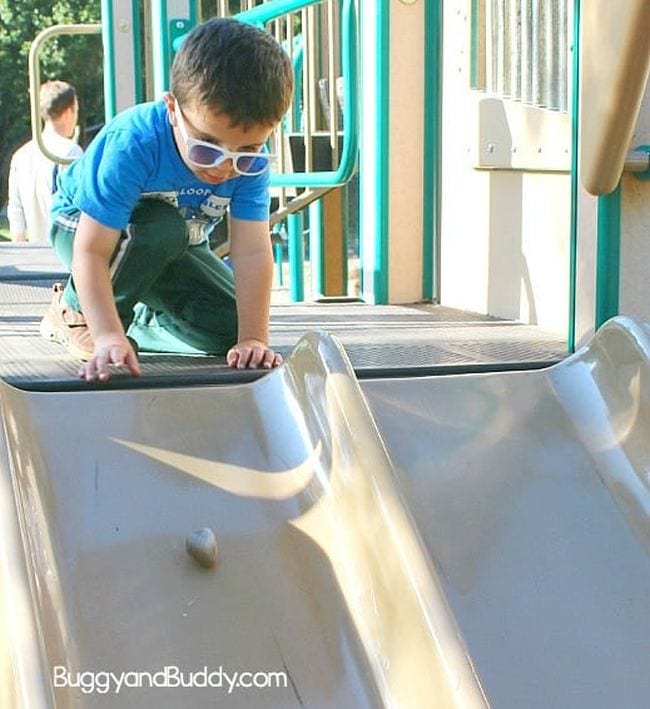
What goes up must come down! A playground slide is the perfect place to help kids understand gravity. This is a good chance to learn about friction too.
Learn more: Playground Science at Buggy and Buddy
Test objects with magnets
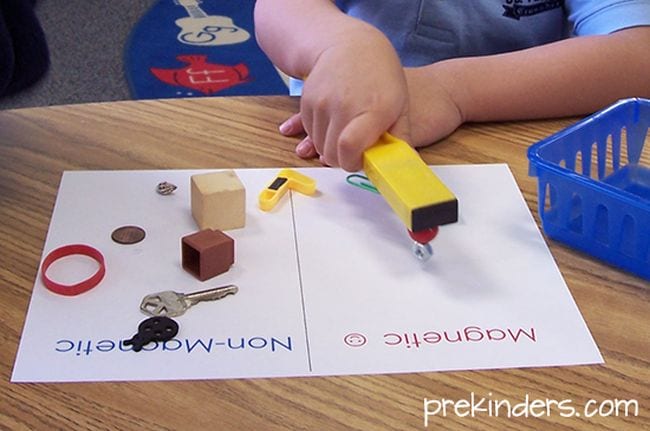
Magnets are undeniably a source of fascination for kids. At this stage, you can worry less about explaining how magnets work and instead just let kids explore which items are attracted to magnets and which aren’t. Sort the items into categories, then see if the items have anything in common.
Learn more: Magnets at PreKinders
See sound waves in action
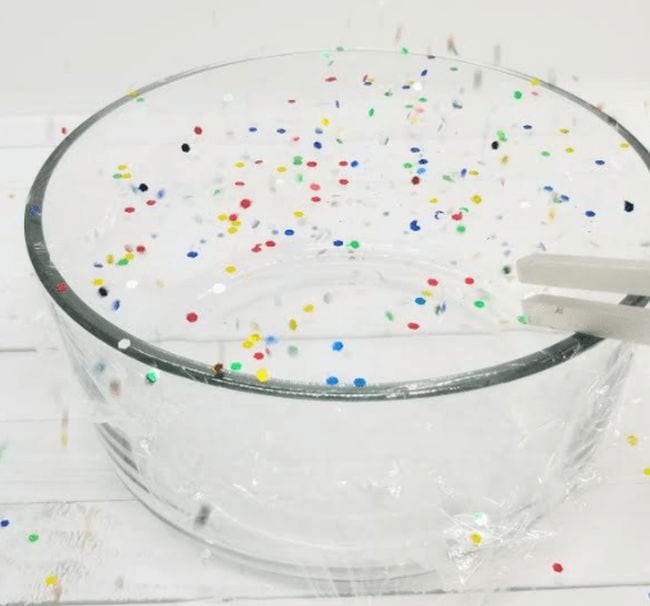
This series of simple experiments lets kids see sound waves at work. Start by making waves with a Slinky , then move on to tuning forks and bouncing confetti.
Learn more: Sound Experiment at Hands On Teaching Ideas
Make an orange volcano
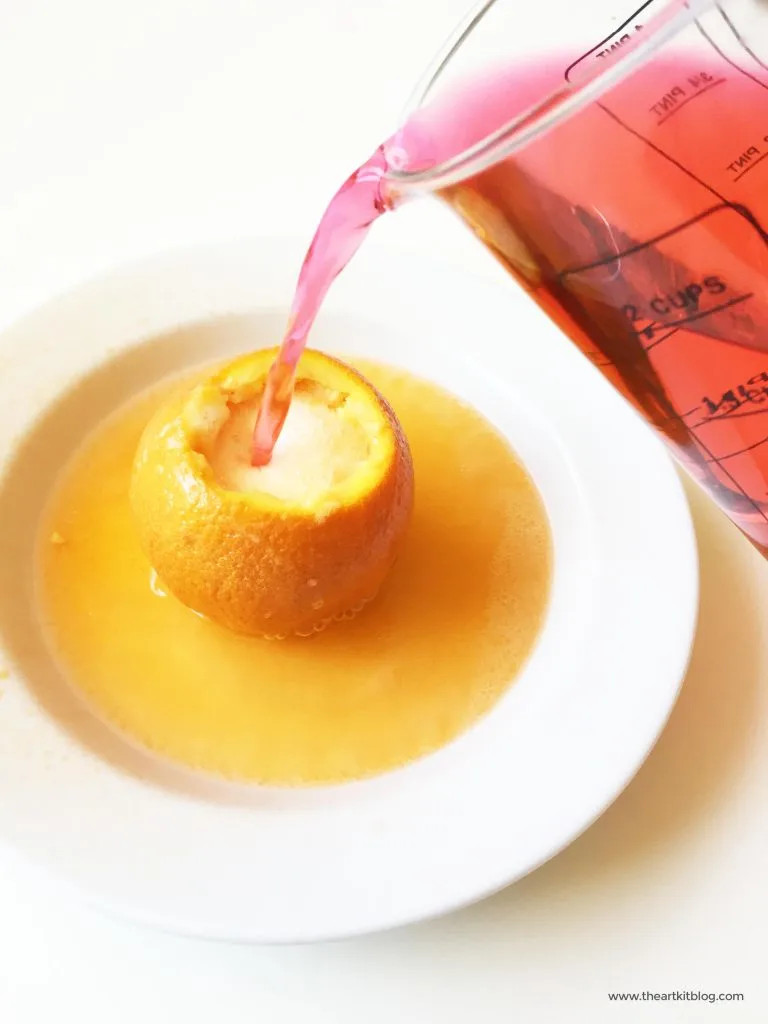
Making erupting volcanoes is a staple of any childhood! We love this easy volcano experiment using an orange, baking soda, and vinegar.
Learn more: Orange Volcano at The Art Kit Blog
Grow delicious rock candy crystals
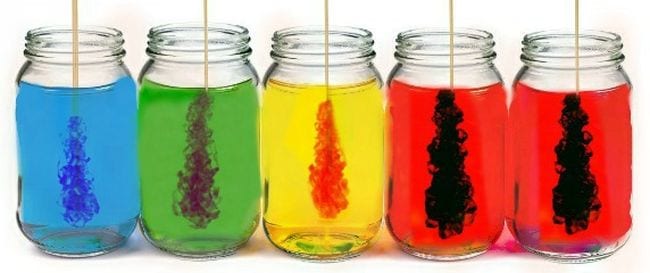
Preschoolers love science activities that involve food. While crystal experiments are a hit with kids of any age, this one is perfect for the young crowd. It requires a little patience, but kids get to eat the yummy results!
Learn more: Kool-Aid Rock Candy at Growing a Jeweled Rose
Move pom-poms with air pressure
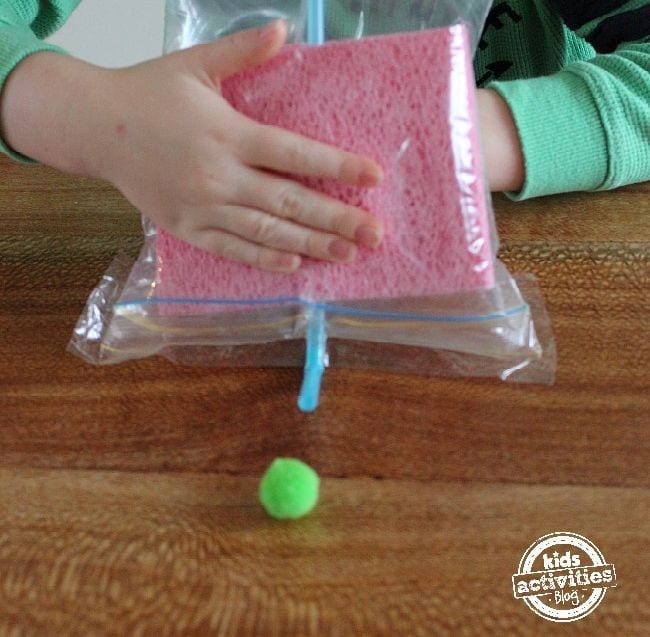
Understanding the idea that air can have enough force to move objects can be a little challenging, but this simple experiment brings that concept to life. We love that this experiment is affordable since most people (especially teachers) already have these materials on hand.
Learn more: Air Pressure Experiment at Kids Activities Blog
Make a balance scale

This simple balance scale is so easy to make yet provides endless opportunities for weighing all kinds of objects. Have kids assemble a scale from a plastic hanger, a few paper cups, and some string, then let them hypothesize which items will be heavier and which will be lighter.
Learn more: DIY Balance Scales at Go Science Kids
Like these science activities for preschoolers? Don’t miss the 30 Best Educational Toys and Games for Preschool .
Plus, get all the latest teaching tips and ideas when you sign up for our free newsletters .
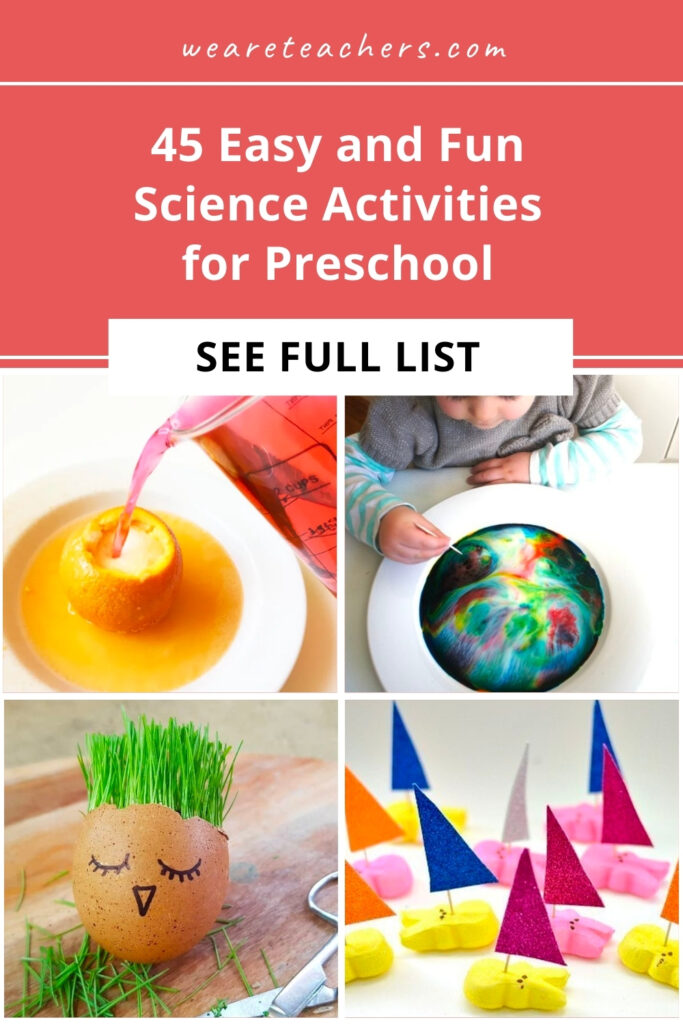
You Might Also Like
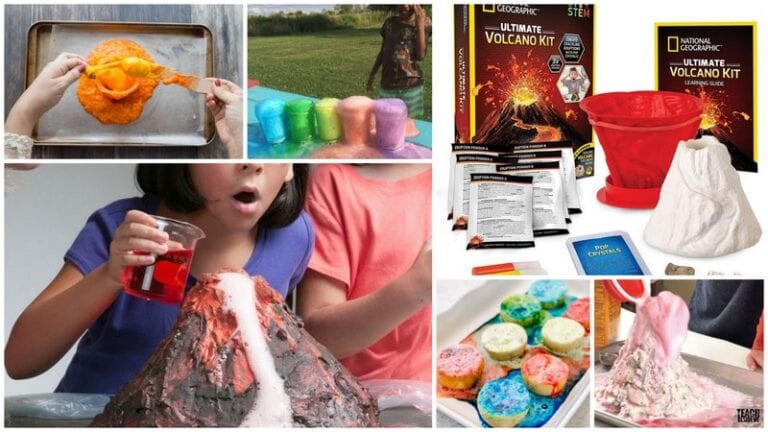
16 Red-Hot Volcano Science Experiments and Kits For Classrooms or Science Fairs
Kids will erupt with excitement! Continue Reading
Copyright © 2024. All rights reserved. 5335 Gate Parkway, Jacksonville, FL 32256

COMMENTS
There are many fantastic science projects to explore for each season to recognize the changing seasons! Explore how polar bears stay warm in the winter. Learn what photosynthesis is in the spring. ... Four seasons of science experiments are perfect for preschool, kindergarten, elementary school, and beyond! Keep your kiddos busy all year ...
Kindergarten science introduces young learners to basic scientific concepts through hands-on activities and simple observations. Here are some common science concepts that kindergarteners may learn in the classroom: Five Senses: Understanding and exploring the five senses - sight, hearing, touch, taste, and smell.
Seasonal Science Activities. Explore simple science concepts with hands-on and easy to set up science activities that represent each time of the year. For example, set up science activities with snow in winter, grow flowers in spring, take the science outdoors in summer and learn about why leaves change color in the fall. Spring Science Activities
Students will read while you discuss the four seasons as a class. Have them glue the book to the top right of the folder. Next up is the "Seasons of Change" assessment. Students will complete the cut and paste activity by sorting each fact under the correct season. Glue the completed activity to the bottom right of the folder.
Monthly STEM Activities. These 12 STEM expriences will help kids connect science, technology, engineering and math to activities in their everyday life. {January} While celebrating the 100th Day of School, practice number literacy with this list of 100 Items to Use to Count to 100. {February} Kids will really enjoy testing their "snow melt ...
Activity. This adventurous art project will send kids on a scavenger hunt for fall materials they can use in their artwork. This craft also teaches kids about seasons. Making Rain. Activity. Help your kindergarten science maven explore the water cycle without getting everything wet. Sun Prints. Activity.
Kindergarten Science Themes by Month. This comprehensive list of kindergarten science projects aligns with each month of the year to make it easy for you to choose a fun science activity that matches the seasons, holidays, and learning themes you are exploring with your children. From understanding the changing seasons and weather patterns, to exploring the wonders of nature, and celebrating ...
Water play is a kindergarten favorite, so use it to engage them in these projects and activities. They make science for kindergarten students to much fun! Change the color of flowers Fun Learning for Kids. Difficulty: Easy / Materials: Medium. This is one of those classic kindergarten science activities everyone should try at least once.
In this fun and easy weather science experiment, we're going to explore why we have seasons. Materials: Medium sized Styrofoam ball from the craft store Lamp with the shade removed Pencil, bamboo skewer, or knitting needle Sharpie or marking pen Instructions: Mark the top of the ball with the letter N. Mark the bottom of the ball with the letter S. Draw a circle around the middle of the ball ...
These activities are designed to be carried out by children working with a parent, guardian or other appropriate adult. The adult involved is fully responsible for ensuring that the activities are carried out safely. Super simple autumn science and fall science experiments for kids. Make spinning helicopter seeds, spicer apple cider and ...
A few ideas for messy science: Taste-Safe Coconut Cloud Dough from Fun-A-Day! Messy Play with Shaving Cream, Cornstarch, and Water from Fun-A-Day! Watermelon Volcano from Twodaloo. Frozen Summer Fun with Lemon Oobleck from Learn.Play.Imagine. Exploding Milk Experiment from Mess for Less.
Step 2: Stir 4 tablespoons of salt into the water. Step 3: Add enough crushed ice to fill the cup, and stir the solution. Step 4: Observe what happens on the outside of the can. Teach kids how to create a marine environment in a bottle with the science project called Bottled Sea: Catch a Wave. Read about it on the next page of science projects for kids: weather and seasons.
You will find winter theme science experiments including slime, fizzy reactions, ice melting, real snow, oobleck, crystal growing, and more. 1. Snow Candy. Learn how to make maple syrup snow candy. Discover the interesting science behind how this simple maple snow candy is made and how snow helps that process along. 2.
Fun and EASY Kindergarten Science experiments, printables, and activites to help naturally curious kids explore, discover, and learn! ... There are so many other things you can explore with kids such as the many types of insects, animal habitats, seasons of the year, famous scientists, constellations (star formatinos), simple machines, and more ...
Kindergarten Lesson Plans. (19 results) Science Buddies' kindergarten science projects are the perfect way for kindergarten students to have fun exploring science, technology, engineering, and math (STEM). Our kindergarten projects are written and tested by scientists and are specifically created for use by students in kindergarten.
This Fall Season Science Unit for kindergarten is chocked full of incredible activities that will make your students experts on the season of fall in no time! Teach your little learners about what people might wear, see, and do in the season of fall. This seasonal science unit is full of teacher materials, lesson content, and bonus resources to ...
The weather is a key kindergarten science concept. With this activity your child will learn about wind direction and create a self portrait, too! Kindergarten. Science. Activity. ... These weather and seasons science activities are the perfect excuse to get your stir-crazy kids out of the classroom or house with activities such as cloud ...
The 4 seasons. Learn the 4 seasons: fall, summer, winter and spring. Words for seasons. Match the season to activities and conditions. Seasonal stuff. Circle the seasonal clothes, items or activities. Seasons and months. Match the seasons to the months of the year.
If you're looking to grab all of the printables in one convenient place plus exclusives with a spring theme, our 300+ page Spring STEM Project Pack is what you need! Weather, geology, plants, life cycles, and more! PASSION for SLIME. Fantastic spring science activities for preschool, elementary, and middle school includes plants, weather ...
How To Make Shaving Cream Rain Clouds. Fill your glass or jar 3/4 of the way full with water. Add shaving cream to the top. This is our fluffy cloud. Mix a little blue food coloring with some water. Again, this is option, but it makes the rain much easier to see. Have your child add drops of the blue water to the cloud.
Seasonal Changes. Quality Assured Category: Science Publisher: Sigma Science. This activity helps illustrate seasonal changes and how daylight length change over the course of a year. It contains a 4 seasons weather disc template for children to make. The disc highlights 4 different times of the day and what may be observed at these times ...
Founded in 2001 by early childhood educator Vanessa Levin, Pre-K Pages has been providing science-backed, hands-on, standards-based curriculum and teaching resources for over 20 years. Our mission is to elevate early childhood education as a profession, and to provide the leadership, support, and resources pre-k and preschool teachers need to ...
Mix up some "magic" milk. Laughing Kids Learn. Difficulty: Easy / Materials: Basic. A drop or two of dish soap will make food coloring dance and swirl across the surface of a shallow bowl of milk. Preschool science experiments often seem like magic, but this one is all about surface tension and chemical reactions.